

Canoe Trip Meals 101: Discover the Best Canoe Camping Meals
Canoe camping, also known as backcountry camping, is an adventure where you travel by canoe to a remote destination to find your campsite.
Unlike car camping, canoe camping involves being out in the wild with limited resources . There is no running water or electricity, meaning you must bring everything you need to make your canoe trip meals, including all cooking gear.
It is critical to plan your canoe camping meals to ensure you pack enough food to last your whole trip without carrying too much weight.

For all my camping trips over the years , I came up with canoe trip food ideas according to the trip duration, dietary requirements within the group, and the resources available.
For example, while on a yurt camping trip in Tobermory , we could use a BBQ and cooler. However, on backcountry camping trips in Algonquin Park , we had no equipment except for the fire we made and a camping stove. Therefore, I have come up with plenty of ideas for food to bring camping with no cooler.
Therefore, this article will take a look into the necessary preparation required for canoe trip meals.
If you are planning a canoe trip, make sure you check out my backcountry camping guides – you can find all my other camping articles here.
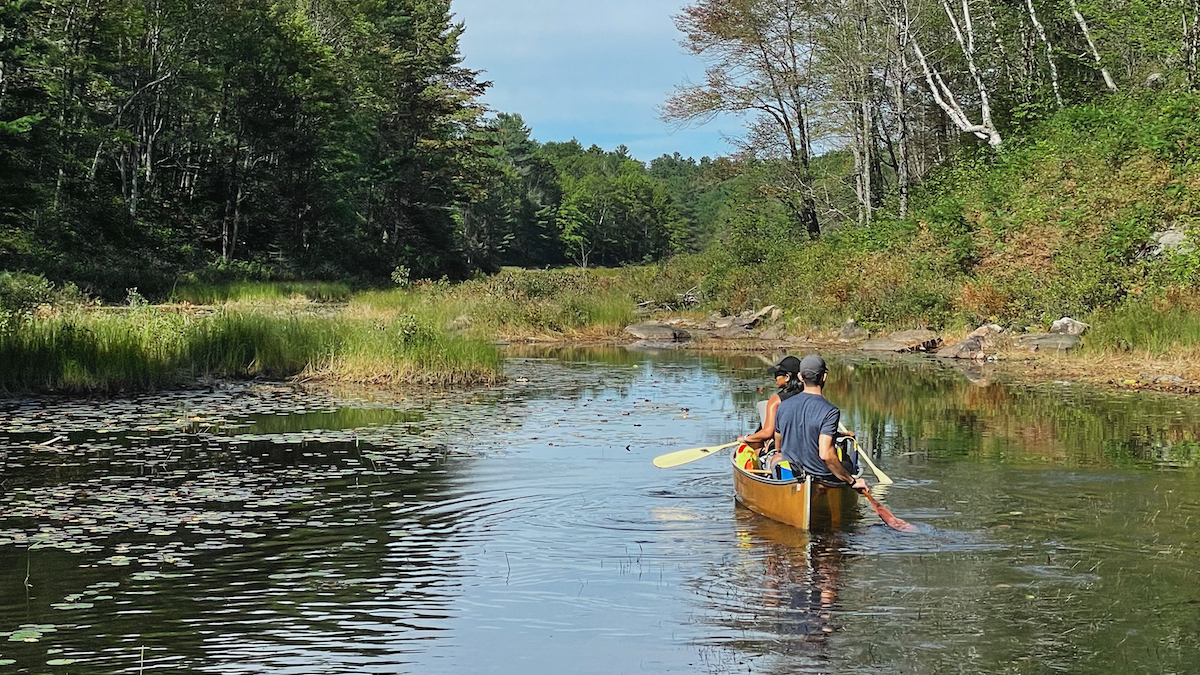
FREE Canoe Camping Packing List
Sign up to receive your free checklist to prepare you for your next backcountry camping trip.
Thanks for signing up!
You will receive an email with your freebie in the next 10 minutes.
Important Considerations for Planning Your Canoe Trip Menu

You need to keep your body nourished during a canoe trip so you have enough energy to paddle and hike throughout your camping adventure.
It is important to bring foods that are high in energy , but also non-perishable . You also want to stay fuelled on your canoe trip, but still be able to carry the weight.
There are several important considerations to help you choose your backpacking foods. These include the trip duration, the equipment available, the amount of food you want to consume, and any dietary restrictions.
Trip Duration
Trip duration is important to consider when preparing your canoe camping menu because it determines the amount and type of food you need to bring. The longer the trip, the more food you will need to pack.
However, if your backcountry camping trip exceeds three days, you should bring dehydrated meals and non-perishable snacks. This type of camping food is the lightest and will not spoil.
If you are going backcountry camping, bring a camping stove that is fully operable in the wilderness.
At some campsites, you can use the fire pit to cook some food. However, it is not always possible to use a fire pit due to fire restrictions or wet weather conditions. Therefore, you need to be prepared for all occasions.
Read about what else to pack for a backcountry camping trip in this article.
Amount of Food

The amount of food you need to bring depends on how many people are in your group, the number of meals and snacks you plan to eat each day, how much you can carry, plus the duration of your trip (as previously discussed).
On all my camping trips, we eat three full meals a day , plus snacks , and sometimes a dessert . Our food barrel is heavy at the start of the camping trip, and it reduces in weight over the days as eat the food.
However, our trips rarely last longer than three days; therefore, we can get away with using fresh food at the start.
For the latter part of the trip, we rely on foods that do not require chilling, such as cured meats and dried vegetables.
While it may be tempting to bring a light menu for your camping trip, you should consider the amount of physical activity you will be doing. You will likely be expending a lot of energy while paddling and need extra food to keep your energy levels up.
Dietary Restrictions
Before planning your canoe trip meals, check with all group members if they have any dietary restrictions. It is usually easier for all members to eat the same diet , rather than packing separate meals.
For example, if you have a group member who needs a gluten-free diet, bring gluten-free pasta for the whole group, or opt for a naturally gluten-free alternative, such as rice or quinoa.
Otherwise, you can bring dehydrated foods that each member has chosen to suit their requirements.
Picking the Right Food for Canoe Trips

As explained previously, the best foods for camping are non-perishable, lightweight, and high-energy foods.
When camping menu planning, remember that space and weight are limited .
Packing compact and nutrient-dense foods is critical, so consider foods that are easy to prepare, such as dehydrated or freeze-dried meals, and snacks like trail mix and energy bars.
Carbohydrates are particularly important because they provide the body with energy for physical activity. Good sources of carbohydrates include pasta and rice.
Finally, consider the perishability of the food you bring.
Foods prone to spoilage, such as fresh fruits and vegetables, may not be suitable for long canoe trips. Instead, consider dried fruits and vegetables. Additionally, bread is a good carbohydrate, but it is bulkier and will expire quicker than rice or pasta.
Non-Perishable Camping Meals

Non-perishable food items are those that can be stored at room temperature for an extended period without spoiling. This is important because you will not have access to refrigeration on a backcountry camping trip.
Suggestions for Non-Perishable Canoe Food
Here are some of the best canoe trip meals and snacks that are quick to prepare and and lightweight to carry.
- Peanut butter and jam/jelly wraps
- Instant oatmeal packets – good canoe trip breakfast option
- Packaged pasta kits (e.g. just add water mac & cheese)
- Instant noodles
- Granola bars
- Energy bars
Dehydrated Meals for Camping Trip
Dehydrated meals are a great option for canoe camping due to their convenience, ease of preparation, and portability. They are cooked using boiling water , which is suitable for those who want a hot meal without too much preparation time.
Dehydrated meals also have a long shelf life and are non-perishable, making them ideal for longer canoe trips where fresh food is not a viable option.
You can also purchase freeze-dried meals.
Recommended Brands for Dehydrated Meals

I have tested and recommend the following brands of dehydrated meals:
• Firepot • Peak Refuel • Mountain House • Backpacker’s Pantry • Good To Go • Alpine Aire
Dehydrated Meal Recommendations
If you are looking for specific canoe camping food ideas, here are some of my favourite dehydrated meals.
Dairy-Free Camping Meals

If you are lactose-intolerant , it is a good idea to take this seriously while backcountry camping, given the lack of facilities.
It is possible to bring lactose-enzyme products (such as Lactaid) , but it is easier to plan a canoe trip menu that lacks dairy.
A dairy-free camping menu is also beneficial to avoid any bloating or discomfort.
You can swap out cheese with nutritional yeast to give a similar flavour in foods like homemade pesto that would normally include parmesan (as shown in the adjacent image).
Suggested Dairy Free Camping Meals and Snack Ideas
Here are some canoe trip meal ideas that are dairy-free or lactose-free.
- Oatmeal, dried fruit, and nuts (great breakfast option)
- Hummus and veggie wraps
- Pasta with tomato sauce
- Beef stir-fry or fajitas (for the first day of camping)
Suggested Canoe Camping Recipe
Below is one of my favourite canoe trip recipes that makes a great dinner choice.
Given the non-perishable ingredients used, it is a good option for the latter part of your canoe trip if you plan to cook all your meals from scratch. Alternatively, it is a good choice for your first day of camping if you eat dehydrated meals later in the camping trip to travel light.
Sun-Dried Tomato and Chorizo Orzo
For two people
- 3/4 cup orzo (uncooked) – use quinoa for a gluten-free substitution
- 100g of cured chorizo – (or between ½ to 1/3 of the package and use the rest for wraps/sandwiches/eggs)
- 6 pieces of sun-dried tomatoes – (not in oil)
- 1 stock cube – one is good for 2 to 4 people (chicken is my favourite)
- Splash of olive oil (bring a small portion in a portable container)

You can scale the recipe up for additional people.
- Gently heat a splash of oil in a pot or saucepan.
- Add diced chorizo to the pan and allow it to sweat.
- Add the dried orzo and stir until the orzo is coated in the oil from the chorizo.
- Add in chopped sun-dried tomato.
- Add purified drinking water along with the stock cube (use double the water to orzo). Stir until the stock cube dissolves.
- Let it cook for around 10 minutes. Turn off the burner once the water is soaked up and the orzo is soft.
Equipment Required for Recipe
- Saucepan ( stove and cookware bundle available here )
- Folding stirring spoon/spatula ( camping utensil set available here )
- Chopping board
- Insulated mug/jug
- Camping stove
- Camping plates/bowls
- Small oil container
Preparing Your Canoe Camping Meals

Read on to learn more about how to pack food for camping to be efficient and organised.
Your canoe camping menu should be based on the equipment you will be bringing with you.
Do not pack food that requires chilling unless you have a cooler, which is not recommended when backcountry camping .
Alternatively, you can freeze some of your protein , such as chicken or beef, so it stays chilled and will slowly defrost during day one of the trip. With this, you can eat some fresh food on your first night of camping.
Typical equipment for a backpacking camping trip includes a portable stove, fuel, saucepan, frying pan, utensils (forks, knives, spoons), and a sharper knife for cutting.
You should also pack the following items: biodegradable dish soap , a sponge, and trash bags. These items will assist with proper cleaning and waste disposal.
Check out this stove and cookware bundle (including Sauce Pan, Deep Dish Bowls, two Insulated Mugs, Strainer Lid, and two Folding Sporks) and this camping utensil set (including Folding Spoon, Spatula, Ultralight Cutting Board, Salt & Pepper Shaker, Squeeze Bottle and Dish Towel).
Read this article on packing for a backcountry camping trip to guarantee you pack all the essentials.
No Cooler Camping Meals
One of the biggest challenges of planning meals without a cooler is that you should select foods that will not spoil without refrigeration. Many fresh foods, such as meats, dairy products, and some vegetables, are not recommended for camping.

Without the ability to store meats and dairy products, you may need to rely on canned or dried proteins like beans or cured meats.
Pack some meal and snack options that do not require refrigeration, such as:
- Instant ramen noodles
- Canned soups and stews
- Pasta with chorizo and sun-dried tomatoes (see the above recipe)
- Peanut butter sandwiches
- Dried fruit and nut mix
- Dehydrated meals
- Crackers or rice cakes
What are Good Snacks for Camping?
- Trail Mix (including nuts and seeds)
- Granola Bars
- Fresh Fruit, such as apples
- Dried Fruit, such as apricots
- Energy chews or bars (Honey Stinger Organic Energy Chews or Clif Bloks Energy Chews)
Staying Hydrated While Canoe Camping

It is important to replace the fluids lost while sweating from physically demanding camping activities.
Adding electrolyte tablets to your water bottle will help you replenish electrolytes and other fluid requirements to ensure hydration.
Nuun Electrolyte Tablets are my favourite brand and are available in Canada and the United States. I like grape and lemon-lime flavours.
Make sure you use treated, potable water . See the methods below for how to accomplish this while camping.
Water Treatment Methods for Canoe Camping

During most backcountry camping trips, you need to find water to drink, meaning you will collect water from natural water sources, such as lakes or rivers.
You cannot drink the water directly from a lake because you can get beaver fever ; therefore, you must treat the water first.
The two most common ways of treating water are by water gravity bag or water purification tablets.
Water Gravity Bag
A water gravity bag works by using gravity to filter water through a filter cartridge, removing bacteria and other contaminants.
This method is easy to use; however, it is the more expensive option.
Water Purification Tablets
Water filtration tablets use a chlorine solution to kill bacteria in the water. This method is cheaper and easy to carry but can make the water taste “off”.
Storing and Transporting Food
There are numerous methods for storing food that to keep yourself safe while camping. The following tips will help you avoid attracting wildlife while camping and efficiently pack your food.
1. Use Bear-Safe Storage Containers

Firstly, store your food products in bear-resistant containers.
You can use a food barrel , a bear bag , or a bear canister .
Certain containers can be hung from a tree, which makes it more difficult for a bear to get hold of its contents.
Otherwise, store your canister at least 30 metres (100 feet) from your campsite . The containers are designed to be difficult for bears to open.
Canoe Camping Food Storage Options
• Food Barrel • Bear Bag • Bear Canister
2. Pack Fewer, Larger Bags
Pack your items in as few storage containers as possible to help with transporting your food.
If you need to portage (carry your canoe and camping belongings to the next stretch of water), it will be easier with fewer, big items to carry. Plus, it can help when distributing the weight of items within the canoe.
3. Keep Odours Contained
Within the containers, it is good practice to keep individual food items and toiletries that are scented in sealed bags to minimise smells.
For example, once you have opened a package of cured meats, reseal it in a Ziplock bag.
4. Keep Your Campsite Clean

Ensure your campsite remains clean by securing waste in a plastic bag and placing that in your bear-proof container. You also need to wash your cooking and eating utensils straight after mealtimes.
Do your dishes away from your main camping area and dispose of the water in a hole away from water sources. You do not want to contaminate lakes or rivers with your dirty dishwater.
You can do this using a collapsible sink .
Conclusion – Canoe Trip Food
In conclusion, meal planning for canoe camping can be challenging, but you will be glad you put in the preparation.
Dehydrated meals, along with other non-perishable and no-cook options, are convenient choices for backcountry trips. The main benefits of dehydrated meals are that they help to keep your bags light and feed you nutritious, warm meals no matter how long your camping trip is.
It is important to pack out all your trash and food waste to keep the campsite clean and preserve the wilderness. Adhering to the Leave No Trace principles is essential for responsible camping, which ensures minimal environmental.
So, be mindful of what you pack, respect the environment , and enjoy the canoe camping with delicious meals.
Samantha is the founder of Continuous Roamer, a travel website focusing on adventure and the outdoors.
With a love for adventure and the great outdoors, Samantha shares tips on skiing, luxury safaris, camping, and finding hidden food gems in different destinations.
With over 20 years of skiing experience across Europe, North America, and beyond, she's also an expert in luxury accommodations and experiences.
Whether camping in Canada or dining in a Michelin-starred restaurant, Samantha always seeks out the best experiences and accommodations, and her blog highlights the best of them for her readers.
Samantha is currently living in London.
Similar Posts

Rock Lake Algonquin: First-Time Backcountry Camping Guide
Rock Lake Algonquin Park in Ontario, Canada is a beautiful destination for backcountry camping in Ontario. It was the first…

Canoe Trip Pack List: 62 Essentials for Backcountry Camping
Are you planning a backcountry camping trip in North America this summer? I have been on several canoe trips in…

Complete Guide to Algonquin Portages & Backcountry Camping
As someone who has spent the past four summers embarking on numerous backcountry camping trips in Algonquin Park, I have…

Magnetawan Lake Access: How to Plan Your Backcountry Adventure
Ontario Canada has some of the best camping locations in North America because Ontario is home to the magnificent Algonquin…

Yurt Camping Tobermory: Everything You Need to Know For a Memorable Trip
Before I went yurt camping in Tobermory I tried to do some research online. Other than what Parks Canada, the…

How to Plan Food for a Canoe Camping Trip
By sarah coupal & aaron owens mayhew, ms, rdn, cd, updated january 4, 2024.
This post may contain affiliate links.
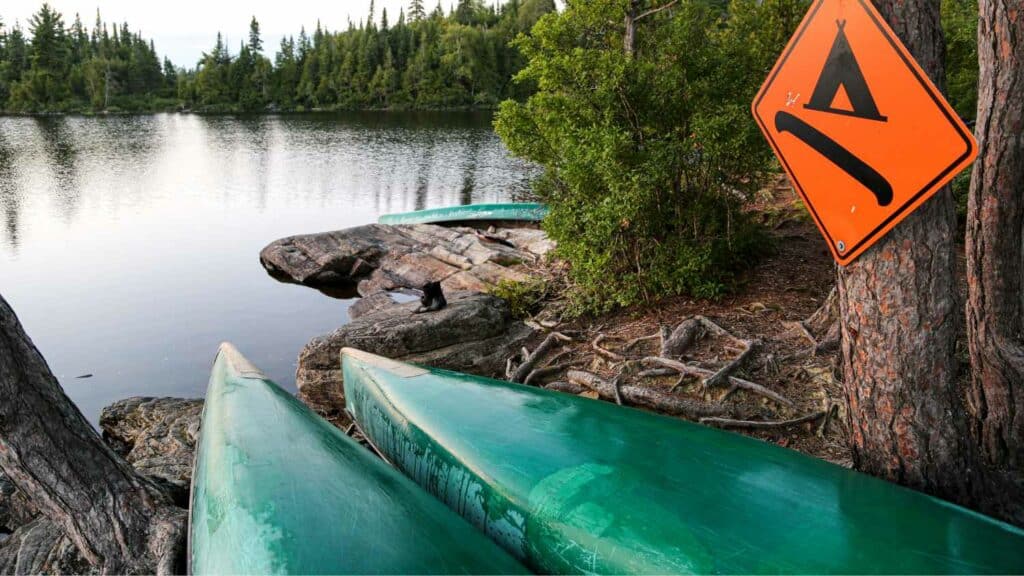
Factors to Consider | Amount of Food to Pack | Which Foods to Bring | Canoe Trip Hydration
Curious about packing food for canoe camping trips? Are you looking to transition from day paddles to overnight trips? Whether you are an experienced paddler looking to improve your nutrition or just curious about what canoe camping is all about, this article is for you!
Here at Backcountry Foodie, our main focus is food to fuel your hiking and backpacking trips. That said, the food for a paddling trip (canoe, kayak, or SUP) is not too different. The fact that you don’t have to carry everything on your back might even give you more flexibility in your meal planning. If you’re a foodie and have never been canoe camping, this post might convince you to try it!
What is Canoe Camping?
Canoe camping trips are multi-day trips where you paddle between campsites on lakes and rivers. All of the gear you need is carried in your boat. When lakes and rivers do not connect, you must portage (carry) your boat and all your gear on trails or roads.
What Should I Consider When Planning Food for a Canoe Camping Trip?
First, think about the length of your trip. This will determine how much food you need to pack and the types of food you can bring. For shorter trips, you may be able to bring some fresh food. For long trips, space, weight, and the shelf life and durability of your food will be more of a concern.
You should know the mileage of your route and your average paddling speed . From this, you can calculate the hours per day you will be paddling and portaging (if applicable). This is important because you burn significantly more calories when exercising than when sitting at camp or floating down the river.
Think about the weather as well. Being on open water means you will be more exposed to wind, which could make it harder to paddle. Shivering can burn up to 400 extra calories per hour if you get wet from rain or capsizing.
Finally, how will you store your food? Some people have canoe barrels or wanigans , which are food storage methods designed specifically for canoe tripping. You can also use a backpacking bear can or do a classic bear hang. As always, check the food storage regulations for the area you will be camping in.

How Much Food Should I Pack for a Canoe Camping Trip ?
Well, it depends.
Many factors affect how much food you must pack for a canoe trip. Like backpacking, the best way to dial in on the fuel your body needs is to keep a food journal with the following details:
- Conditions of the trip
- What you ate
- How you felt
- Any other details you think are relevant
You can then use this information to plan for future trips, ensuring that what you pack is personalized to your needs.
Here are some general guidelines to think about when deciding how much food to pack:
- You could burn anywhere from 200-700 calories per hour for every hour of paddling. This wide range depends on your weight, fitness level, speed, and water conditions.
- Long portages will have a larger impact on your calorie needs compared to easy paddling for the same amount of time.
- For low-intensity paddles, aim to eat 30-60 grams of carbs per hour. For more intense exercise, you should be eating 60-90 grams of carbs per hour. See our Best Backpacking Foods for Energy post for more information about carbohydrate serving sizes and snacks.
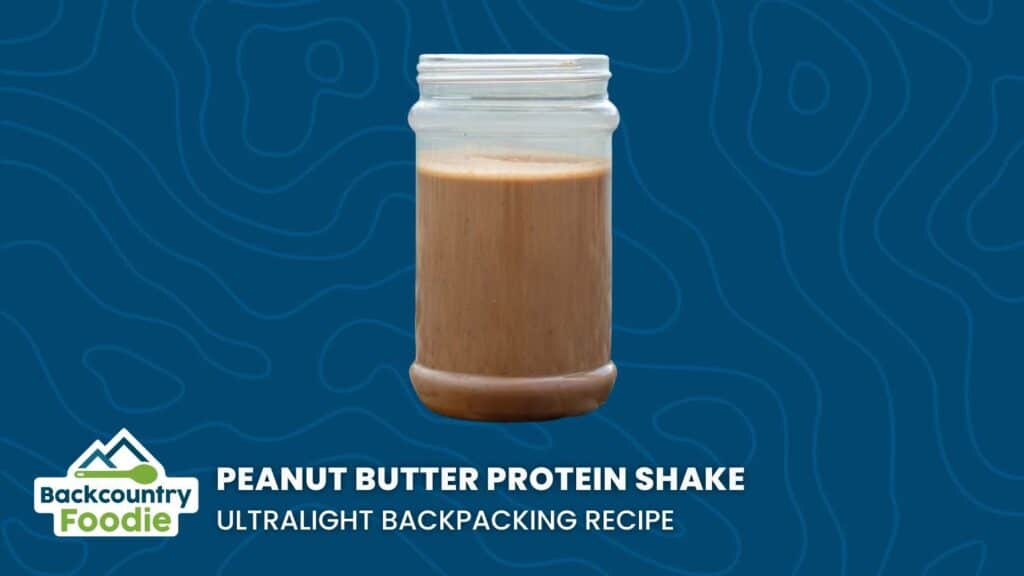
Are you also a day hiker or backpacker?
Here’s a great resource for determining calorie goals.
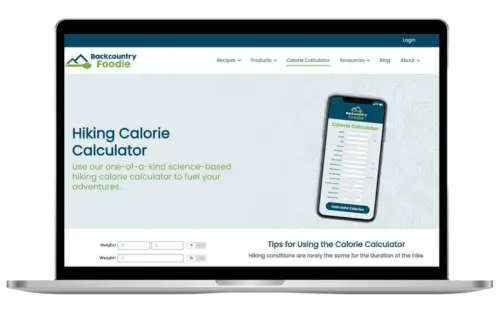
We created a one-of-a-kind hiking calorie calculator that takes all of the guesswork out of deciding how much food to pack for your adventures.
It’s a FREE resource, too!
Click on the link in the header bar or the button below.
What Food Should I Bring on a Canoe Camping Trip?
Choosing which foods to bring on your trip depends on personal preference and the details of your trip.
Short, Laid-back Trips
For short trips with few or no portages, many people opt to bring fresh foods similar to what they would eat at home. However, if you are planning to get into some serious backcountry cooking on your trip, we would not recommend bringing fresh meat, fish, eggs, or dairy products (with the exception of hard cheeses). These foods should not be kept unrefrigerated for more than 2 hours. Dry milk , powdered eggs , tuna or chicken packets, and jerky are good alternatives. Some foods also do not pack well (e.g., bananas), and the size of your food storage container (canoe barrel, bear bag) will determine how much you can pack.
Some fresh foods that keep well include:
- Potatoes, carrots, peppers, onions, cabbage
- Apples & oranges
- Sharp cheddar cheese
Leave No Trace
If you plan to bring fresh foods on your trip, make sure to pack out all food scraps to dispose of when you get home. It can take an orange peel up to 6 months to decompose! Also, make sure to wash your dishes away from water sources, even though it can be tempting to give them a rinse directly in the lake or river.
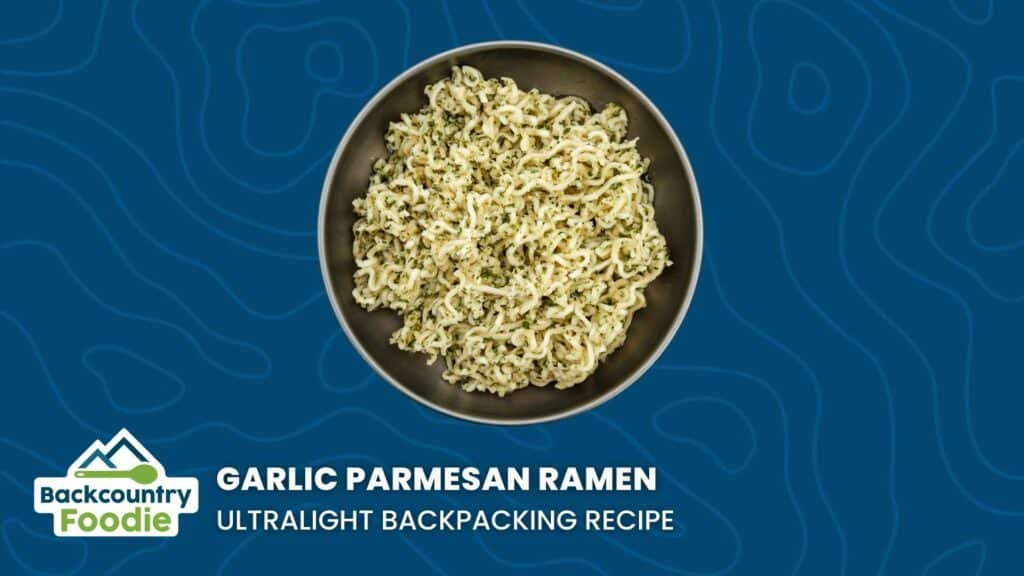
Longer, More Strenuous Trips
For multi-day trips and trips with long portages, we would recommend mostly dried foods. You’ll probably be trying to pack a lot of food in addition to all of your other gear. Backcountry Foodie has tons of great recipes that are low-volume, lightweight, and loaded with nutrition. These foods will last for even the longest trips.

Regardless of the length of your trip, make sure to pack plenty of snacks. Plan to eat every 30-90 minutes when you are actively exercising, depending on the intensity of your activity.
Don’t have time to prep DIY meals?
Not to worry! We offer a variety of Backcountry Foodie meals and meal replacement drink options in our shop . Here are just a few…
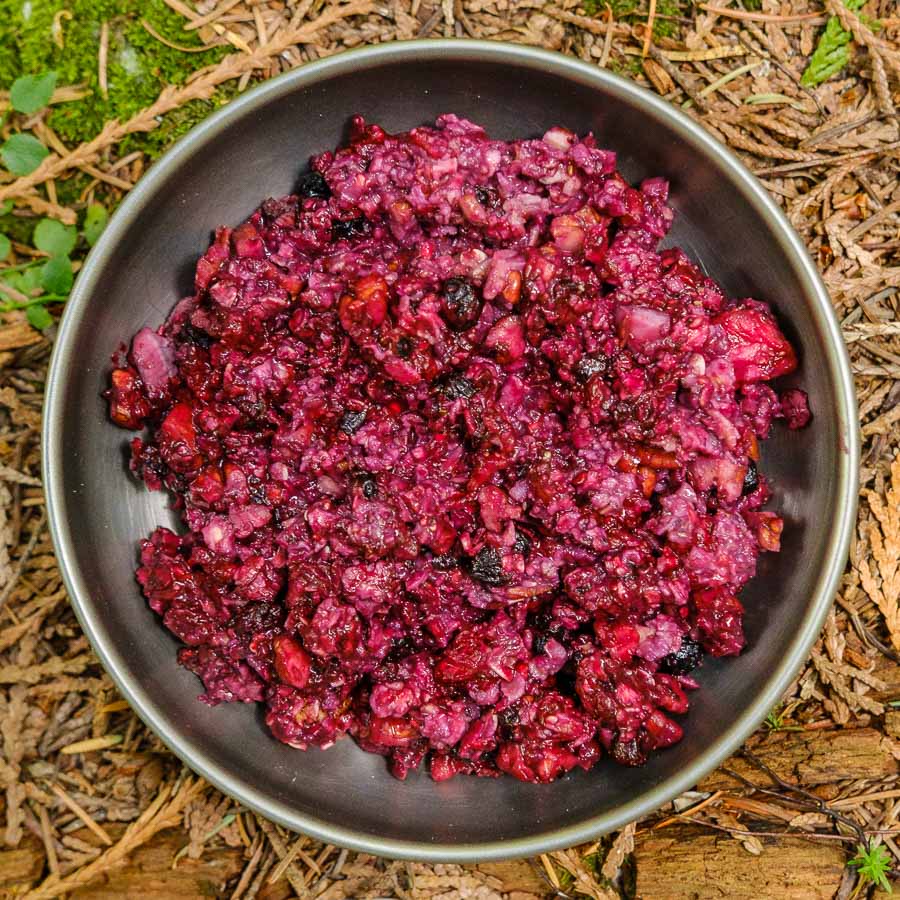
Sign-Up & Save!
Subscribe to our weekly newsletter & save 10% off Backcountry Foodie memberships.
Your email is safe with us. We don’t like spam either.
Hydration while Paddling
Hydration is an important part of fueling for paddling. You are often very exposed to wind and sun and might not notice how much you are sweating if your sweat evaporates quickly.
The amount of water you should drink per hour varies depending on how heavy of a sweater you are. For light sweaters, 0.5-1 liter of water per hour is a good estimate, whereas heavy sweaters can lose up to 2 liters of water per hour.
You also need to eat foods with salt to stay hydrated. You can lose 100-4000 mg of sodium (salt) per hour, depending on how much you are sweating and how salty your sweat is.
Some salty snacks to consider packing include:
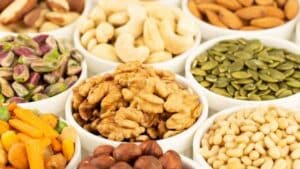
- Trail mix/salted nuts
- Dried hummus
- Triscuits or other crackers
As you might have noticed, canoe-tripping food is not too different from backpacking food. The best foods to pack vary depending on your trip and personal preferences.
Putting It Together
Keep in mind these factors the next time you are planning a canoe trip:.
- Length of your trip
- Miles you will travel each day
- Speed you plan to travel
- Food storage
- Personal needs and preferences
- Leave No Trace principles
Need Help Planning Food for Your Trip?
Backcountry Foodie is your go-to resource for more than 200 dietitian-created backpacking recipes and a one-of-a-kind automated meal planning tool. The meal planner even creates itemized shopping lists for you! Meal prep has never been easier.

Let us do all the heavy lifting for you !
Skip the hassle of resupplying during your hike . Let Aaron Be Your All-In-One Personal Chef, Shopper, Coordinator, And Dietitian!
DISCLOSURE: Some of the links on this page are affiliate links, which means we may receive a modest commission if purchases are made through those links. This adds no cost to our readers and helps us keep our site running. Our reputation is our most important asset, so we only include links for products we use ourselves.
Did you find this post helpful?
Pin it and share it with your fellow hikers..
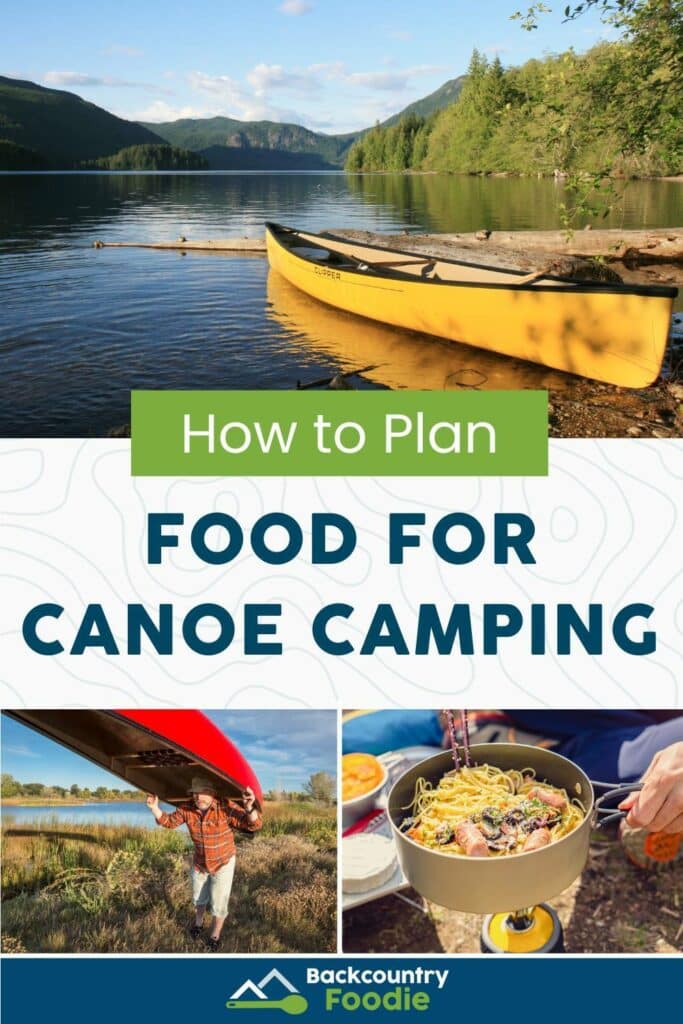
Are you new to our blog?
Consider checking out these posts:.
- Best Backpacking Foods for Energy
- What to Eat & Drink After Hiking: Our 3 Favorite Tips
- Backpacking Nutrition: Fueling Further Using the Goldilocks Approach
- Our Favorite 100 Grocery Store Foods
ABOUT THE AUTHORS:
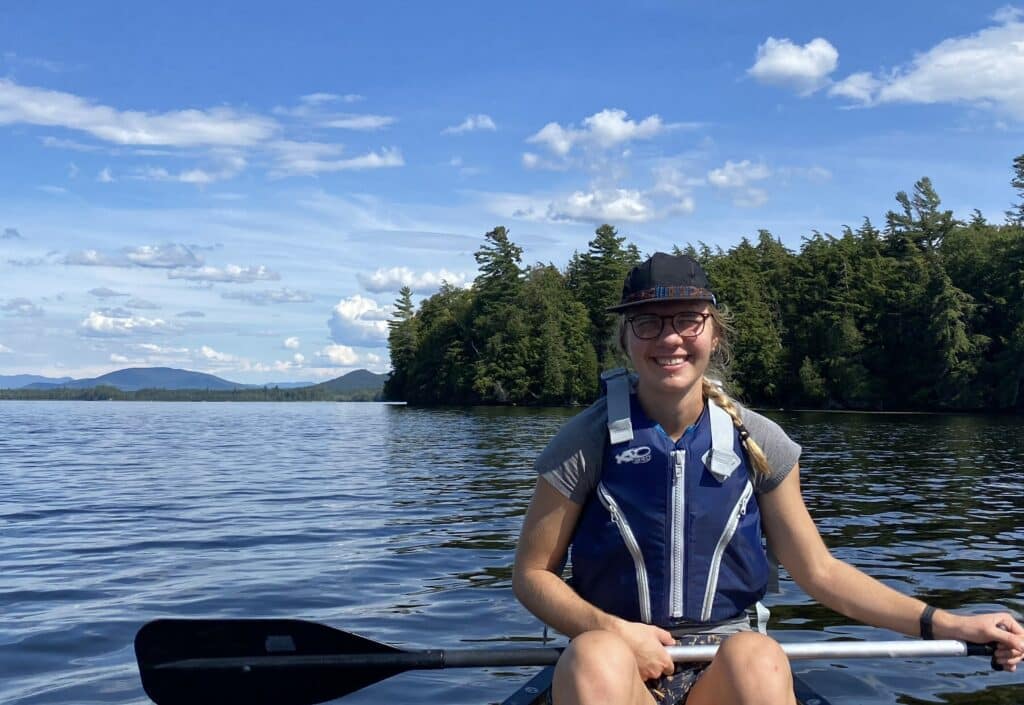
Sarah Coupal was a Dietetic Intern at Illinois State University mentored by Aaron when this post was originally written. She holds a BS in Nutritional Sciences from Cornell University and spent two summers as the Trails Food Coordinator for the Adirondack Mountain Club. She enjoys hiking/backpacking, canoeing, cross-country skiing, and running in her free time.
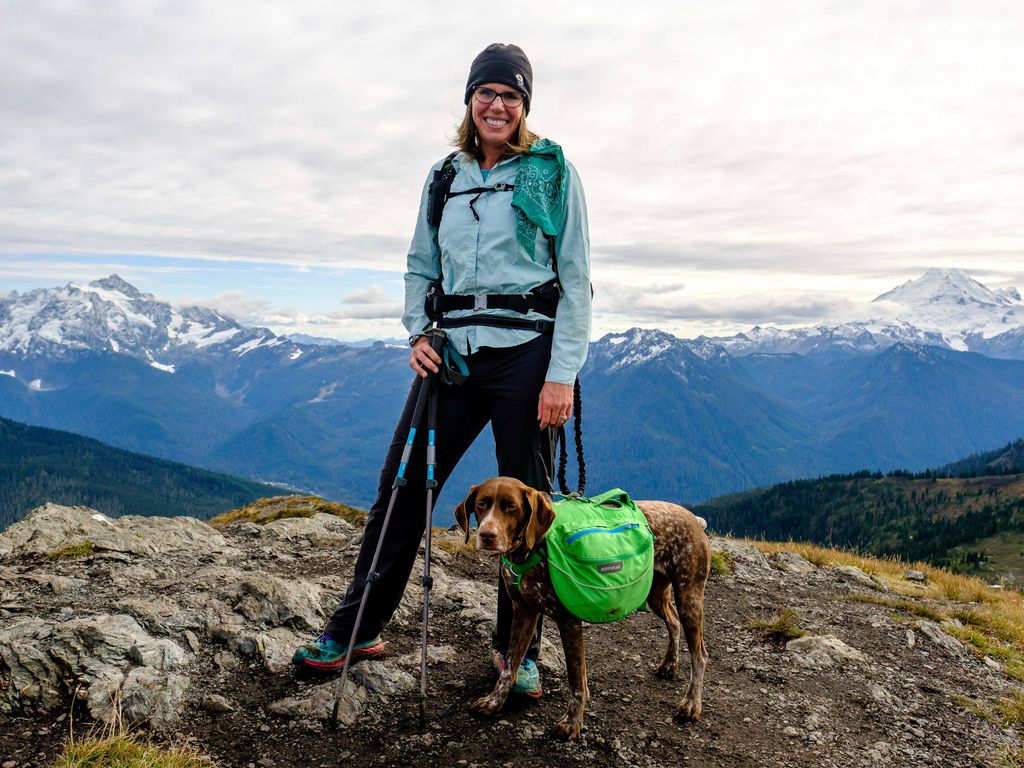
Aaron Owens Mayhew, MS, RDN, CD, is a registered dietitian and ultralight long-distance backpacker with over 20 years of nutrition and backpacking experience. She’s also the founder and owner of Backcountry Foodie , an online ultralight recipes and meal planning platform for backpackers. She also enjoys teaching hikers about backpacking nutrition via virtual masterclasses , YouTube videos , and podcast episodes . You can follow Aaron’s adventures in the kitchen and the backcountry via Instagram and Facebook .
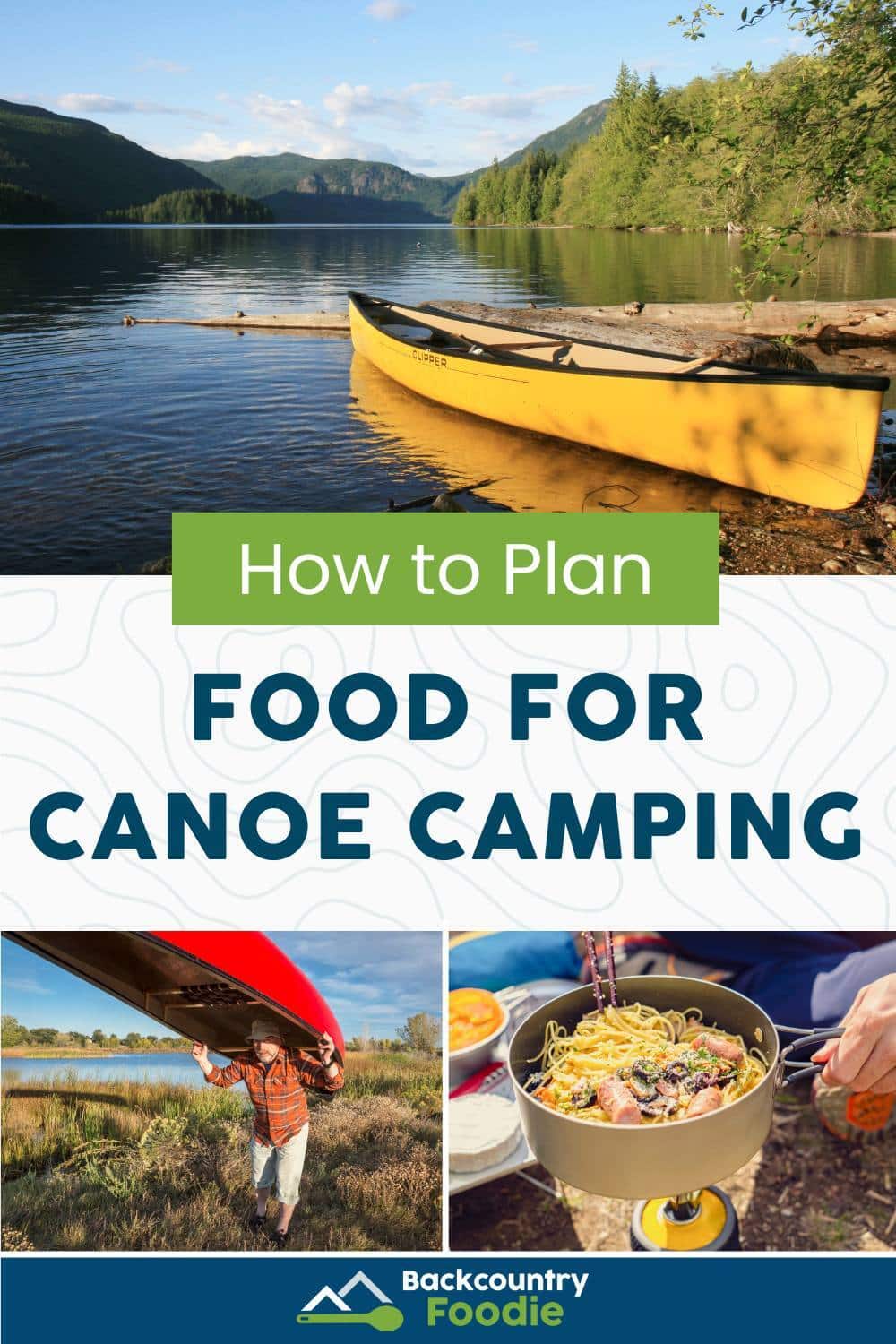
Leave a Reply Cancel reply
Your email address will not be published. Required fields are marked *
Save my name, email, and website in this browser for the next time I comment.
COMING SOON
Labor day sale.
Enjoy 20% off our memberships when you use coupon code LABORDAY20 at checkout!
Sale starts Friday, September 1st.
- 120 Pinterest
- 0 Copy Link
- Bushcraft Gear
Our Favorite Canoe Camping Meals

Be sure to check out our product recommendations and related blogs posts after the article!
Going on a canoeing camping trip is one of the most exciting and adventure-packed ways to experience the Great Outdoors, not to mention the fact that it’s an excellent way to reconnect with your friends and family. However, if you want your paddling trip to be truly enjoyable — you need to be prepared!
To prepare properly for canoe camping, you need to think about what you’re going to eat along the way. And that’s precisely why we’ve decided to provide you with a couple of excellent canoe camping recipes for your next trip.
Easy Meals and Snacks to Try on Your Next Paddling Trip
Canoe camping breakfast idea.
When you’re preparing your canoe camping meals, you’ve essentially got three priorities — as with any other meal, you want them to be decently tasty. Apart from that, they also need to be easy to make. You don’t want a fiddly meal when you’re in nature. Then, most importantly — it needs to provide you with all of the nutrition you need for all of the physical activity you’re going to have on the trip.
That’s why your breakfast should be a healthy classic: Date Maple Nut Oatmeal
For this recipe, you need:
- 3 teaspoons of dates (chopped)
- Half a cup of walnuts
- 3 teaspoons of maple sugar
- One cup of instant oats
If you don’t want to go with instant oats, you can make your own by powdering oats in your blender. And after you’ve gathered these ingredients, you’ll pretty much have your breakfast ready. All that remains in terms of preparation is combining all of the ingredients in a bowl and pouring a cup of boiling water over them; after stirring for a couple of minutes, let the oatmeal sit and cool for a bit.
Depending on how thick you like your oatmeal, you’re free to adjust the amount of water. Also, unlike most of the other meals we’ve listed here, this one isn’t protein-heavy; though, you could add some almond butter if you feel like you want a protein-laced breakfast as well.
Canoe Camping Lunch Ideas
There are plenty of people who pull off amazing cooking feats in nature, but we’re going to avoid anything too difficult for your lunch. After all, there’s still quite a lot to do during the day when lunchtime comes around, and you don’t want to waste time and effort on extensive cooking. That being said, there are some great camping meals you can make for lunch without trying too hard.
Once lunchtime rolls around on your canoe camping trip, you’re going to want something packed with protein and other nutrients but without the need for extensive preparation. That’s why we recommend a meal that takes some prep before the trip, but almost none while you’re out in nature: Camp Tacos!
To make camp tacos, you need:
- Crushed tortilla chips
- Pre-cooked taco meat
- Cheddar cheese
- Shredded lettuce
- Sliced tomatoes
Apart from getting the ingredients, you’ll need to cook your favorite taco meat before the trip and keep it in appropriate canoe camping food storage. For those more inclined to vegetarian or vegan diets, you can always use vegan sour cream and another protein source. While tofu is the go-to option for many, these tacos go exceptionally well with some black beans — an excellent protein source that’s also a common staple in Mexican cuisine.
For the next lunch option, if you’re willing to prepare this before the trip itself, you’ll save a lot of time on food prep while you’re in nature itself. The famous Swedish Hardtack is one of the many granola-Esque lunch meals that are easily stored on camping trips and nutrient-packed enough to allow you to make it until dinner without feeling hunger.
To make Swedish Hardtack, you’ll need:
- 1 teaspoon salt
- 5 cups of rye flour
- Half a cup of cooking oil
- Half a cup of honey
- 2 cups of yogurt
The preparation itself isn’t too complicated. First, mix all of the ingredients into a bowl and proceed to knead them until you’ve got a dough with a uniform texture and smoothness. Then, leave it in the refrigerator for about an hour.
The number of ingredients above should yield you about a pound of dough. If you want to get nice, even crackers, we recommend rolling this dough to a square with a 16-inch diameter. Then, proceed to trim the edges to achieve the right shape and use a knife or pizza cutter to cut individual crackers.
Place the crackers on a cookie sheet and bake them for 15 minutes at 375 degrees F. After this, they should start browning — that’s when you can pull them out of the oven if you want to avoid them being brittle.
Voila! Now they’re ready to be stored in foil and a plastic bag. This is the perfect lunch for a long canoeing trip that doesn’t require you to do much in nature itself.
Canoe Camping Supper Idea
You can handle a more involved preparation process for supper, seeing as the day is pretty much winding down. And in the case of this camping meal, we’re going to give you an option that you can cook both on a camp stove and a campfire.
One of the classic staples of the American household — but with a camp twist: Campfire Spaghetti. We’ve provided the ingredient amounts for three servings, but you can adjust for more if you’re taking more people on your trip.
To prepare the best campfire spaghetti, you need:
- Your preferred spices
- 8 oz of spaghetti noodles (dried)
- Parmesan cheese
- Previously prepared spaghetti sauce
- 1 lbs of lean ground beef
You’ll have to make a part of this meal at home, but it’s nothing too tricky. You need to cook your ground beef until it gains a distinct brown color. Then rinse and drain until all of the fat is gone, and use a dehydrator or a classic oven to dry it completely; it should have a grape nut consistency after you’ve finished. If you are vegan or vegetarian, sub the ground beef with dried TVP (textured vegetable protein) crumbles.
If you want this meal to be as quick as possible, you can get a jar of store-bought tomato sauce. Otherwise, stir-fry the tomatoes with some olive oil, onions, and paprika (which you can leave out if you don’t want it to be too spicy). If you want the sauce to last you as long as possible, use a dehydrator to bring it to a fruit leather consistency.
After this, you need to place the ingredients in baggies — separating the beef, parmesan cheese, and the sauce. Don’t forget to bring your spices as well!
When you’ve got your campfire or camp stove going, start heating a bowl of water over it. When it’s at boiling point, separate the ingredients into cups and begin adding water slowly. Once you notice that the beef and the sauce have reached the proper consistency, you can add the noodles and cover the bowls or cups with a lid or a plate.
Give it a couple of minutes, and the noodles will be cooked. Then, all that’s left is to add your choice of spices and the parmesan cheese (vegans can sub the cheese for nutritional yeast).
Canoe Camping Snack Ideas
In between all of the meals above, you want to have a steady supply of snacks that can quench hunger without having to stop what you’re currently doing or prepare a meal. The last thing you want in this case is junk food. When you’re in nature, you need something with real nutritional value, snacks that will truly keep you going until the next meal comes around.
For such purposes, you can’t go wrong with a good nut mix. This is the healthiest nutrition-rich snack you can take with you, and it’s not like it takes up a lot of space. Nuts are rich in (healthy) fats and can fill you up for a couple of hours until you make lunch or supper. They give you an excellent balance of fiber, protein, and healthy fat, and seeing as they need no refrigeration, they make the perfect camping snack. Add some dried fruit for an extra boost of energy and sugar as well.
If you are bringing your kids with canoe camping, don’t forget to pack the s’mores either! This is a classic sweet treat sure to make anyone a happy camper.
How to store and pack food when canoe camping
One of the most innovative ways to approach canoe camping is to plan everything out thoroughly. So, after booking a guided tour that leaves nothing up to chance — you can also plan out all of your meals extensively.
When you do that, you can store all of the ingredients; the dry stuff can go in separate baggies, while fresh ingredients will need to go into a cooler. Depending on the length of the trip and the meals you’ll prepare, you may need to freeze some meat — in that case, make sure you’ve got a separate cooler for the meat and the fresh vegetables to maintain the temperature of the frozen ingredients when you take out the unfrozen stuff.
Be sure to check out our product recommendations and related blogs posts below!

Check out our selection of curated, premium buschraft products - the same ones we use in the field!

We are continually adding to our database of useful articles about camping, bushcraft, and nature connection.

Give us a shout! We're happy to discuss any questions, comment or concerns about our trips, custom classes, or gear.

Canoe Camping Meals: Guide to Easy and Nutritious Options for Paddlers
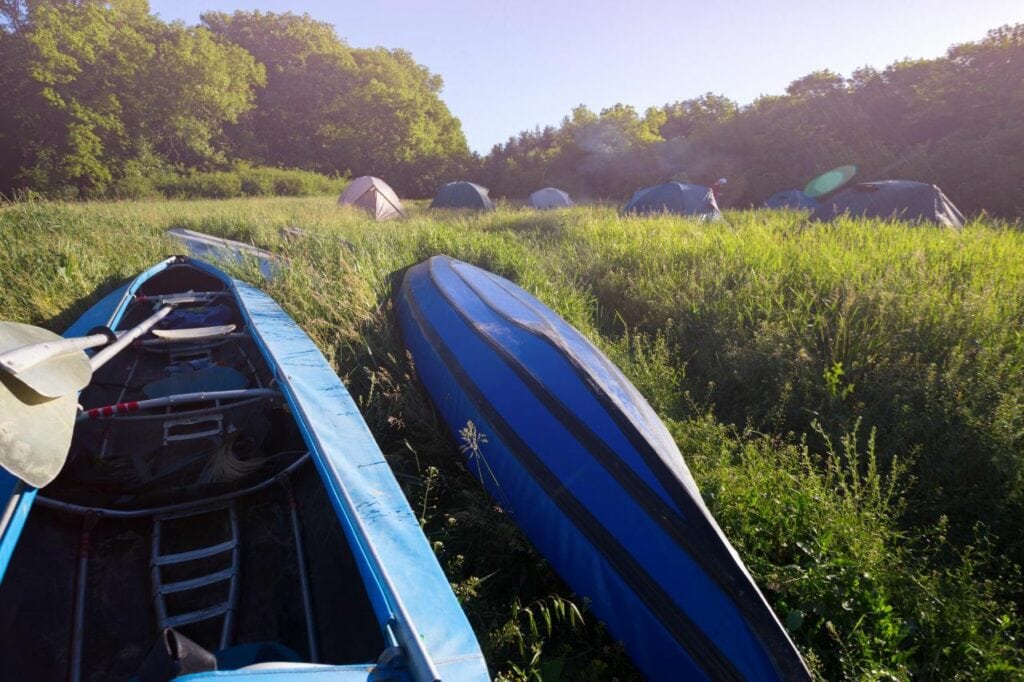
We're an affiliate. We hope you love the products we recommend! Just so you know, we may collect a share of sales or other compensation from the links on this page. Thank you if you use our links, we really appreciate it!
Going on a canoe camping adventure is a fantastic way to immerse yourself in nature while enjoying the tranquility of paddling through serene waters. One of the highlights during such excursions is the chance to delight in delicious and satisfying meals around a campfire by the shore. Backcountry cooking is an essential skill for canoe campers, and with a little meal planning, you can make sure to impress your fellow paddlers.
Canoe trip meals should be easy to prepare, delicious, and provide enough energy for your paddling adventures. Whether it’s breakfast, lunch, or dinner, having a variety of canoe camping recipes in your arsenal ensures that you and your companions can enjoy good food throughout your journey. From rehydrated meals to delightful one-pot dishes, there are numerous options to suit your taste and nutritional requirements.
When you embark on a canoe camping trip, remember that the paddle itself can be physically demanding. As such, it is crucial to choose meals that will keep you feeling invigorated and satisfied. With a bit of preparation and creativity, you can indulge in fantastic backcountry cooking experiences and turn your canoe camping adventure into an unforgettable culinary journey.
Preparing for a Canoe Camping Trip

Meal Planning for Canoe Camping
When planning meals for your canoe camping adventure, take into consideration your caloric needs, physical activity, weather, and duration of the trip. Aim to create a meal plan that provides a good balance of carbohydrates, proteins, and fats, with an emphasis on lightweight, non-perishable ingredients. Staples such as rice, pasta, and oatmeal can be combined with dehydrated vegetables, beans, and various proteins like jerky or canned fish.
Remember to pack some snacks for in-between meals, such as energy bars, trail mix, or dried fruits. Don’t forget to account for cooking oil, spices, and condiments to enhance the flavor of your dishes. Consider your dietary restrictions or preferences while creating your meal plan.
Packing Food for the Trip
Proper food storage and packing will ensure your meals stay fresh and lightweight throughout the trip. Use resealable plastic bags or airtight containers to pack your meals in portions while reducing bulk and potential food waste. Dry backpacking foods can be rehydrated with water directly in their containers, making them both space-saving and convenient.
For short canoe camping trips, you may prefer to bring some fresh foods, such as fruits, vegetables, or sandwiches. However, keep in mind that perishable items may spoil quickly, especially during warmer weather, so pack accordingly.
Cooking Gear Essentials
Assemble a lightweight and functional cooking gear set for your canoe camping trip. A compact camping stove, such as a canister or liquid fuel stove, is a great addition to your gear, especially in areas where open fire pits may not be allowed or where natural fire sources are scarce.
A portable fire pit can be an alternative cooking option if open fires are allowed at your campsite. Include a set of lightweight, durable pots, pans, or a Dutch oven for versatile cooking. Bring a spork, bowl, and a mug for each camper to use during meals.
Adhere to Leave No Trace principles by cleaning up all food waste and washing your dishes responsibly. Practicing proper backcountry camping ethics will help preserve these natural areas for future paddlers to enjoy.
Breakfast Ideas for Canoe Camping
Oatmeal and granola dishes.
Starting your day with a warm and hearty breakfast is important, especially during a canoe camping trip. Oatmeal is easy to prepare, customizable, and packed with energy. You can mix in various ingredients such as dried fruit, chopped nuts, brown sugar, and chia seeds to create your own unique flavor. Additionally, granola bars are perfect for a quick, no-cook option. Choose bars that contain a good amount of protein and healthy fats to keep you full and energized.
Egg-Based Meals
Eggs are a fantastic source of protein and can be used in numerous meals while camping. Breakfast sandwiches using powdered eggs, bacon bits, and sausage are a simple, filling option. Early in the trip, you can use English muffins, but for later meals, consider using wraps as a more portable alternative. If you want to level up your egg game, try creating a one-skillet dish by adding various ingredients such as vegetables, cheese, and cooked bacon or ham.
Portable Breakfasts
On busy mornings or when you’re in a hurry to break camp, portable breakfast options are a lifesaver. A favorite among campers are cinnamon buns—prepared in advance and individually wrapped, they make for a delicious handheld meal. Another option to consider is a savory calzone made with just-add-water pizza dough, pepperoni, and shelf-stable cheese, cooked over a campfire.
Warming up with a hot beverage is essential during those chilly canoe camping mornings. Don’t forget to pack coffee, tea, or hot chocolate to suit your personal preferences. If you enjoy milk in your drinks, powdered milk is a lightweight and non-perishable alternative. Pairing your hot drink with your breakfast meal will give you the energy you need to paddle your way through a busy day on the water.
Lunch Ideas for Canoe Camping
Sandwiches and wraps.
When canoe camping, you’ll want portable, easy-to-prepare lunches that don’t skimp on taste. Sandwiches and wraps are perfect for this. Stick with durable breads like bagels or tortilla wraps for maximum practicality. Fill your sandwiches with ingredients like cheese, hummus, or peanut butter, which last longer without refrigeration. Don’t forget to add a variety of veggies, like lettuce and tomato, for extra crunch and flavor. Always pack fixings separately to prevent soggy sandwiches that nobody wants to eat.
Quick and Easy Lunches
For busy canoe campers who don’t want to spend much time on food preparation, consider packing snacks that can be combined into a satisfying lunch:
- Crackers : Triscuits or other sturdy crackers pair well with cheese, hummus, or nut butter for a quick bite.
- Nuts and Trail Mix : A variety of nuts, along with a good trail mix, can provide valuable energy and satiate hunger when on the go.
- Beef Jerky : A high-protein snack that requires no preparation.
One Pot Meals
Sometimes, you’ll crave a hot meal in the middle of the day. One pot meals are perfect for simplifying your canoe camping lunch experience. Consider using a portable stove to whip up these delicious, easy dishes:
- Chili : Make a simple, delicious chili by cooking beans, canned tomatoes, and spices in one pot. You can even add dehydrated vegetables or meats to your chili for extra flavor and protein.
- Soup : Pack some instant soup mixes for a quick, light lunch option. Simply add water and cook in one pot. Try varieties like vegetable, lentil, or chicken noodle.
- Grain-based dishes : Quinoa or rice-based recipes make hearty, satisfying meals. Cook the grains in water and toss in a few dehydrated veggies, seasonings, or precooked meats. Stir everything together in one pot for a tasty, filling lunch.
Dinner Ideas for Canoe Camping

Hearty Dinners
When you’re on a canoe camping trip, nothing beats a hearty dinner after a long day of paddling. Here are a few options that are easy to prepare:
Pasta and Beans :
- Ingredients : pasta, canned beans, tomato sauce, olive oil, seasonings (salt, pepper, Italian herbs)
- Directions : Boil pasta according to package instructions. Heat up beans and mix with tomato sauce. Add olive oil and seasonings. Combine with pasta and serve.
Wild Rice and Lake Trout :
- Ingredients : wild rice, fresh lake trout (or other fish), olive oil, salt, and pepper
- Directions : Boil wild rice according to package instructions. Season the trout with salt and pepper, then wrap it in tin foil and place on hot coals. Cook until the fish is cooked through, and serve with wild rice.
Gourmet Canoe Trip Meals
Impress your fellow campers by elevating your cooking game with the following gourmet canoe trip meals:
Swedish Hardtack with Sausage and Cheese :
- Ingredients : Swedish hardtack, summer sausage, hard cheese, mustard
- Directions : Cut sausage and cheese into thin slices. Assemble on a piece of hardtack and top with mustard. Enjoy the gourmet taste in the great outdoors.
Vegetable Stir-Fry :
- Ingredients : rice, a variety of vegetables (e.g., carrots, zucchini, bell peppers, mushrooms), olive oil, soy sauce, ginger, garlic
- Directions : Cook rice according to package instructions. Chop vegetables into small pieces. Heat oil in a pan over the campfire, add vegetables, and cook until tender. Add soy sauce, ginger, and garlic. Stir-fry for a couple more minutes, and serve over rice.
Campfire Cooking
Cooking over an open fire adds an enjoyable and tasty element to your canoe camping experience. Here are a couple of simple options:
Bacon-Wrapped Sausages :
- Ingredients : sausages, bacon
- Directions : Wrap each sausage with a slice of bacon. Slide a stick through both ends of the wrapped sausage. Hold or prop the stick over the fire pit until the bacon is crispy and the sausage is cooked through.
Fire-Grilled Vegetables :
- Ingredients : your favorite vegetables (e.g., bell peppers, zucchini, mushrooms, onions), olive oil, salt, and pepper
- Directions : Chop your choice of vegetables into large pieces. Toss in olive oil, and season with salt and pepper. Create little foil pouches and seal the vegetables securely. Place flat on hot coals to cook, flipping occasionally, until tender.
Snack Ideas for Canoe Camping
While out on a canoe camping trip, it’s essential to have a variety of snacks to keep your energy levels up. Here are some delicious and easy-to-pack options for your next adventure.
Nuts and Trail Mix: Nuts are a fantastic source of protein and healthy fats. Bring a variety of your favorite nuts such as almonds, cashews, and walnuts. You can also make your own trail mix by combining nuts with dried fruits like raisins, cranberries, or apricots. For extra indulgence, throw in some chocolate chips or M&Ms.
Beef Jerky: For a protein-packed snack, beef jerky is an excellent choice. It’s lightweight, delicious, and comes in many different flavors. You can even find vegan and vegetarian options made from plant-based proteins.
Granola Bars: Granola bars are a tried-and-true canoe camping snack. Look for those made with whole grains, nuts, and dried fruit for maximum nutrition. If you’re feeling creative, you can even make your own before the trip by mixing together oats, nuts, dried fruit, and a sweetener like honey or maple syrup.
Fruit: Fresh fruit may not be practical for long trips, but it’s an excellent addition to your snack rotation for shorter outings. Apples, oranges, and bananas are great choices that can withstand rough handling. For longer journeys, opt for dried fruit like raisins, cranberries, and mango.
Chocolate: Don’t underestimate the mood-lifting power of chocolate! Pack a bar or two for those moments when you need a little pick-me-up. Keep in mind that chocolate can melt on hot days, so consider packing chocolate-covered nuts or treats that are more temperature-resistant.
Incorporate these snacks into your canoe camping meal plan to ensure you have plenty of tasty options throughout your trip. Remember, maintaining your energy levels is crucial to enjoying your adventure and staying safe on the water.

We’re passionate about getting the most from your car when it comes to going on adventures and road trips. When you take one of these trips you often need more room in your car than you usually would. This is when we come in, to help you find the best roof tent for your car and needs.
Leave a Comment Cancel Reply
Your email address will not be published. Required fields are marked *
Sign up to receive tripping tips, promotions, and news!
Translation missing: en.general.currency.dropdown_label
- Create account

Canoe Trip Cooking 101
Posted by Bill Ostrom · July 17, 2023

Bill and I have been tripping for decades. We each started out with our parents in the 70’s with short weekend canoe trips, lots of fresh food (hot dogs!), cans (corned beef hash!), no portages. By the time we met up in university our goals had shifted to longer trips and wanting to get away from the crowds a bit more. Adding some portages, going out for longer, going into less travelled wilderness. So beautiful! So peaceful!
As our skills grew we assessed our gear and our food for weight and compactness. There is nothing better than finding that sweet spot of what you’re comfortable carrying on the portage and eating healthy, yummy meals.
We find that we can pretty much eat what we enjoy at home with some adjustments for weight and cooking outside. So read on for tips and tricks around menu planning, organizing the food, and cooking in camp. I’m sure there’s something in here for everyone!
Eating healthy food and balanced meals on a canoe trip ensures you’ve got good mental and physical energy for the day. It is especially important for kids … and parents.
Some people can live on protein bars, but there is something to be said for how food and cooking connects people on any outdoor adventure trip. Whether it’s teaching your kids how to light a fire, or enjoying cocktails during food prep.
Your menu, and how much you want to fuss over your evening meal is totally up to you.Our foodie friends go the extra mile in their camp cuisine. (And we love it!) But we’re more inclined to keep things simple so we can spend more time fishing or painting. Especially if it’s just the two of us.
Planning for Campsite Cuisine
As expected, the start of great campsite cuisine is in the planning. Obviously, it ensures you have enough food, but it also helps make sure that everything fits in your barrel or pack and mealtimes run smoothly. (Especially important with kids.)
Having said that, I think the most important benefit of good planning is that you come back with nothing but your emergency meal. That is the perfect indication that you’ve found that sweet spot between energy, good food and weight.
To that end, consider these questions when putting together your menu:
Are there any campsite regulations or restrictions?
Can and bottle bans are common in wilderness parks
Fire bans - Oh my goodness! As I write this (June 2023) I think parks, crown land and BLM lands in Ontario, Quebec, Alberta and Northern Minnesota are all on a fire ban. And the summer of 2022 was bad as well.
How many hours paddling each day? How much portaging?
The answer to these questions will determine how much fresh food to bring (weight factor.) How many desserts! (more weight) How much prep is needed in camp (time factor.) And whether [pancakes!] a cooked breakfast every day makes sense (more time.)
If you’re heading out for more than 2 weeks, it might make sense to adopt more of a pantry-style approach to menu planning where you bring ingredients and supplies to cook certain meals.
Who’s coming?
Are you solo? Just you and a buddy? Small group? Big group?
If you’re paddling with a group you can decide who’s responsible for what. If we paddle in a small group we tend to bring our own breakfasts and lunches and then split up the dinners. It often makes sense to plan communal breakfasts and lunches with a larger group.
Any food allergies or sensitivities?
I’m surprised my friends still invite me on canoe trips. I’m allergic to this…I don’t like that…However, my dietary needs are easily accommodated by my bringing my special cheese, or granola (porridge makes me gag.) Or taking out my portion from the pot before mixing in ingredients I can’t eat. While it may sound complicated, it’s easy to plan for at the time of menu planning. And people like me really appreciate the accommodation.
Canoe Tripping with kids?
This is the time to get your kids involved. Research fun canoe tripping foods. Ask them what they want to eat. And plan on a menu of foods that they love to eat.

Canoe Trip Menu Planning Tips
Once you know how much weight you’re willing to carry, and how much time you’re going to spend in the morning and with supper prep, you can put together a menu. You can make decisions on fresh vs dehydrated foods, and quick and easy vs more complex meals. (Keep reading for tasty recipes.)
Make a chart with each day and each meal plus snacks. Handwriting is more fun. But typing up a template makes it easy for next time.
Don’t forget the coffee!! Our niece ended up with a 3 day migraine (with 4 kids) when she forgot the coffee (that only happened once…) Bill’s go-to breakfast is peameal bacon and english muffins. Mine is granola. My friends love porridge with dried fruit. We bring loaves made ahead of time if there’s room. I know people that scramble up eggs in a watertight container for their first breakfast. (Powdered eggs are also really good!)

Our lunches tend to be quick and easy since we’re often paddling or portaging. A mix of pitas, wraps, bagels, croissants, pepperettes, kielbasa, cucumber, and fresh hummus for the first few days. Then a transition to cheese, crackers, peanut butter, dehydrated hummus or black bean dip later on. This is where it’s so fun with a large group because you can literally lay out a smorgasbord so people can eat what they love, from peanut butter to stinky cheese!

We often plan the first 3 days of fresh meat and veggies for suppers - Marinated chicken, then steak, and then a processed meat like sausages or ham. Veggies, potatoes, and bread work as fresh side dishes. Our vegetarian friends plan on meals like portobello mushrooms, avocados, beans and lentils. Then dehydrated meals after that.
If you’re going to fish, be sure to bring whatever you need to cook them up. We love a good fish fry and always have enough oil.
It’s all about the GORP (Good Ol’ Raisins & Peanuts - aka Trail Mix)! For kids, and me too, there is nothing more fun than going to the bulk food store and choosing snacks for your GORP. Granola bars, protein bars and fruit bars/fruit leather are also amazing. Bill always has a Mars bar handy. Make sure you’ve got something that can give you a burst of energy if you need it on the water or the portage.
Hot Beverages

There’s no reason you can’t keep your hot drink routine on a canoe camping trip. Hot coffee in the morning, herbal tea after supper, etc. Your kids may not have a routine at home, so be sure to plan something hot and yummy at breakfast and perhaps after supper. It helps with hydration. As well, bringing cup-a-soup or powdered soup mix for quick warmth on a rainy day makes everyone feel better. It’s also great for an end of day salty rehydrating appetizer.
Cold Beverages
Don’t forget whatever you need to purify your water (water filter, tablets, UV-stick.) Waterborne illness is not fun. Then bring whatever you need to make sure you and your kids “love” drinking water so you stay rehydrated. If the weather is hot, and you’re working steady, then it also makes sense to bring powdered electrolytes, especially if you’re prone to cramping.
Fresh fruit and vegetables
This can be a constant debate between those who love a little “crunch” at lunch and supper, and those who don’t want the weight (or bulk) of carrying an apple a day to keep the doctor away. In reality, dried fruit and vegetables are just as nutritious. Having said that…we often bring a small cabbage and shred it up with a homemade oil and vinegar dressing. Fabulous on days 4, 6 and 8! As well, it’s ok to bring 1 apple for 4 people just to get that burst of juiciness. Again - the length of your trip and portages will help you decide.
Think about your meals and bring the spices you need.
Although I have friends that would say martinis are a much more efficient use of space and weight. Cocktails are just as amazing while camping as they are at home. If you can make the room and the weight…why not.
If you want to go light and fast…deserts will weigh you down. However, there is something to be said about loading up on carbs for the next day. Even on easy trips, we’re still moving much more than in town. Camp deserts can be as easy as S’mores or brownies from home.
My friend brings fresh bananas for Banana Boats for that first night. There is nothing yummier than bananas and chocolate chips wrapped in tin foil and baked on the fire.
Grocery List
There is nothing worse than being in the throes of packing food and realizing you don’t have something. Systematically go through your menu and make a list, including quantities of each food item.
This is how I organize our shopping list(s).
- Food that needs to be dehydrated (because I need to buy this well in advance)
- Fresh food, meat, bread/wraps/pita (which gets bought a day or two before so it can go in the fridge or freezer.)
- Other non-perishable foods that can be bought anytime.
- Dehydrated meals or foods from an outdoor store. (done well in advance if ordering online)
- Bulk food store (done at the last minute so I don’t eat all my gorp before the trip!)
The goal of packing your food up is to reduce the time rummaging around in the food barrel or food pack for the next meal…or the sugar for your coffee! There are at least 2 schools of thought.
The first is to organize by day. So 1 bag or stuff sac per day with smaller bags for breakfast, snacks, lunch, supper, and dessert. Our friend does this for her family and it helps ensure variety and minimizes fussing around.
The second way is to organize by meal, and then have the menu handy. It looks like this.
Each supper is in its own mesh bag or stuff sack. On longer trips, suppers for later on are just thrown in the bottom of the barrel. Earlier suppers are together in a bag closer to the top. This maximizes space.
Lunch foods are in a bag, and the day’s lunch is always at the top of the barrel for easy access.
Breakfasts are in a bag. And hot drinks are in a separate bag for easy access anytime during the day. Afternoon coffee anyone?
Snacks are in a bag and everyone can take what they need for the day. For bear safety, don’t forget to put all snacks back in the food barrel or food pack for the night.
The second goal is to not forget anything. Consider an itemized list for each ingredient in each meal. Here’s a photo of how I keep track of our suppers, and the list keeps going for breakfast, lunch, hot drinks and pantry items.

We’ve already talked about breakfast and lunch ideas. Here is our famous “Pineapple Beef Stir Fry” recipe. Followed by a delicious fry pan quesadilla.
🍍 Pineapple Beef Stir Fry 🍍
(Quantities will depend on the group you’re feeding.)
Beef Jerky – any soy sauce-based marinade with garlic and/or ginger
Pineapple chunks
Brown Sugar
Corn Starch
Oil for frying
- Rehydrate the beef, veggies and pineapple by putting in a pot with just enough water to cover – bring to boil, remove from heat, and let sit for about an hour while you set up your tent.
- Drain the water into a bowl. Make the sauce by adding soy sauce, and brown sugar to taste.
- Fry up the rehydrated ingredients, sprinkling with the garlic and ginger. (Smells so good!)
- Add the sauce.
- Mix up cornstarch in cold water and add to the pot. Do a taste test and add more spices, soy sauce or sugar. Bring to a boil and stir til it thickens.
- Serve over rice vermicelli noodles or rice.
Pizza Quesadillas
This is a great meal for kids and picky eaters...because everyone makes their own. Decide what you’re going to have “on your pizza” and dehydrate those ahead of time or bring fresh. Think pizza sauce, cheese, pepperoni, peppers, mushrooms, olives, onions, pineapple.
As you can see, the base is a flour tortilla (and our gluten-free friend has found coconut tortillas). Simply load up ½. Fold over the tortilla. Cook one side on low to medium heat and flip when browned. A lid helps but is not necessary. Enjoy!
If you want to freshen up your menu and learn about dehydrating meals, then check out Kevin Ride’s Backcountry Eats book and youtube channel. He is a wealth of information for newbies and seasoned canoe trippers alike.
It is super easy to plan flavourful, nutritious meals on canoe trips that fill the belly and feed the soul. Take the time to plan ahead and adjust the menu to your people and your route.
Definitely take the time to make lists - first the grocery list - then the packing list - so you don’t forget the coffee!!!
Happy paddling
Anne & Bill
- Kayak Accessories
- Kayak Paddle
- Fishing Kayak
- Inflatable Kayak
- Recreational Kayaks
- Touring Kayaks
- Whitewater Kayak
- Safety and Navigation
- Paddling Gear Awards
- Beginner Paddling Skills
- Intermediate/Advanced Skills
- Outfitting and Accessories
- Health and Fitness
- Paddling Adventure
- PaddleTV Channel
- Clothing and Footwear
- Tents and Sleeping Gear
- Trail & Camp Gear Awards
- Trail & Camp Learning
- Trail & Camp Adventure
- BackpackingTV Channel
- Family Adventure Reviews
- Family Adventure Tips
- Family Adventure Stories
- Family Adventure Awards
- Adventure Fishing Reviews
- Adventure Fishing Learning
- Adventure Fishing Trips
- OE Trip Journals
- Adventure Journals

When planning for a longer canoe camping trip, I would go as far as to say that nothing is more important than food and meal planning. A boat stocked with generous supplies of delicious grub can make the difference between a fantastic outdoor experience, and one that leaves you longing for the comforts of home.
So today I want to give you a sample meal plan for a 5-day canoe camping trip with multiple portages. My advice for planning meals on a canoe trip could be something that you can use as a baseline reference. Adjust it and personalize it to make your canoe trip a success.
Packing food for an extended canoe camping trip
Before you get underway, there are a few environmental factors that will dictate how you should pack for a canoe camping trip. For example, does your route entail a lot of portages or is it mostly long paddles between campsites?

One of the benefits of a canoe trip over a kayak or a backpacking adventure is that you can chuck in a lot of bulky and bonus items. However, if you need to repeatedly lug all of that overland, then that prior advantage becomes more of a nuisance.
Multiple portages means lighter foods
So if your trip does involve multiple portages, I recommend sticking with lighter, more packable foods. If you're set up to predominantly paddle, then go nuts with those luxury foods and bonus treats.
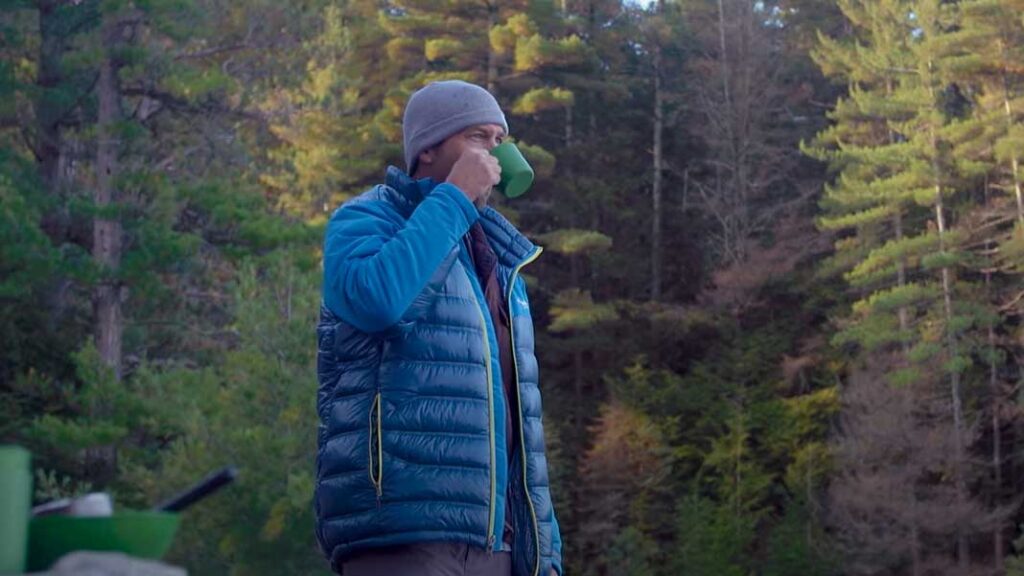
Weather is important for food planning
Another environmental factor to consider when canoe camping (as best as you can in advance) is the weather. Namely, how hot will it be? This will determine the shelf-life of different foods. If it's a scorching hot summer trip, then maybe scale back on the packaged meats. But if it's a cooler area or time of year, then you can get away with a lot more.
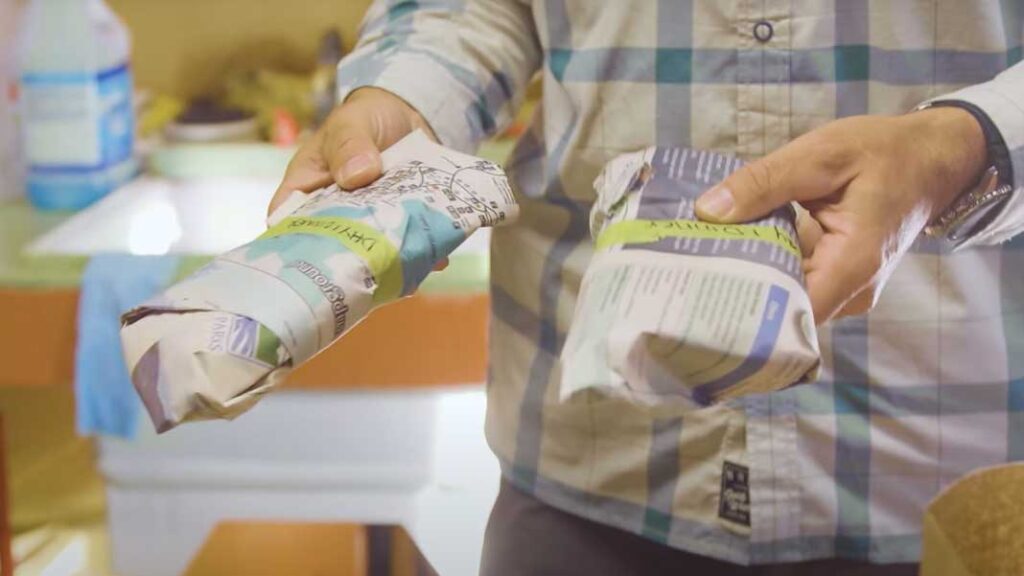
As a general rule, I like to pack more fresh foods for the first 2 days, and then I'll switch over to pre-packaged and dehydrated stuff, just to be on the safe side.
Calories you burn on a multi-day canoe trip
And a final thing to consider is how many calories you and your crew expect to burn. Is this a poke along and smell the roses kind of affair, or is it an ambitious, cover a lot of ground type deal?
In the case of my reference 5-day canoe trip, my buddy and I planned to do a lot of hard paddling, in cold and windy conditions, while also banging out several challenging portages.
4000 calories a day per person
Taking all of this into consideration, we determined that we would need about 4,000 calories per day per person.
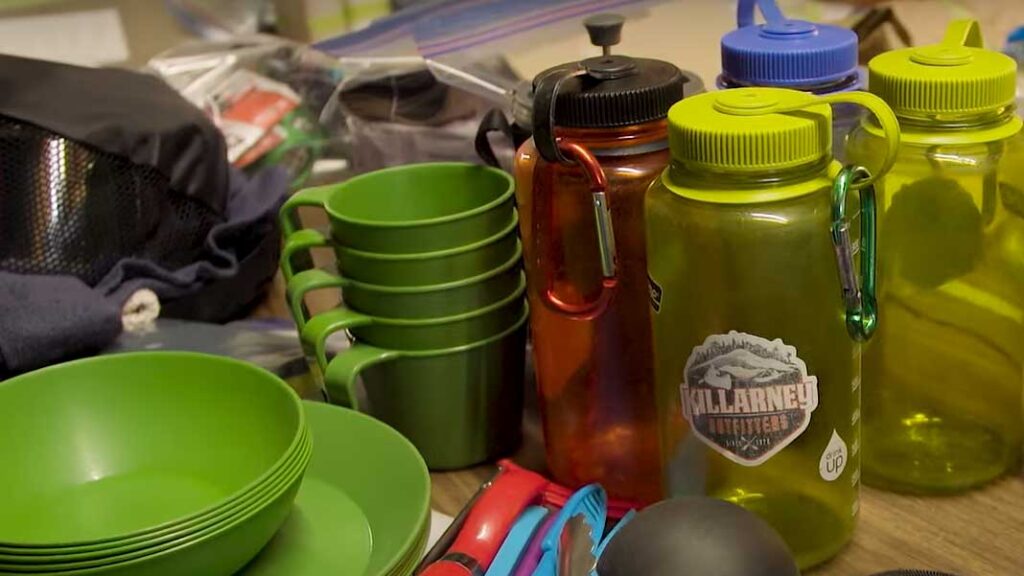
What should I eat on a canoe camping trip?
Now that we've covered some general considerations, let's dive into a 5-day sample meal plan. For this trip, our campsites all included firepits with those built-in grill grates, and so we planned to do a lot of our cooking over open flame (particularly in the evening). But we also packed lots of fuel for our classic camping stoves.
Meal Plan for Canoe Camping Day 1
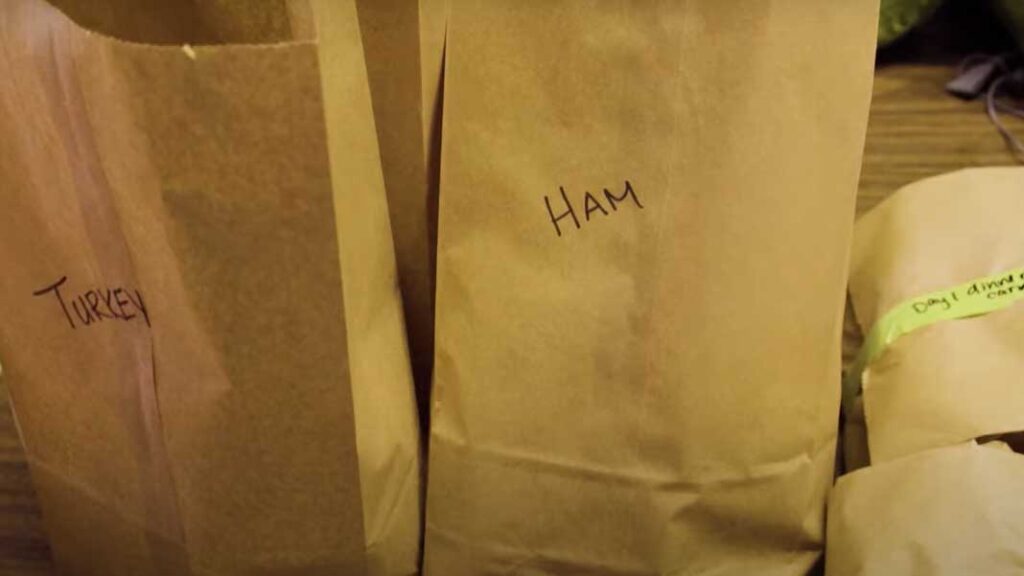
Breakfast : Consumed on shore before pushing off
Lunch : Pre-made sandwiches, chips, and a piece of fruit (classic school lunch)
Dinner : 4 frozen/wrapped steaks, baked potatoes, and mushrooms

Meal Plan for Canoe Camping Day 2
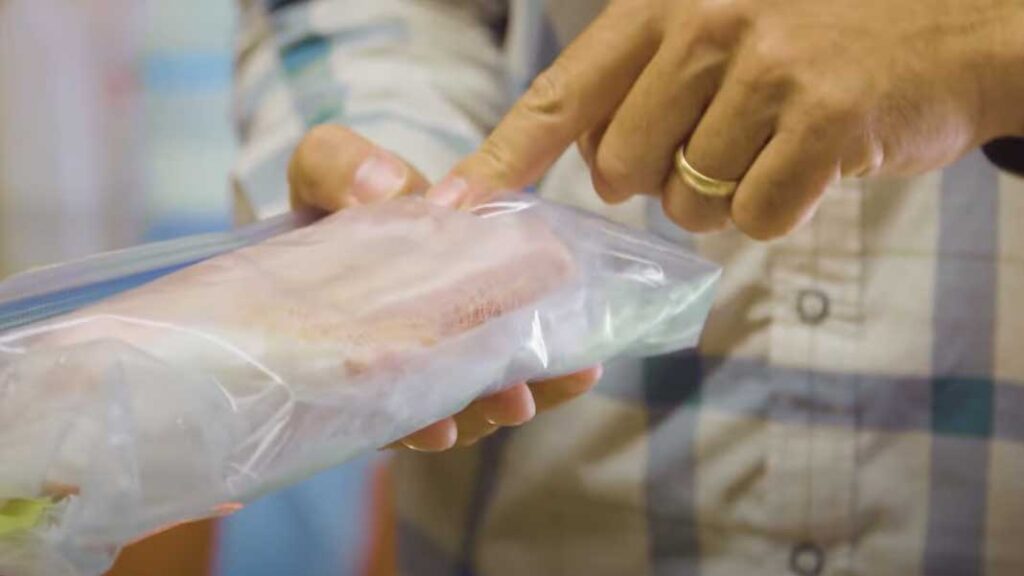
Breakfast : Bacon (wrapped in vinegar-soaked cheesecloth for preservation purposes), eggs (see note below), and fresh bread
Lunch : “Trail lunch” for anticipated portages (i.e. trail mix, cheese/crackers, granola bars, beef jerky, peanut butter/jam).
Dinner : Frozen beef chili sealed in Ziploc bags and wrapped in newspaper
Meal Plan for Canoe Camping Day 3
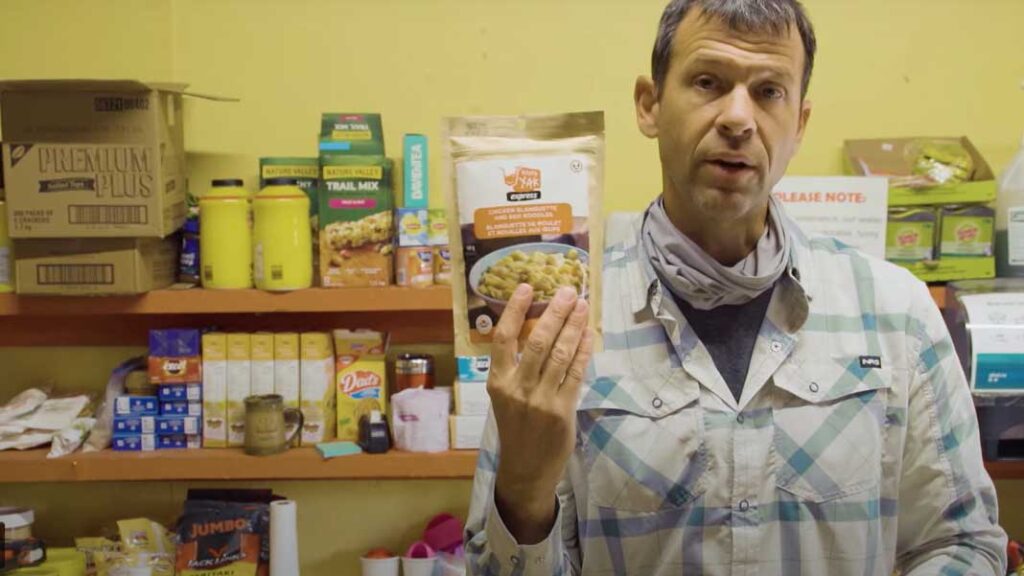
Breakfast : Instant oatmeal w/ dried fruit (raisins, blueberries, banana chips, etc.)
Lunch : Salami and cheese tortilla wraps (meat and cheese also wrapped in vinegar-soaked cheesecloth) + celery/carrots
Dinner : Dehydrated mac and cheese
Note: Although many camping meals say they are good for 2 people, in reality, after a day of hard paddling or trekking, most people seem to like a full package to themselves.
Meal Plan for Canoe Camping Day 4
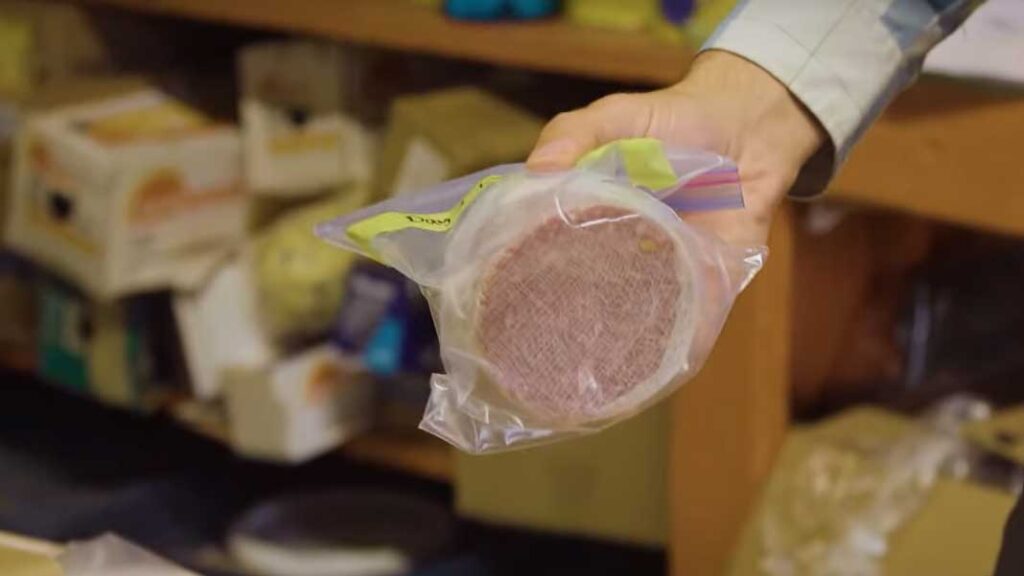
Breakfast : Instant oatmeal w/ dried fruit
Lunch: Salami and cheese but this time on pita bread rather than tortillas + celery/carrots
Dinner: Dehydrated pad thai
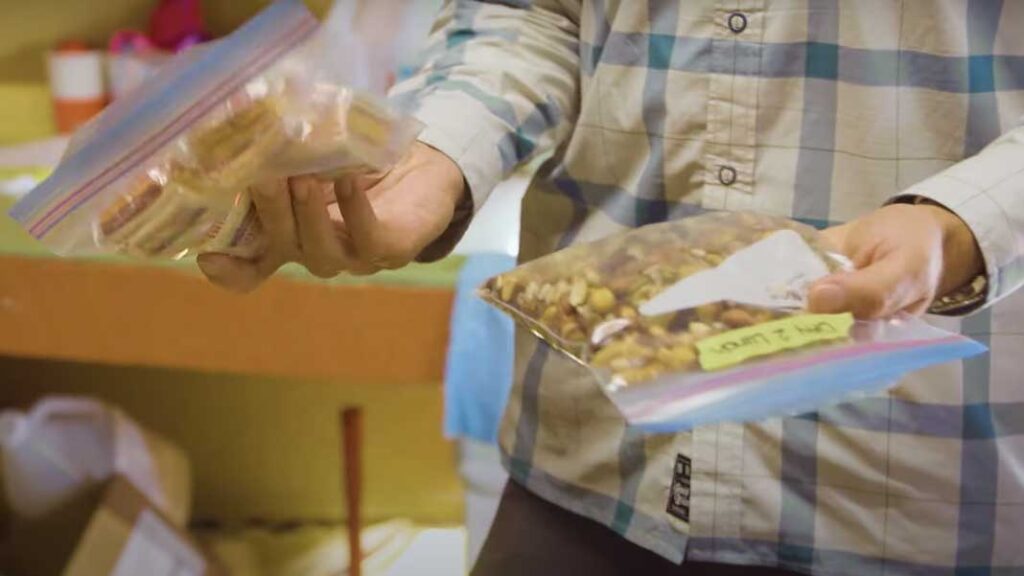
Meal Plan for Canoe Camping Day 5
Breakfast: Instant oatmeal w/ dried fruit
Lunch: Same as day 4
Dinner: Dehydrated meal (whatever flavor is left after the group picks them over for 3 nights)
Extra Snacks throughout the trip:
Trail mix, cookies, brownies, fresh fruit (for the first few days), pepperettes, popcorn, tea/coffee
Can you bring eggs on a canoe trip?
You may have noticed my inclusion of eggs in the meal plan and wondered if that's ok to do. Eggs are a great source of protein, and they're super easy to cook up, so I love bringing them along.
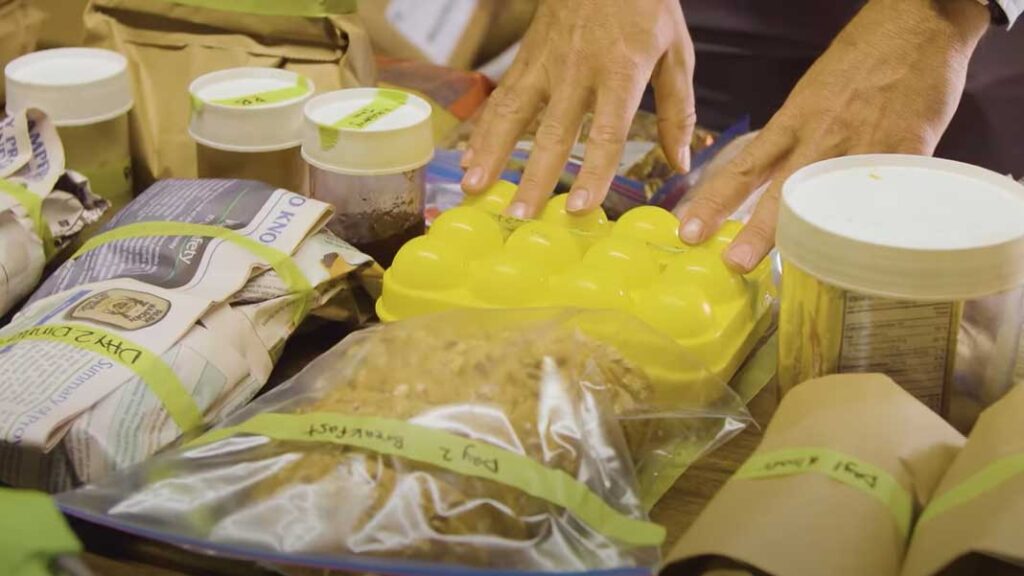
The trick is keeping them protected, which can be done by getting one of those hard plastic egg cartons that you can find in any home/kitchen section of a big box store.
Our friends at Killarney Outfitters also blanched our eggs in advance, meaning they briefly dropped them in boiling water in order to kill all the bacteria on the shells. This helps extend the shelflife out in the wild.
Shout out to Killarney Outfitters!
All of these tasty and strategically planned meals during our canoe camping trip were laid out for us by Killarney Outfitters . I love working with them anytime I'm in the area, and since Killarney Provincial Park is one of my favorite places to paddle, we've gotten to know each other rather well over the years. They are so well-stocked and familiar with the area that you can essentially just show up with a toothbrush and a change of underwear, and they'll fix you up with the rest.
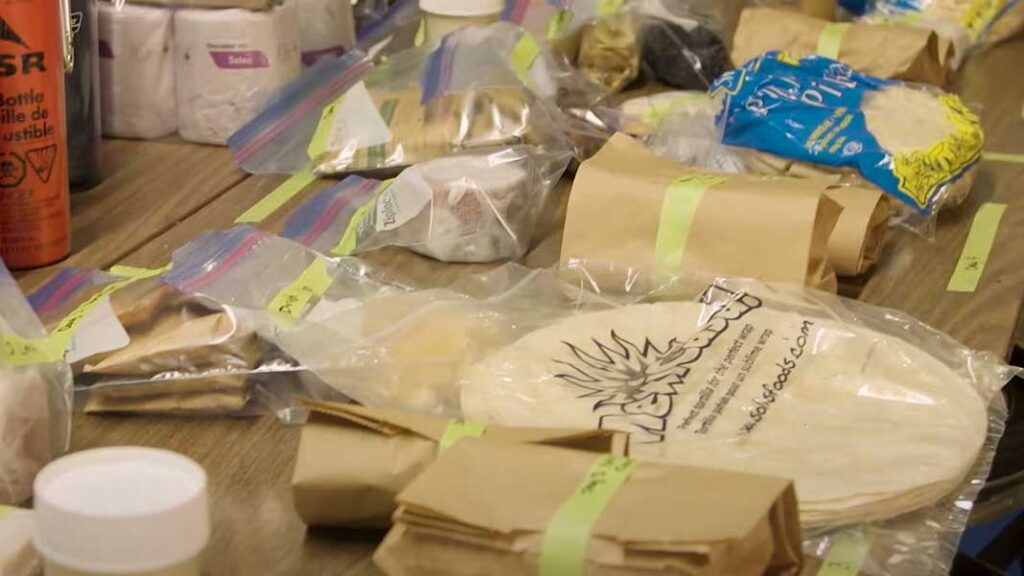
I hope all this talk of camping food has you chomping at the bit for your next canoe trip. Each person and each excursion is a little different, but this should give you some idea of what to pack, and what to skip over. For more paddling tips, gear reviews, and to share in the adventures, make sure to follow along with PaddleTV and subscribe to the In4Adventure newsletter .
- canoe camping
- canoe trips
- meal planning
Related Articles
Sea eagle 300x inflatable kayak review, dallas adventure: a journey of texan delights, kayaking in northern ireland, our paddling community, ken whiting: paddling.
More Reviews
Five top spring paddling tips, tucktec kayak vs sea eagle 330 kayak, oru kayak coast xt kayak review.
MY GLOBAL PARTNERS! Special thanks to my Global Partners for supporting my mission of helping get people on the water and creating life-long outdoor participants.

- Learn Blog FAQ's Cosmetic Seconds Wood Paddle Care Composite Paddle Care Factory Tours Paddle Sizing Canoe Sizing Guide Solo Canoe Sizing Guide Pack Canoe Sizing Guide Kayak Fishing Sizing Guide Kayak Sizing Guide Choosing a Canoe Paddle Rockgard® Edge Protection Grip Guide Bent vs. Straight Paddle Paddles for the Solo Canoeist Choosing a Kayak Fishing Paddle Versa-Lok Ferrule System Snap-Button vs Plus Ferrule Plus Ferrule System Product Highlights New At Bending Branches Black Pearl ST
Canoe Trip Food: What Are Your Options?

8-minute read
By Sharon Brodin
A multi-day canoe trip is a unique wilderness experience that, like backpacking, means you pack your food wherever you go. Let’s look at your options for canoe trip food so you can make the best choices for your group and situation.
When it comes to canoe camping meals there’s no right or wrong. Some people want light and easy meals. Others want gourmet. Some love camp cooking, others just want to have a full belly. What you decide will depend on quite a few factors including whether you're planning long trips or shorter trips.
There are three basic options when it comes to meals for your wilderness canoe trip: “real” food (non-dehydrated), pre-packaged dehydrated meals marketed to backpackers, and DIY dehydrated meals.
There are pros and cons to each of these:
Bring “Real” Food
PROS: Tastes great • healthy • budget-friendly
CONS: Heavy • Takes up more room in the pack • somewhat labor intensive to plan and prepare both before and during the trip
BEST FOR: Trips with little to no portaging • short trips • strong portagers • fresh food lovers
Back in the 80s when I was a camp counselor in northern Minnesota, we brought teens on 5-10 day canoe trips in the Boundary Waters. In those days—at least at low-budget small ministries like ours—expensive pre-packaged backpacking food wasn’t an option (I’m not sure it was even on the market at the time).
We brought “real” food along on these trips. We had a food pack it all fit in, including the cook kit. It was our heaviest pack at the start of each trip and of course would lighten up after every meal.
When our family (my husband and I, plus our three teens) joined another family (with a husband, wife and their teen) for a 5-day trip a few years ago, we also brought mostly “real” food. We weren’t too worried about the weight because we had four healthy teenagers to help with the portaging!
We even packed in our griddle so we could have pancakes one morning:

The way our boys could eat, it would’ve cost us a fortune to buy pre-packaged backpacking meals. Each one of them could’ve eaten an entire 4-serving meal alone!
More examples of real food that works well in the right packaging are instant oatmeal, pita bread, ground beef (cooked ahead of time and frozen) and rice cakes.
Buy Pre-Packaged Dehydrated Food
PROS: Lightweight • easiest way to prepare on the trail with little time needed for food preparation
CONS: Expensive • sometimes sketchy flavor
BEST FOR: Extended trips • lots of portages and/or long portages • solo or small groups
Your easiest meal planning option for both packing and preparing is to buy pre-packaged dehydrated meals. There are many brands out there that make and sell these, including small family businesses. Many carry gluten-free and vegan options.
If you’re short on prep time and have the budget to spend more on each meal, this is your best option. It’s very lightweight, it’s easy to plan, and easy to prepare on the trail.
Taste varies, even among different meal options with the same brand. Although when you’re in the wilderness and have been paddling and portaging all day, most of us aren’t too picky about our food anymore. Everything tastes good!
One thing I noticed that some of you will want to be aware of: these meals meant for backpacking tend to be loaded with saturated fat, carbs and calories. I suppose they're designed for through-hikers and others burning a lot of calories every day. That may be true for you on an extending paddling trip…but personally, the last thing I want to do on a canoe trip is gain weight!

Make Your Own Dehydrated Food
PROS: Budget-friendly • lightweight • custom meals • easy to prepare on the trail
CONS: Time and labor-intensive to prepare before the trip
BEST FOR: Foodies • those with time beforehand • extended trips and/or lots of portages
Finally, if you have the time and desire, you can make your own dehydrated meals before your trip.
My brother-in-law, Thaddeus, loves dehydrating his own canoe trip food. He’s done it for a few canoe trips now, so I asked him for his best tips:
“The site that got me going on making my own is TheYummyLife.com , although Fiesta Rice was one we had to choke down—whew, a little over-spiced! Then I ordered the book The Backpacking Chef and riffed off the two of them from there. “ Chef has good ideas for sauces and soups that can provide a base for other things. You can make sauces, like spaghetti sauce and soup base, and dehydrate it into “leather” for light, easy packing. When you’re in camp, just add it back into the pot of whatever you’re making. It opens up a whole world of flavor with camp food!"
Thaddeus and his nephew have done trips as long as nine days and have been able to fit most of their meals into a 10-liter dry bag.

You can get away with ordering freeze-dried mixed veggies, and then find the other ingredients at your local grocery store. But you won’t save much money that way. To really get into it (especially for sauce leather, scrambled eggs, etc.) you’ll want your own dehydrator.
A side note: If you’re going to make it, make it in batches. The shelf life of dehydrated food is incredible, so make a whole season’s worth at a time…or even a couple year’s worth at a time. Stored properly, it’ll last.
What About Beverages?
One of the handy things about canoe tripping is you'll never run out of water sources. Instant coffee, tea, hot chocolate and Tang are all good options for beverages on-trail. Anything instant is easiest since all you need is hot or cold water.
Back in my flavored cream days, I tried this interesting little item (on the left):

It was pretty nasty—both the gooey texture and the taste. I don’t recommend it!
When you’re used to fresh-ground coffee, the instant isn’t fantastic—even Starbucks. But it’ll do if it’s easy you’re after. Some of it comes premixed with powdered milk if you like cream in your coffee like I do. If you’re determined to have fresh coffee that's certainly possible as long as you don’t mind packing a little more.
Incidentally, you can drink Tang cold or hot. Back in camp days, we brought a mixture we called Russian tea, with instant tea and Tang, plus cinnamon and cloves. (The recipes I looked up all call for sugar, too, but Tang is sweet enough for me.)
Easy-to-Pack Snacks and Lunches
Individually-wrapped protein and granola bars, dried fruit, nuts, trail mix, peanut butter on tortillas or Rye Crisp, summer sausage, beef jerky. All are easy, economical and packable. Don’t forget a utensil to spread and cut.
Foods like fresh fruit, cream cheese and fresh vegetables are options, but best used early in the trip. That way your pack weight goes down quickly and nothing has a chance to spoil.
On one recent trip, the person providing lunch on Day 1 brought frozen homemade brownies. They were unthawed by the time we stopped for lunch without getting crushed along the way. They also helped keep the lunchmeat cold in the meantime…and they were responsible for huge smiles on our faces!

More Thoughts & Tips on Canoe Trip Food
TIP #1: Plan a combo of real food and pre-packaged. Grocery store brands like Bear Creek offer dry soup and rice mixes with everything but the meat. Pack along real protein and you have a hearty meal for half the price of the backpacking meals.
Or bring some backpacking meals and some DIY, along with some real food. It doesn’t have to be all-or-nothing.
TIP #2: Organize by day and meal: Put all the menu items for each meal in separate ziplock bags and label them—Breakfast Day #1, Lunch Day #2, etc. Load the food pack starting with the last day’s bags at the bottom.
This is an especially great system if you bring perishables like frozen pre-cooked hamburger that you want to eat early in your trip. Use the empty Zip-locks to store all your trash.
TIP #3: One of the tricky parts of planning is to decide the amount of food to bring. You don’t want too much because there’s no way to deal with leftovers. You don’t want too little because you’re working hard out there, will build up hearty appetites and need the calories.
You need to know each person in your group and guess how much food they’ll eat. Teen boys will eat a lot more food than older women like me. The foods listed above under the snack section don’t take up much room and can supplement hungry people who didn’t get enough for dinner.
TIP #4: If time is gold for you and money is no object, work with an outfitter near your entry point to provide the trip food for you. They’ll plan, prepare and pack it in a food pack or canister(s) along with a cook kit. All you have to do is pick it up. Super easy and convenient. Many outfitters offer this kind of a la carte option even if you have all your own gear.

TIP #5: Be sure you know any regulations about the area you’re traveling in. For example, you’re not allowed to bring metal or glass containers into the Boundary Waters, which means no canned food.
TIP #6: Don’t forget extras like spices, olive oil, maple syrup and other you may want. How will you package them so liquids won't escape?
TIP #7: If you’re in bear country you’ll need a tree big enough to handle the weight of your food pack when you string it up for the night. Think about this when you choose your campsite. And don’t forget rope! A pulley system works really well for heavy packs, especially.
Of course, you can also use bear canisters instead of a traditional canoe pack. I’ve heard varying opinions on whether they’re actually bear-proof (it might depend on the bear!).
TIP #8: Do you plan to harvest some of your trip food—like ripe berries and fish? That’s awesome. Of course, berries depend on the season and you may want to have a back-up plan if the fishing isn’t great.

TIP #9: Will you cook over a campfire or camp stove? That’s a whole other topic, but to be succinct: For a large group, you can cook more food over a campfire at one time, assuming you'll be able to collect (dry) firewood. For a small group and for faster cooking, a camp stove is easier.
I hope this helps you plan your food for your next—maybe even first—canoe camping trip!
Do you have more questions about canoe paddles? Get in touch with our friendly Customer Service team today: 715-755-3405 • [email protected]
More for you…
- Canoe Camping with Your Dog
- Dehydrate Your Own Canoe Trip Food
You may also like
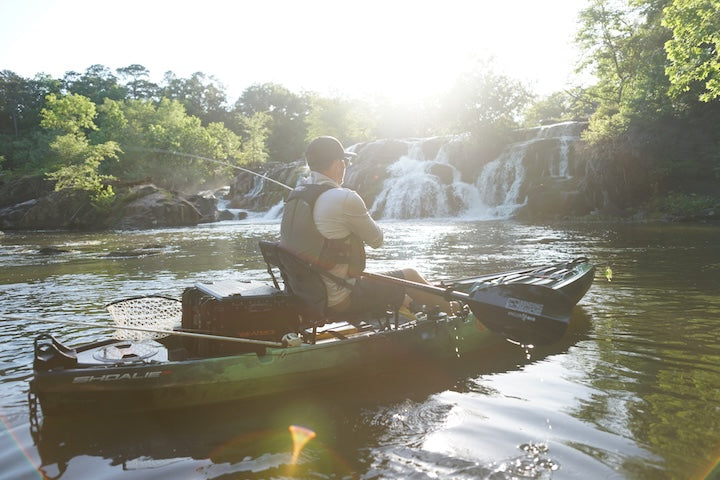
Camping Recipes by and for campers who paddle.
Our first journeys into Quetico and the Boundary Waters wilderness are not exactly remembered for their culinary delights. Camp meals improved considerably after a few trips but we are always on the lookout for something better. Here are some of our favorite campfire recipes. Keep coming back as this list will grow with help from campers like yourself. If you find a camp recipe you like, please return the favor by adding your favorite canoe camping recipe.
YouTube video extra: One easy way to hang a foodpack .
Camp Cooking - A discussion of tools and techniques for cooking in the backcountry.
And please don't forget to come back and add your favorite canoe camping recipe .
Entry > Camp > Recipes >


Ontario Parks, Camping and Outdoors
10 Easy Backcountry Camping Recipes by Jim
February 13, 2016 By Parks Blogger 5 Comments
Hunger is the best seasoning they say, which is likely why everything tastes better when you’re camping. When my stomach is rumbling after a long day in the backcountry, it’s hard for me to believe that as humans, we have the capability to survive for up to three weeks on nothing but “Hudson’s Bay Sauce.” By the way, “Hudson’s Bay Sauce” was a term used by the Voyageurs in the fur trade area to describe a diet of nothing, as in, they were on a diet of “Hudson’s Bay Sauce” because they’d run out of food. Needless to say, this is a situation that’s best avoided which is why good food planning for your trips is key. But no one wants to spend the whole day cooking when in the backcountry. Complicated recipes are impractical and cut into your schedule. Add the lack of refrigeration, weight restraints, and little time for preparation, camping food often gets a bad wrap.
It doesn’t need to be that way though. If you love your food (and who doesn’t), these simple and delicious recipes will make your taste buds dance with joy well into a multi-day backcountry trip!
Note: Cans and bottles are prohibited in the backcountry of Ontario provincial parks. Save weight and stay within the rules by choosing the powdered version of some of the following foods like gravy. Or, empty cans into reusable containers before heading out on your trip.
1) Fry Bread
This is Bannock cooked a little differently. Prepared this way it’s puffy, chewy, cooks a lot faster, and is sure to please. The ingredients will also keep for weeks.
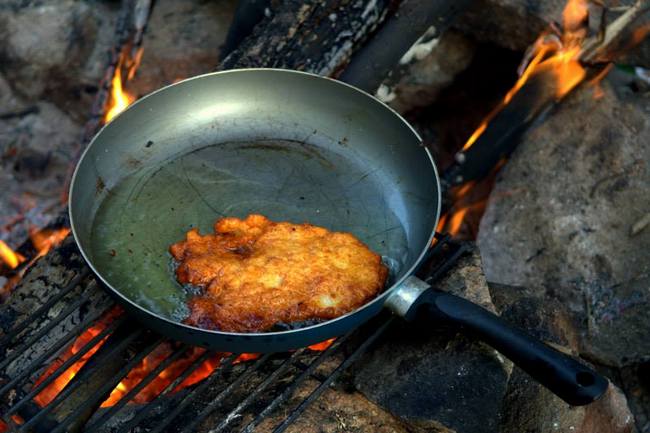
Ingredients:
- 2 cups (500 mL) all-purpose flour
- 1 tbsp (15 mL) baking powder
- 1/2 tsp (2 mL) salt
- 1/2 cup (125 mL) powdered milk
- 1 cup (125 mL) water
- 1/2 cup butter, margarine, shortening or other animal fat (Bacon grease will suffice)
- Vegetable oil, for frying
Preparation:
- In a pot or bowl, mix all the powdered ingredients together. Add the fat last (it’s easier if you can melt it).
- Pour in water and mix with fork, don’t knead. Ideally, the dough should have a fairly dry consistency so it doesn’t stick to your hands when working it.
- Pick the dough up and flatten it into a thin round disk like you were making a small pizza.
- Add cooking oil to a pan and heat it over the fire or camp stove.
- When oil is hot, slowly lay the dough in oil.
- Flip when one side is golden brown.
- Remove when both sides are golden brown and let cool.
- Cooking speed depends on the temperature of your oil but it usually takes about 7 minutes total.
- Serve plain, with honey, maple syrup, jam, peanut butter or just butter.
Feeds two (or one hungry voyageur)
Note: This recipe can also be prepared without the inclusion of an animal fat.
2) Camp Poutine
Take credit where credit is due, taking this Canadian classic recipe on camping trips is my personal idea. Expect rave reviews from friends.
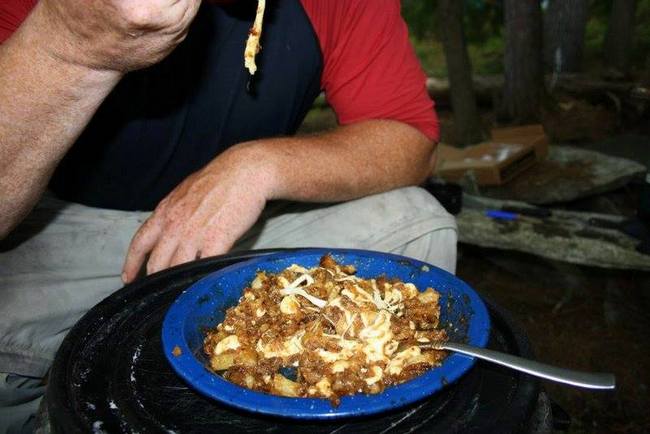
Ingredients:
- Cheese Curds (recommended) or grated cheddar cheese
- 1 can of gravy (powdered gravy can substitute)
- Vegetable oil for frying
Preparation:
- Slice potatoes into French fries.
- Heat up lots of oil in a frying pan. (a pot will also work).
- Slowly add fries to oil and stir until golden brown (at this point the smell is epic).
- It’s best to use a basket spoon to stir with. Don’t worry if the fries break up in the process, trust me, you won’t care when you eat it.
- Leave gravy by the fire to heat up. If gravy is in a can, punch a couple holes in it before you begin heating it to prevent it from bursting.
- Scoop fries out of pan using basket spoon, letting them drain in the process.
- Add salt and cheese to hot fries.
- Pour hot gravy on fries and stir a little as cheese melts.
3) Cheeze Pitas
These can be eaten cold like a sandwich or heated over the fire as a far more delicious option. These are a great thing to pack for lunch as preparation is fast. Cheese and pita will last for weeks and pita won’t get squished like most bread. Vacuum seal pita and cheese for long trips.
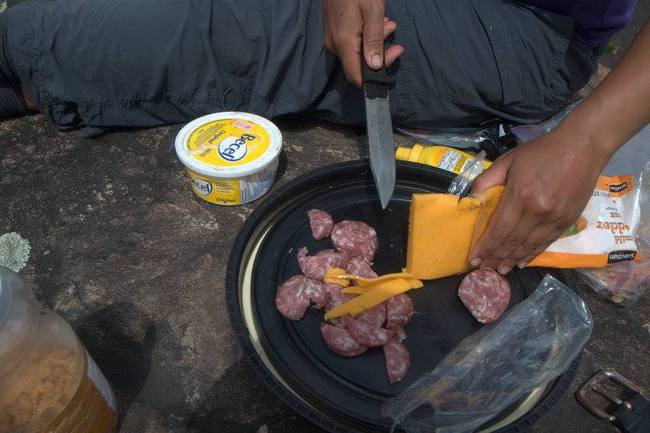
- A sausage that does not require refrigeration like hard salami, summer sausage, or pepperoni.
- For one sandwich, slice cheese, sausage, and onions.
- Add to pita.
- Add mustard.
- Fold pita over and eat.
- Or, heat up over fire on a long handled forked stick until pita is toasty and cheese is melted.
4) Pan Fried Fish Fillets
Possibly the ultimate table fair for camping. And it’s relatively easy to prepare…if you can catch a fish that is! This is great for Bass, Perch, Walleye and Pike.
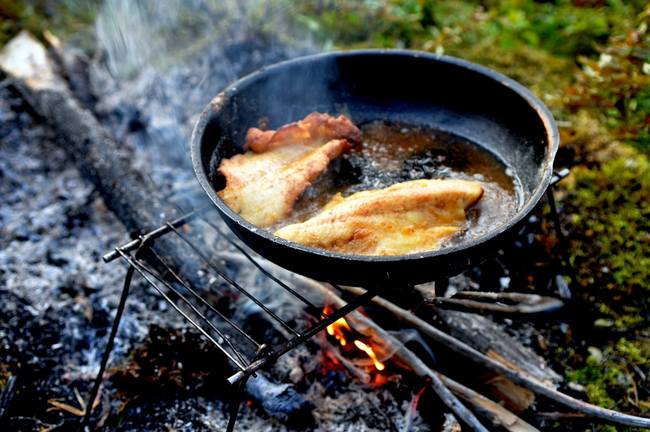
- Fresh fish fillets
- Fish Crisp, pancake mix, or flower
- Vegetable oil
- Thoroughly coat fillets in Fish Crisp (if you don’t have Fish Crisp use flower or pancake mix).
- Heat up oil in pan. Don’t place fish in the pan until the oil is hot. You can test the heat of the oil by flicking a bead of water in it.
- Lay the fillets into the hot oil and try not to drool when you hear the satisfying sizzling sound.
- Cook until golden brown on each side, flipping after about three minutes.
- Let cool and serve plain, with tartar sauce or ketchup.
5) Chicken Quesadillas
Need I say any more?
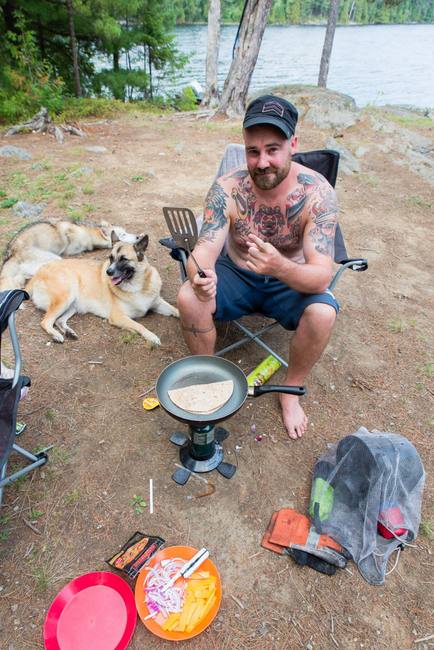
- 1 Freeze Dried Mountain House Chicken Brest.
- Monterrey Jack Cheese
- Flour tortillas
- Powdered sour cream
- Following the directions on the Mountain House packet, boil water and add to packet, let sit for 12 minutes.
- Remove rehydrated chicken breast and dice.
- Shred a plethora of Monterrey Jack Cheese.
- Add chicken and cheese to tortilla and fold over, or use a full tortilla for both the top and bottom.
- Heat in greased frying pan until cheese is melted and tortilla is lightly toasted.
- add water to sour creme and stir.
- Slice quesadilla into triangles and dip in sour cream to eat.
Note: Mountain House Freeze Dried Chicken Breasts also come with instant potatoes on the side.
6) Grilled Trout
There are several ways to cook trout while in the back country. This is my personal favourite and it’ll likely be yours once you try it!
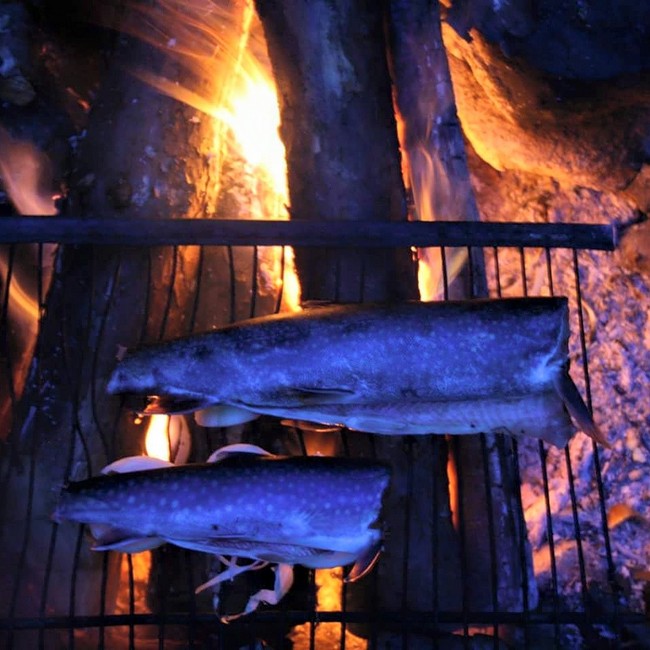
- 1 gutted trout (leaving head on is optional”
- Slice onions into large rings and place them in fish basket grill .
- Place Trout on top of onions and then lay more onions on top of trout.
- Close fish basket grill and cook over the fire.
- The meat will fall of the bone perfectly when cooked and the roasted onions will complement the trout which often has a delicious smoky flavor.
Note: Don’t have a fish basket grill? Grill your trout with onions over a fire on a regular grill like pictured.
7) Pancakes and Ready Crisp Bacon
Pancakes are a traditional and moral boosting camping meal. Add bacon to the mix and you have the breakfast of champions. To spice it up even more, add some wild blueberries, raspberries or strawberries to the mix. The beauty of Ready Crisp Bacon is that is comes pre-cooked, and requires no refrigeration when in its packaging. It also provides ample fat and protein, key elements for tough backcountry trips. Oh ya, and it’s also delicious.
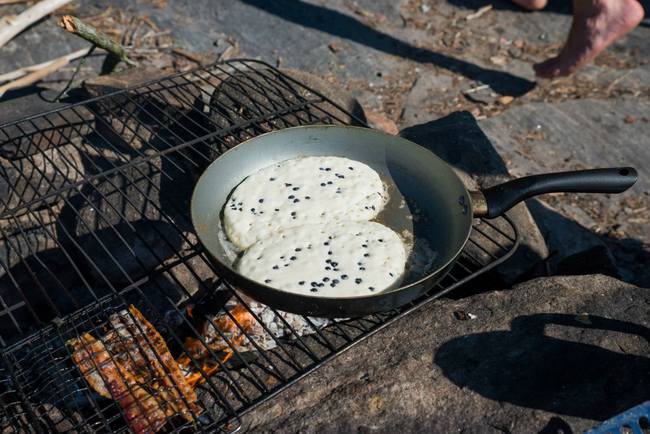
- “Just Add Water” Pancake Mix
- Ready Crisp Bacon
- Maple syrup
- Grease for the pan
Preparation
- Add water to pancake mix while stirring until it reaches the desired consistency.
- Frantically beat the mix until it’s laden with bubbles throughout. This will make your pancakes fluffy.
- Pour batter into hot greased pan (use butter for your pan for extra flavor).
- Add fresh berries.
- Flip once the bubbles in the middle of the pancake burst.
- Simultaneously heat Ready Crisp Bacon on a grill over the fire or drape bacon slices it over a stick and heat over the fire.
- Remove pancake from pan when golden brown on both sides and add a healthy dose of maple syrup.
8) Corn in the Coals
This has got to be the easiest, and one of the most delicious back country camping meals around. It’s not only an easy way to cook corn, it’s also the most delicious, and the coolest way too. Corn is great to bring on trips because it keeps longer and bruises less easily than many vegetables.
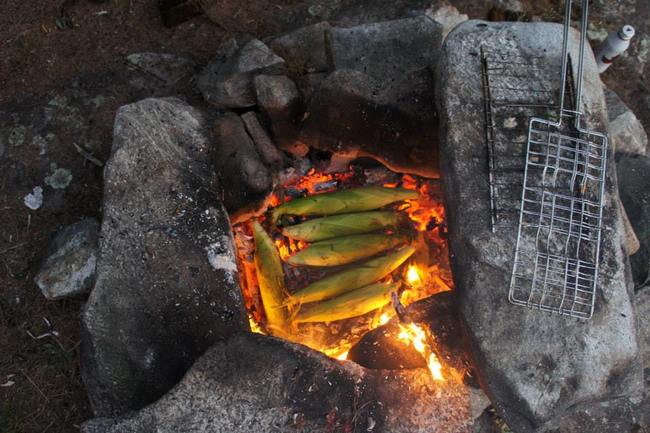
- Soak fully husked ears of corn in the river or lake for about 3-hours.
- Get a nice fire going and let it burn down to a thick coal bed.
- Place the soaked corn directly on the coals and rotate every couple minutes.
- When the husks begin to char the corn is done.
- Husk the corn, add butter and salt, devour.
9) Potatoes and Onions in Tinfoil
These vegetables keep well and don’t bruise easily which makes them great things to bring into the back country.
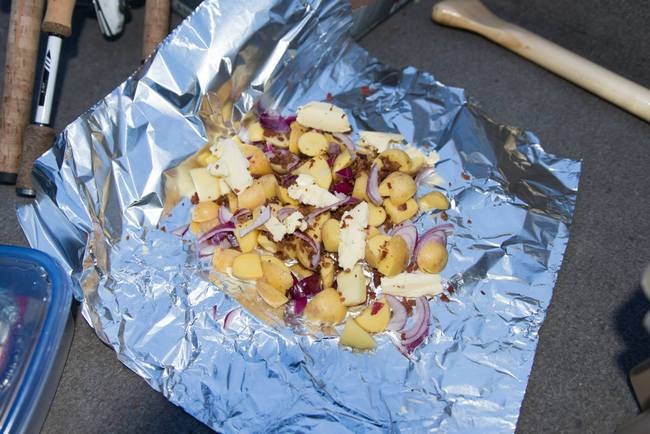
- Get a good size fire going.
- Cut up potatoes into even sized pieces.
- Slice up onions into rings.
- Spread out tinfoil and rub cooking oil, butter or margarine all over it.
- Lay the vegetables out on the tinfoil and shake a healthy dose of seasoned salt on them.
- Wrap the tinfoil around them and add a second layer of foil.
- It’s best if you roll the tinfoil together in the middle and at either end.
- Lay the it into the hot coals of the fire and flip after about 15 minutes. It usually takes about a half hour or more to cook.
- Remove from fire open and let cool.
- Serve as is or with ketchup.
Note: Add sliced carrots to the mix for some extra flare.
10) Crepes with Fried Peaches
Another decadent favorite that can be served several different ways.
- Just Add Water Pancake Mix
- Canned Peaches
- Icing sugar
- Strawberry jam
- Mix pancake batter to a very runny consistency by adding a lot of water.
- Cook in a greased frying pan.
- Dice up some canned peaches and fry beside your cooking crepe
- When crepe is cooked, roll the crepe around some warm, fried peaches and add your choice of toppings. (warning: you may blow up because it’s so good!)
Note: It’s always good to wear a pair of thick leather work gloves if cooking over the fire as they allow you to pull things in and out of the fire without getting burnt.
By Jim Baird
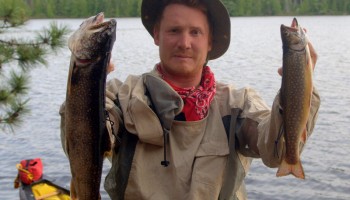
Jim is an adventurer from Ontario. He is almost always out in the backcountry exploring the wilderness along with his canoe and his dog “Buck”. Learn more about him here .
February 15, 2016 at 9:45 am
These recipes all sound great, but how are you able to take cheese or other refrigerated products with you without them going bad?
February 17, 2016 at 4:58 pm
Hey Jocelyn,
Good question. Cheese lasts up to three weeks if vacuum sealed. Especially if you vacuum seal it, then put it in the freezer before you leave on your trip. The same is true for Pita and tortillas. I’ve eaten pita on Day 33 of a tough canoe trip. (admittedly, it was a tad moldy by that time). The vegetables I’ve mentioned, corn potatoes, onion, carrots all keep well and don’t bruise easily. The shortest lasting one of these vegetables in corn which will last about 5 days in the summer. Butter will be good for about 3 days so substitute in for margarine or cooking oil if you’ll be out for a while. I hope this helps!
February 21, 2016 at 6:44 pm
The recipes are great except for the last one which calls for ‘canned peaches’. As far as I know, you are not supposed to brings cans into the backcountry.
February 21, 2016 at 8:19 pm
Yes, in provincial parks you are not supposed to bring canned food into the back country. Maybe reserve this one for camping on crown.
[…] eating utensils, matches, and Swiss knives are also important pieces of gear. As for your food, Parks Blogger Ontario listed many simple camping recipes to choose from, and it’s more fun to cook your own meals when […]
Leave a Reply Cancel reply

Login or post as a guest below Your email address will not be published. Required fields are marked *
Notify me of follow-up comments by email.
Notify me of new posts by email.
About Parks Blogger
You can get latest updates from us by subscribing to our newsletter
Stay connected with Ontario Outdoor Community
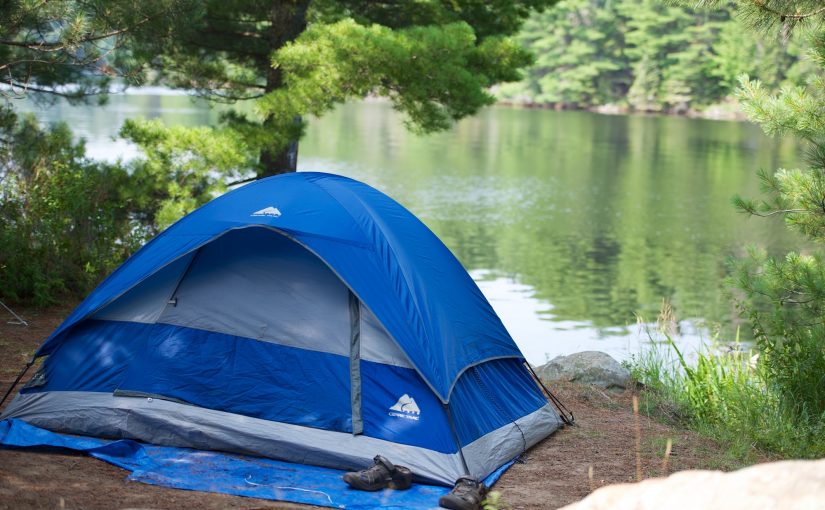

Lightweight canoe and kayak travel

8 Lunch Ideas for Your Next Canoe or Kayak Trip
We may earn commissions if you shop through the links below.
Subscribe to Blog via Email
Enter your email address to subscribe to this blog and receive notifications of new posts by email.
Email Address
Main Dishes for Paddling Lunches
- Wraps, summer sausage (or pepperoni) and cheese. To prepare : Pull a burrito wrap out of the package, slice summer sausage and cheese. Wrap it up and eat. To pack : To preserve the wraps in your food bag, wrap them around the outside of bag so that the wraps follow the contours. Options : On a cold, wind day consider cooking the wrap in the fire.
- Wasa crackers, cheese, sausage and horseradish mustard. To prepare : Take a Wasa cracker, slice sausage and cheese onto the cracker and cover with a big helping of mustard. To pack : Wasa crackers are hardy, but take care when packing them. Keep them in that paper package they come in and pack at the top of your food bag. Many grocery stores carry horseradish mustard in plastic squeeze bottles. Learn how to prevent your Wasa crackers from crumbling .
- Peanut butter, summer sausage and some maple syrup…all wrapped up in a tortilla. This idea comes from Sven Hoaglund. I’m not so sure about the peanut butter, but maple syrup on sausage tastes great. If Andrew Zimmern can eat bizarre foods, so can paddlers. It’s probably tasty.
- Hot soup. To prepare : Kurt Penner suggests heating up soup at breakfast, storing it in a lightweight thermos and eating it a lunch. This is especially good on cold, rainy days. I like carrying along instant soup mixes, which makes the process as easy as heating water and opening a package of soup.
- Fruit, pepperjack cheese and a walnut, dried cranberries and sunflower seed mix. Combined with a lovely crusty loaf of Italian or other good bread covered with olive oil that had herbs and pepper and garlic steeping all day. This suggestion from Tracy Prior Seffers would work best on shorter trips where you can protect the bread or on trips that you’re motivated to make bread the night before.
- Four-oz bag of chicken salad with multigrain sandwich thins, a couple sticks of Polly-O cheese, some Spanish olives. To pack : Kayak Gus tells us that this combo fits inside a Ziplock bag with a single-serve Gatorade drink mix and a Clif Bar.
- Hummus with mini pitas. This idea comes from Agnes Jung. To prepare : Mix powdered hummus with water until the hummus forms a paste-like consistency. I find that mixing the hummus at breakfast and storing it in a plastic bag makes lunch prep faster.
- Pitas! You can put lots of stuff in them such as PB&J, Honey, sausage slices, smoked salmon or tuna from a pouch, cheese, dried beef, etc. To pack : Pitas are fragile so store them on the top of the food bag. You could substitute burrito wraps for pitas and use all the same ideas.
One of my favorite lunches when kayaking are cucumber sandwiches. You’ll need snack rye bread, cream cheese, a cucumber, and dill. To assemble, spread the cream cheese on a piece of rye bread, top with sliced cucumber and sprinkle dill on the top. If you want to get fancy, you can mix a package of dry Italian dressing into the cream cheese before spreading.
Side Dishes for Canoe and Kayak Lunches
- Fruits: Apples hold up extremely well in a pack and taste fantastic at lunch. They supply a crunch often missing from camping food.
- Veggies: Carrots and celery both hold up well in a back, and you can dip the celery into a plastic tub of peanut butter with little mess.
- Trail mix. My recipe for the best trail mix is one bag Peanut M&Ms, one bag mixed nuts without peanuts, one box of Goldfish crackers.
- Cliff bars.
- Homemade energy bars: If anyone has a good recipe, please, Agnes Jung suggests this recipe for Healthy Carrot Cake Power Scuffins
- Fruit cups but they get eaten early to lighten the weight.
- Granola bars.
- Gummy worms. Tim Gallaway says, “Nothing makes a day better like a gummy worm on a rainy-day boating. Gummy worms aren’t just for boating though. We always get them for skiing. They’re great for a quick boost going up the lift.”
Any other ideas?
Share this:
- Click to share on Facebook (Opens in new window)
- Click to share on Mastodon (Opens in new window)
- Click to share on Tumblr (Opens in new window)
- Click to share on Pinterest (Opens in new window)
- Click to share on Reddit (Opens in new window)
- Click to email a link to a friend (Opens in new window)
- Click to print (Opens in new window)
- Click to share on Twitter (Opens in new window)
Bryan Hansel
Bryan Hansel is a freelance writer, award-winning photographer and a former American Canoe Association L4 Open Water Coastal Kayaking Instructor. His home port is on Lake Superior in Grand Marais, Minnesota. He also teaches photography workshops .

You May Also Like

Free Kayak Plans and Free Canoe Plans

Navigation: Dead Reckoning

A Thousand Words For One Image
10 comments.
Lee Gilbert
My fav trail mix is 1 lb of M&M’s and .8 lb’s of M&M’s mixed.
Baby bell cheese is gold. Wax wrap is great to help along a damp fire as well!
I like that M&M mix. :)
Here’s another trail mix from Plight’s Facebook page: Nathan Pitzer mixes freeze dried bananas, M&M’s, cashews, freeze dried pineapple and raisins.
Kurt Penner
Hidden Valley ranch dressing is available in shelf stable 2.5 oz tubs. Great with raw carrots, celery, bell pepper slices.
Caramel fruit dips in individual sized tubs can be found in the produce section of most groceries. Also shelf stable.
Lunch ideas #1 – #3 –> Constipation City baby! Get some baby carrots or apples or something w. fiber in there lol
like the gummy worm idea for skiing tho :)
:) You probably wouldn’t like my typical breakfast menu then — Poptarts! I just checked to see how much dietary fiber was in wraps and crackers. Each wrap or cracker offers about 20 percent (6 grams) of the daily recommended allowance. That’s not too bad.
Ken Campbell
Celery. Dip it in peanut butter and then dip it in a bag of trail mix. Eat. Repeat.
Oranges travel well, too. And English cucumbers are a great substitute for lettuce in a sandwich (or pita). Uncut bell peppers last well but are a bit bulky and you’ll need to eat them within a day of cutting them open (unless its cold or they’re refrigerated) I always carry prunes as an antidote to the sausage and cheese lunches ;-)
Karen L Foster
Dill pickles wrapped in turkey deli meat are a fave along with deer sausage cheese and crackers, apples and peanut butter, grapes and cherries cut up cantaloupe 🍈 and watermelon hero wraps pretzel nuggets 👏🏻😁
Leave a Reply Cancel reply
Your email address will not be published. Required fields are marked *
Notify me of follow-up comments by email.
Notify me of new posts by email.
This site uses Akismet to reduce spam. Learn how your comment data is processed .
CURRENT PRICES END MAY 12
Outside Festival feat. Thundercat and Fleet Foxes.
FROM JUST $44

What are the Best Meals for a Multi-Day Canoe Trip?

Heading out the door? Read this article on the Outside app available now on iOS devices for members! >","name":"in-content-cta","type":"link"}}'>Download the app .
How light do you want to go? Unlike backpacking, which values economy above all else, multi-day canoe trips can bear more weight depending on the length of the journey and how badly you want filet mignon that first night. I go to the Boundary Waters each May with friends and we really, really want those steaks, which start the day hard as hockey pucks but are perfectly thawed by the time we reach our site (our other food splurge is five pounds of gummy worms, but I’d rather not talk about that).
Our meal plan for the rest of the week is significantly lighter, both in weight and calories, and involves a bit of calculated risk. We bank on catching fish for at least one dinner, a strategy that frequently pays off in the form of our signature BWCA meal: Triscuits topped with pan-fried lake trout and Gouda—a bite so delicious that all you can do is giggle like a child while eating it. Other times, our hubris angers the fish gods and we’re stuck eating granola bars at night.
If you want to go lighter (but more involved), follow the lead of Daniel Klein—a former cook at big-deal restaurants such as The Fat Duck and Bouchon and the creator of the James Beard Award-winning Web series The Perennial Plate , which looks at sustainable food practices around the world. I met Klein a few years ago and was struck by his simple, flavor-focused approach to eating in the BWCA. He starts by packing a few staples: salt, butter, a little cooking oil, dried fruit and mushrooms, wild rice, a couple spice mixes. And though he brings an emergency supply of dried food, he prefers to fish and forage for his supper, aided by an old spinning rod and his trusty Samuel Thayer field guides .
In the spring, he pairs wild ramps and morels with his bass, in late summer wild chanterelles and lotus root. Klein’s philosophy: Put a little effort into your meals and you can ditch that terrible dried soup for good (or at least until you’re skunked on the lake or in the woods).
Or just crowd-source your menu. BWCA.com’s messageboard is the finest spot online for all things Boundary Waters-related. The camping recipes forum is filled with discussions ranging from whether or not you can pan-fry chocolate chip cookies (you can and should), to DIY food dehydration tips.
- Water Activities
Popular on Outside Online

Enjoy coverage of racing, history, food, culture, travel, and tech with access to unlimited digital content from Outside Network's iconic brands.
Healthy Living
- Clean Eating
- Vegetarian Times
- Yoga Journal
- Fly Fishing Film Tour
- National Park Trips
- Warren Miller
- Fastest Known Time
- Trail Runner
- Women's Running
- Bicycle Retailer & Industry News
- FinisherPix
- Outside Events Cycling Series
- Outside Shop
© 2024 Outside Interactive, Inc
404 Not found

Canoe Trip Meals
Canoe Trip Breakfast Ideas
1. Breakfast Sandwiches
Another great choice is breakfast sandwiches. If it's early in the trip, you can bring English muffins. If you want to have this meal later into the trip, you can use wraps, powdered egg and bacon bits or sausage.
Ingredients: wraps or English muffins, powdered eggs, powdered milk, bacon or sausage, ketchup packets, cheese optional: avocado, tomato
Instructions:
Mix powdered eggs and powdered milk at a 6-to-1 ratio and mix with water until thick and runny. Scramble the eggs.
If needed, cook the bacon and toast the english muffins.
Add scrambled eggs, bacon and cheese to english muffin or wrap. Add toppings and ketchup and close.
Optional: Wrap in tin fold and heat over the fire to keep them warm and toasty while you wait for your coffee to brew.
2. Cinnamon Buns
Another classic for a rest day is cinnamon buns. They require a Dutch oven and some prep work, and you'll want to make sure you pack some butter dedicated for this meal because it needs a lot of butter.
Ingredients: baking mix*, flour, brown sugar, cinnamon, butter, optional: nuts, raisins, powdered sugar
Add equal parts flour and baking mix into a bowl with a little cinnamon; gradually add water and stir. You want a ball of dough that holds, but you don't want it too sticky.
On a cutting board with a little flour, roll out the dough so it's flat and in an oval.
Spread butter over the surface of the dough, then add a generous amount of brown sugar. Sprinkle cinnamon and nuts / raisins.
Roll it lengthwise so it looks like a tube. Then, slice the tube so you have a bunch of little cylinders.
Butter the inside of the Dutch oven. Be generous! Then put your cinnamon rolls (cylinders) into the Dutch oven. Place on the embers of the fire and wait. They will probably need ~20 minutes, but check regularly.
Once crispy brown, remove and sprinkle some powdered sugar on top.
Hi there! In order to view outdoor education resources, you need to have an All-Access Account.
New here? Sign up for an account here.
Already a Community Member? Upgrade your account here.
- Good Takeout
- Good Swim Spot
- Thunderbox / Outhouse
- I have read and agree to the Terms of Service
There was a problem reporting this post.
Block Member?
Please confirm you want to block this member.
You will no longer be able to:
- See blocked member's posts
- Mention this member in posts
- Invite this member to groups
- Add this member as a connection
Please note: This action will also remove this member from your connections and send a report to the site admin. Please allow a few minutes for this process to complete.
The Unknown Enthusiast
A Boundary Waters Meal Plan and Menu Guide [2024]
Going on a canoe trip in the Boundary Waters is an amazing adventure – but the remote and isolated location means that food preparation and packing is a little bit trickier. While making a Boundary Waters meal plan does take more, well, planning, and specific preparation, the effort is definitely worth the adventure you’ll get to experience!
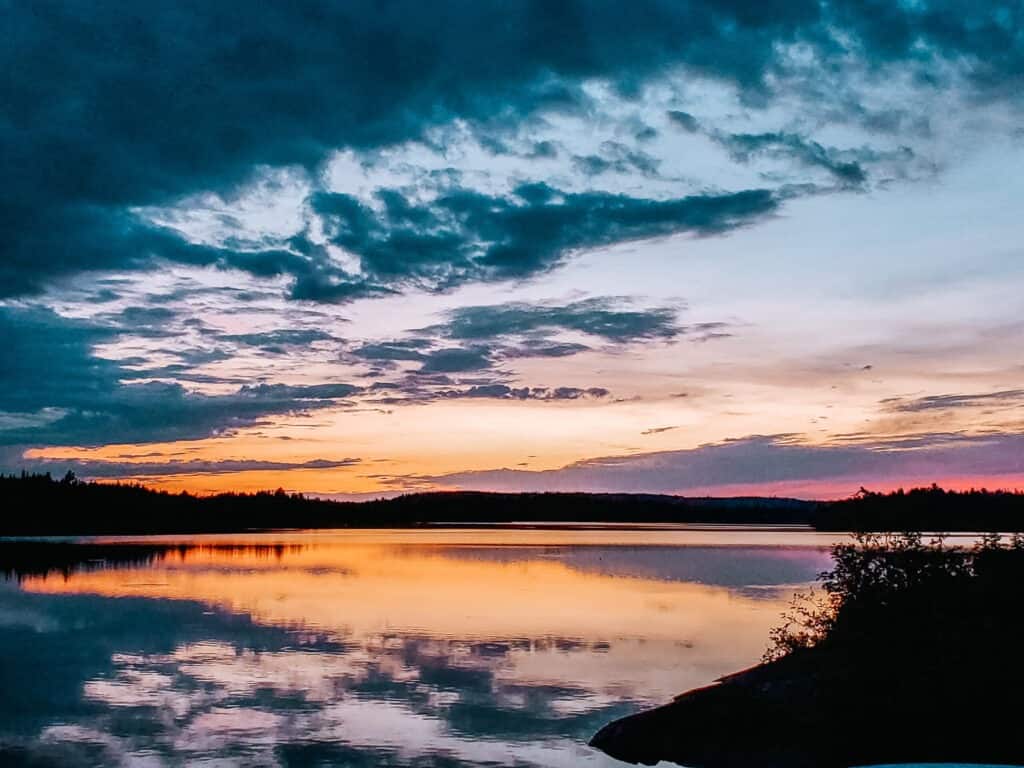
Before we get into the different tips and tricks we have for menu planning and meal prep, consider reading our other articles about our Boundary Waters Itinerary , What to Pack For the Boundary Waters , and Safety and Planning Information To Know Before You Go . They all have lots of relevant information for a successful Boundary Waters trip.
This post contains affiliate links. When you buy through these links, I may earn a commission at no additional cost to you.
Main Points for Menu Planning in the Boundary Waters
There are three main points to remember when choosing what food to bring and meals to plan on a Boundary Waters canoe trip:
- Most food cannot be fresh . It simply isn’t practical to try and keep large quantities of foods like meat and dairy cold, and softer foods like bread and fruit get bruised or squished too easily. Expect to have almost all dehydrated or lightly packaged food.
- Only bring products with the smallest amount of packaging (and thus, waste) with you. For example, canned foods are not a good choice because you have to pack a bulky can out with you. Glass cannot be brought into the Boundary Waters.
- Try to be very precise on how much you will actually need to eat – DO NOT bring a lot of extra food (especially food that will be cooked).
While most food in your Boundary Waters meal plan needs to be non-perishable, with careful packing, you can bring a limited amount of frozen items. For us, these items included cheese and salami for lunches, a small quantity of cooked ground turkey and sausage, a small amount of tomato paste (for the pasta meal), and then steaks for the first night.
To keep these foods cold, bring a small, soft sided cooler with some frozen water bottles in it. Vacuum-pack all items separately (this helps a lot! If you don’t have access to a vacuum packer, squeeze the air out of the bags really well) and freeze everything ahead of time. Be very careful to keep the cooler out of the sun at all times. If you do all of these things, the food can last for 2-3 days in the cooler.
Because of how much space it takes for a relatively small amount of food, this really won’t work well with a large cooler, so choose intentionally what fresh/frozen foods you want to bring.

Minimizing Packaging Waste
When prepping for your canoe trip meals, repackage food to eliminate waste as possible. Any trash (besides paper that you can burn) will need to be packed out, so you do not want to bring extra packaging with. For example:
–We brought oreos for a dessert for a few meals. Instead of bringing the whole package, we put them into sandwich bags, which takes up much less space as garbage than that plastic oreo packaging.
–One night we made dehydrated lasagna (really delicious actually!) and instead of bringing up the whole #10 can, we opened and repackaged it into a gallon ziploc bag.
Minimizing Leftovers
You need to be really deliberate when you are planning menus because there can be no leftovers of cooked, perishable food. Leftover dried fruit or granola bars from lunch can just be kept until the next meal, but leftover chili or steak or potatoes can’t be stored properly to prevent spoilage, and also are “smellables” that can attract animals.
All cooked food MUST get eaten at that meal. If you have lots of leftovers, you are going to just have to keep eating until it’s gone. That’s not a particularly fun scenario, so really look at portion sizes and consider people’s actual appetites to be as exact as possible with how much you will actually eat.
Other General Information For Your Boundary Waters Meal Plan
If you feel confident about your fishing abilities, you can plan fish into your Boundary Waters meal plan. We are not the most proficient fishers (we did a lot of fishing, but just a tiny bit of actual catching of fish, haha), so we did not include fish in our meal plans any day.
Cooking Gear to Bring:
For our Boundary Waters meal plan, we brought:
- 1 bear barrel – all food gets packed in the bear barrel and everything is locked and latched in the bear barrel at night and placed away from camp. This particular bear barrel is great because it can hold a lot of food, latches up very securely, and INCREDIBLY importantly, has shoulder and waist straps so you can portage it easily.
- 1 large metal spoon
- 1 metal spatula
- 2 iron skillets – for frying as well as to use together as a dutch oven (we did cornbread and crumb cake in the makeshift dutch oven)
- 1 large pot
- One bowl and utensils for each person
- Matches and fire starters
- These backpack saws are worth getting because they pack down really small. We had a couple so multiple people could be working on firewood at the same time.
- Paper towels for wiping the iron skillet with oil after use, and for any other cleanup needed
- If there is a fire restriction when you leave (it happens), you will need to bring a small butane stove to cook food on. Double check fire restrictions right before you head up, just in case!

Tip 1: There is a metal grate over the campfire at each campsite
Tip 2: We needed a decent bottle of oil to re-oil the iron skillets, and to use in recipes. We brought a 16 oz container of oil, and if we would have had to cook fish on the trip, we would have run out of oil.
Tip 3: If you are running low on space, nestle food inside the large pots and carry them in the bear barrel.

We had two main methods of water purification. Each person had their own personal water bottles with filters that we could fill up using lake water. These are awesome because they filter out 99.9999% of bacteria and other organisms so you can easily get a drink anywhere, and you can drink from them immediately (instead of having to wait several minutes for the water to filter). Everyone needs their own filtered water bottles .
For campsite water use, we used an inline water filter with two 2-gallon containers. One 2-gallon container was filled with lake water and it filtered through the inline filter to the other 2-gallon container. This was used for water needs at the campsite. We also had iodine tablets and neutralizer as a backup system.
Garbage/Waste
All garbage has to be packed out. We used a lot of gallon sized ziploc bags to contain different items for meals – when the food was gone from a gallon bag, that bag became the garbage bag for the day. We then kept all the garbage contained together. These bags are kept at the top of the bear barrel and unloaded/reloaded at every meal.
To do dishes, you need to have biodegradable, fragrance-free dish soap – this soap fits the bill for both requirements and worked really well. Before you wash the dishes though, you need to eat all the food in your bowl, and lick the bowl clean so there is as little food left as possible. Then, do dishes away from the campsite and scatter cleaning water into woods away from the campsite.
How to Pack Your Food in the Bear Barrel
A big part of making your Boundary Waters meal plan work really efficiently is connected to how you pack your food. When packing food in the bear barrel, it is important to have your food layered AND divided AND labeled
You want to pack your food so that the first meal you will eat is on the top of the bear barrel and the last meal you will eat is on the very bottom. This means that you will need to have specific things planned out for each meal – trust me, you do not want to just throw everything in and dig around and unload each time you need to eat.
Between meal sections in the bear barrel, we used brown paper grocery bags and cut out circles that were exactly the diameter of the bear barrel (or maybe slightly bigger). Each circle was labeled with the meal (Tuesday lunch, Tuesday dinner, Wednesday breakfast, etc).

Since the last meal we ate on our trip was Saturday lunch, that was the first food in and placed on the bottom of the barrel. Then the circle that said “Saturday lunch” went on top of that, followed by the food for Saturday breakfast, with the “Saturday breakfast” circle on top. Then the food for Friday dinner, followed by the “Friday dinner” circle, etc, all the way up to the top with our first meal on the lake – Tuesday lunch.
The cooking gear then went on the very top. We didn’t have quite enough room for the cast iron skillets to fit inside the first couple of days, so those got bungeed to the outside of the bear barrel.
While you can’t have any leftovers of cooked food, and you don’t want to have tons of leftovers of non-perishables, having a little bit extra dried fruit, jerky, granola bars, etc is okay – those can just stay on top and get moved down as options for snacks or extras for other meals.
Note: Toothpaste, soap, shampoo, lotion, and everything else with a smell goes into the bear barrel at night. The bear barrel gets latched and put away from camp at night before dark.
What Types of Meals Are Best for the Boundary Waters?
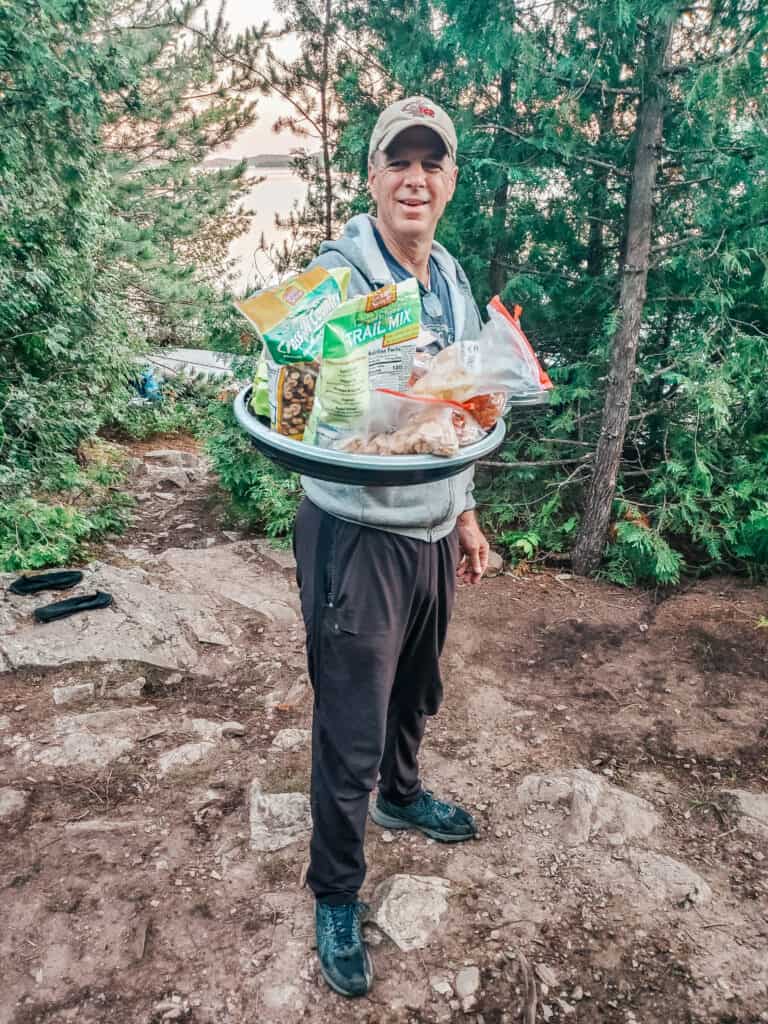
Breakfast: Best if it’s minimal prep and easy to clean up, and starts you off with good energy for paddling and portaging.
Lunch: Grab and go food – a meal made from snacking type foods.
Dinner: Best time for making a fire and cooking
- Protein and carbs because you will use a lot of energy
- Things that you can prepare easily
Tip: For your Boundary Waters meal plan choose foods that are not soft and won’t be smushed or bruised as they are loaded into the bear barrel (e.g. bananas, sandwich bread).
Our Boundary Waters Menu

Okay – now to the actual Boundary Waters menu and specific canoe trip meals we brought. There are lots of options for food to bring, but this menu has worked really well for us.
Tuesday Menu
Breakfast (at outfitters): Breakfast burritos with fresh scrambled eggs (brought butane burner and cooked at picnic table), bacon (pre-cooked), and cheese, OJ. We brought our own food but Williams and Hall (our outfitter) does offer a cooked breakfast you can buy from them. It is a little pricey so we’ve always just done our own, but getting breakfast from them is definitely an option too.
Lunch: Hard salami, cheese, and crackers, cookies (oreos or packaged chocolate chip cookies)
Dinner: Fresh steaks (frozen beforehand), potatoes, raw carrots
Wednesday Menu
Breakfast: Pancakes (no syrup, too messy and smelly), dried fruit
Lunch: Cheese (vacuum-packed, in cooler), jerky, dried fruit, granola bars
Dinner: Dehydrated chili (Bear Creek brand – you can find this in the grocery store) with sausage and ground beef (precooked, frozen, vacuum packed, in cooler), fresh cornbread (mix that just added water and oil, cooked in skillet)
Thursday Menu
Breakfast: Breakfast bars, dried fruit
Lunch: Flat bread wraps with chicken (chicken pouches) and cheese (vacuum packed and in cooler), oreos
Dinner: Pasta and red sauce with sausage (precooked sausage patties, vacuum packed and frozen. We mixed water, frozen tomato paste, and seasonings to make the pasta sauce), fresh biscuits (mix that adds water, cooked in skillet)
Friday Menu
Breakfast: Bagels, cream cheese packets, fruits, beef jerky
Lunch: Bagels with beef sticks, granola bar, cookies
Dinner: Lasagna (dehydrated, Mountain House Adventure Meals brand, was actually very delicious), Krusteaz Crumb Cake
Saturday Menu
Breakfast: Oatmeal, dried fruit, granola bars, hot chocolate
Lunch: PB & J sandwiches with flatbread, cookies
Dinner: Pick up food on the road, while driving home
Hopefully this gives you some good ideas for menu and meal planning in the Boundary Waters! Now go have a great trip!
The Boundary Waters Canoe Area Itinerary: A True Wilderness Experience
What to Pack (and Not to Pack) For a Boundary Waters Canoe Trip
Safety and Practical Information to Know Before You Go to the Boundary Waters
Pin for later!

Stephanie is the author of The Unknown Enthusiast. She's visited 21 countries and 37 of the 50 US states (but her first love will always be France). When she's not traveling, she enjoys reading, taking naps, playing games, eating popcorn, and spending time with her husband (Matthew) and 4 daughters. Stephanie lives in Alabama, USA.
Similar Posts

27 Super Fun Things to Do at the Grand Canyon with Kids

13 Things to Do With a Day in Chattanooga
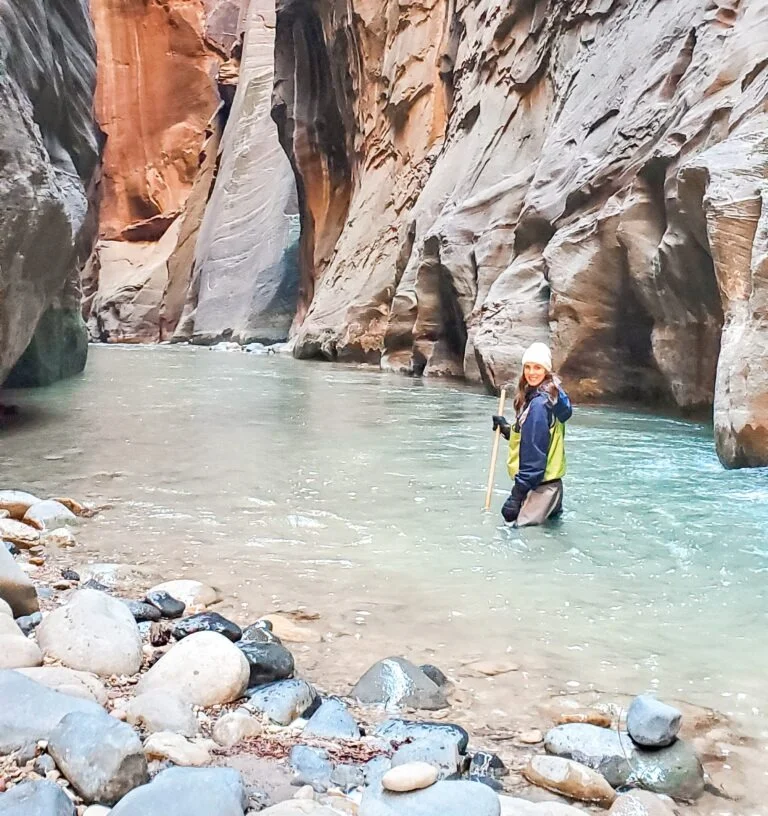
Hiking the Narrows in Winter: Everything You Need to Know

Is Washington DC Worth Visiting? 14 Reasons to Consider

23 Exciting Day Trips from Huntsville, AL
![canoe trip meal ideas Best Gulf Coast Beaches for Families [2024]: Where To Stay and What To Do](https://theunknownenthusiast.com/wp-content/uploads/2021/12/20210828_160926-2.webp)
Best Gulf Coast Beaches for Families [2024]: Where To Stay and What To Do
- Get Paid to Review Campsites!
Stay in the Loop
Subscribe for exclusive content, giveaways, new products and more!

- Backpacking
- Backcountry Cooking
- Wilderness Medicine
- Destinations
- TRIP REPORTS
The ULTIMATE Guide to Canoe Camping
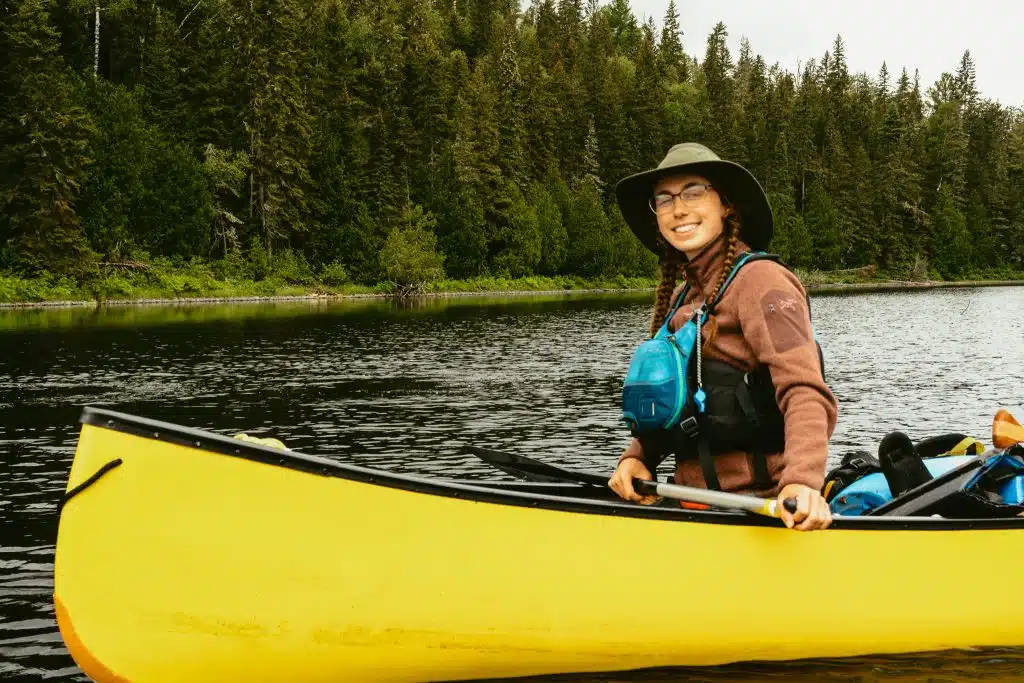
Canada is a prime destination for canoe camping, with a nearly endless list of possible destinations. I’ve been canoeing all my life and still feel I have only scratched the surface. But if you’ve never been on a canoe trip before, getting started can feel pretty intimidating. Where do you go? What do you pack? Will there be bears?
In this post, I’m going to outline everything you need to know to plan your first canoe trip. From choosing a destination to packing your gear to execution – this guide will have you ready to hit the water and get paddling!
Pre-Trip Planning
Choosing your destination.
As I said, the list of destinations is practically endless. So where do you start?
If you’re new to canoe camping, you want to choose a destination that is somewhat popular and isn’t too far away , and an added bonus would be somewhere with developed facilities, like clearly marked campsites and thunder boxes.
I recommend new canoeists choose a national or provincial park. For example, if you are in Ontario I recommend either Algonquin Provincial Park or Killarney Provincial Park because they are easily accessible, fairly popular and have outfitters who set you up with gear. If you’re outside Ontario, you can find good destinations by asking your local MEC or REI (or another outdoor store in your area).
Do you need a reservation or permits? A lot of these destinations will require you to register for campgrounds or obtain a permit, which can usually be done through the park’s website or an outfitter. If all you need is a permit to be in the park, you can do this before finalizing your route (see next section).
However, some parks (like Killarney or Algonquin) require you to book specific campsites/lakes. In this case, before you can book your trip you will need to plan your route.
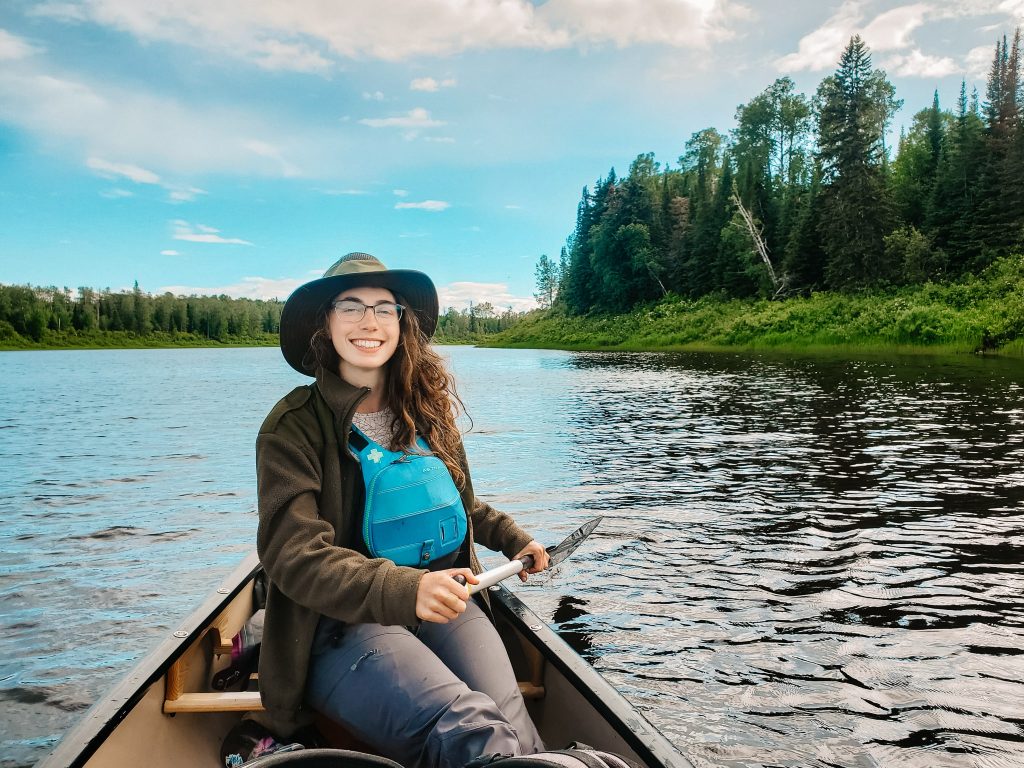
This post may contain affiliate links. If you make a purchase through one of these links, I may receive a small commission at no extra cost to you. Your support is much appreciated! You can learn more by reading my full disclosure .
Planning your Route
Planning your route can be challenging, especially if you are not experienced. For new canoeists, I estimate a paddling speed of 3.5 km per hour and I recommend keeping portages under 400 m .
Pro tip : Don’t plan to be paddling for a full 8 hours each day – that isn’t an enjoyable way to get started in canoe camping. Keep the trip easy so you can focus on other skills (cooking, setting up a tent) in addition to paddling. Also, you will likely overestimate your speed, so plan on only paddling 4-5 hours per day.
How long should you be out? For your first few trips, I think 1-3 nights is a good length of trip.
Once you have a rough idea of how many kilometers you want to paddle each day, as well as the length of the trip, you can choose your route. There are a few different strategies I suggest to new canoeists.
- Call the park’s outfitter (i.e. Algonquin Outfitters) and ask them what they think. The guides are extremely knowledgeable and will be able to help you choose a route that matches your abilities.
- Purchase a park map that shows campsite location, portage lengths and distances between campsites. If you call the outfitter, they can help you find the best maps for your trip
- Go to the park’s online reservation system and look at where the campgrounds are located.
- Google something along the lines of “Easy 3 day Algonquin canoe routes”. I feel this is less effective than calling the outfitter directly, but is also an option,
Regardless of how you choose your route, ensure you know where you will need to pick up equipment and leave your car while you’re canoe camping.
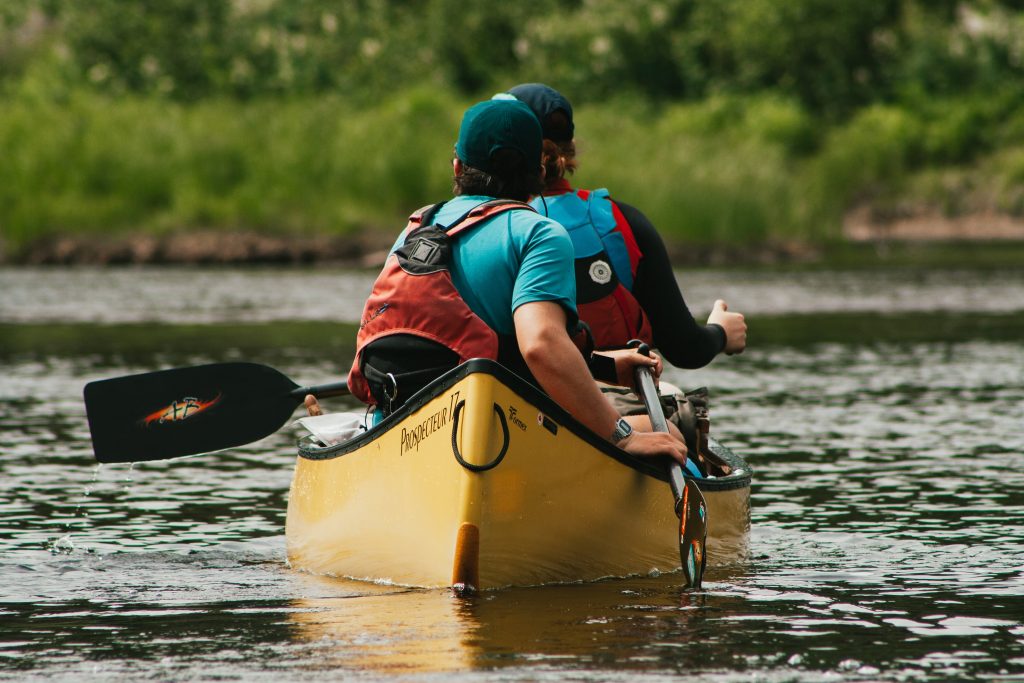
Pre-Trip Packing
Unless you have your own equipment, contact an outfitter about getting the gear you need. Many provincial and national parks have outfitters that service the park, or you can buy/rent gear from a place like Mountain Equipment Co-op . Here’s a fairly comprehensive list of what you’ll need for a canoe trip.
What You Will Put Everything In
In a moment I’m going to list off a lot of equipment for you to bring on your canoe trip. Before we get into all that, let’s talk about what you will put all the equipment in.
Dry Sacks : Dry sacks are bags that keep your stuff dry. You can get them as small as 5 L and as long as 50 L (the large ones often have backpack straps). I recommend going with the brand SealLine (best quality) and ordering from Altitude Sports because they’re often on sale.

Backpacks : Some people put all their personal things in small dry sacks, and then put all the dry sacks in a hiking backpack. I don’t personally do this, though some of the guides I work with swear by it. You can also get large canvas backpacks for the equipment that doesn’t need to stay dry (pots, pans, utensils, tarp). I’ve done this for canoe guiding with camps, though I now prefer to use barrels.
Barrels : I love barrels. They aren’t quite bear proof, but they are rodent proof and water proof and the large top opening makes it easy to find things inside. They are primarily used for food, but I like using them for all my gear. I will put my things in smaller bags to keep everything organized inside.
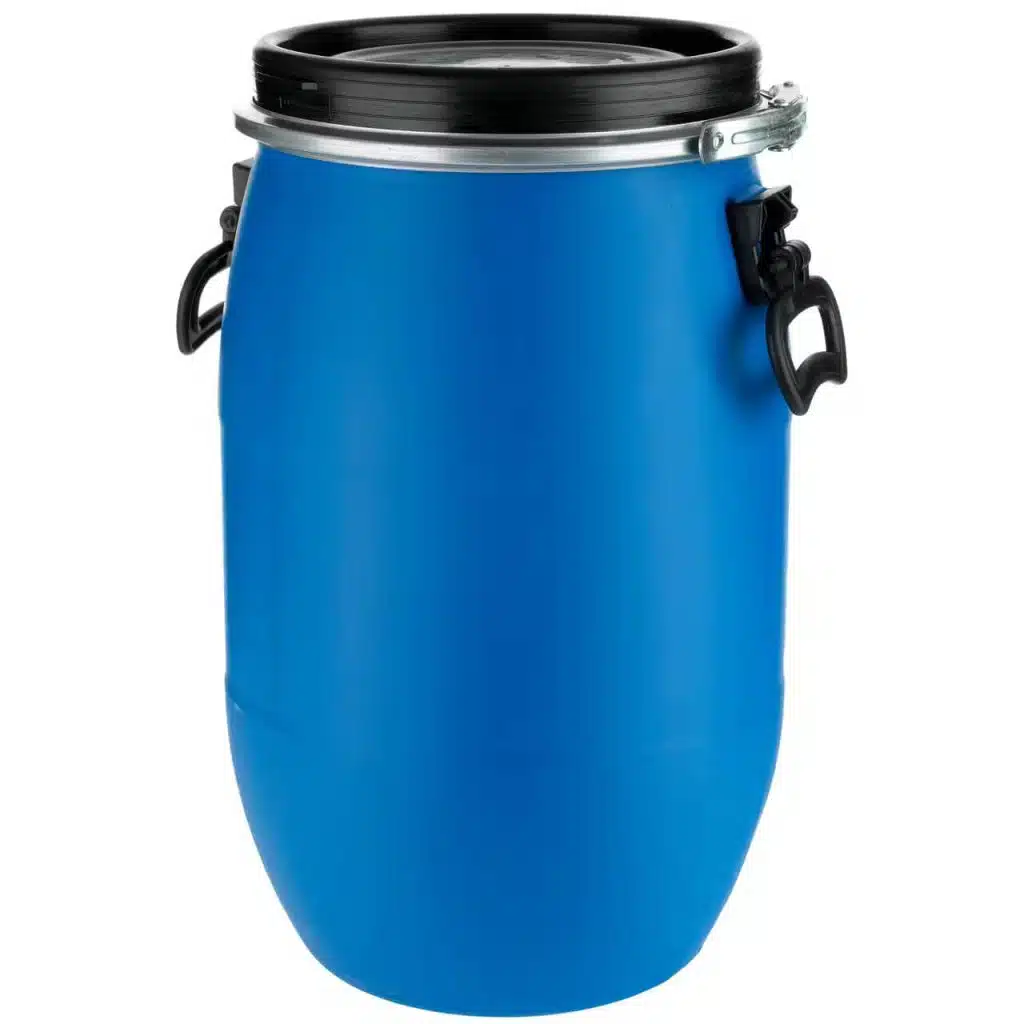
Paddling Equipment
All of the paddling equipment can be easily rented from the park’s outfitter.
Canoe : 1 per two people paddling (you can do three in a boat, but it makes the canoe more wobbly and is uncomfortable for the middle person). Wherever you’re going, you’ll likely be able to rent a boat. If you’re wondering though, my favourite flatwater canoe is the Nova Craft Prospector 17 .
Paddle : 1 for each person paddling + 1 spare
Lifejacket : 1 per person + 1 spare (Although you can get these from the outfitter, I’ve also preferred to have my own paddling lifejacket. I used the one below for ~50 nights canoe camping and still really like it.)

Safety Equipment
First Aid Kit and InReach / Satellite phone : I have a post on building a wilderness first aid kit that you can reference. You can rent an InReach and First Aid Kit from an outfitter. If I’m on a long trip, I have a 30 L barrel for the First Aid Kit and InReach / Satellite Phone. Otherwise, I keep it at the top of my 60 L barrel with my personal gear in it.
Pro Tip: It is important to keep both the First Aid Kit and the InReach / Satellite phone dry and easily accessible. You never know when you will need them.
A note about safety : Many inexperienced paddlers do not wear lifejackets or carry safety gear with them. They haven’t been camping long enough to have a close call and understand the importance of being prepared. Don’t be like these people. Wear your life jacket. Bring a first aid kit and communication device.
What to Wear While You’re Canoeing
I have a detailed post on what to wear canoeing , but here is the gist of it:
Quick Dry Pants and/or Shorts : I typically bring one pair of each. I have a pair of MEC hiking pants, but for shorts, I typically just use shorts you’d wear to the gym. Nothing fancy.
Quick Dry T-shirt : I’m still using the polyester quick-dry shirts I got in high school track and field tournaments a full 7 years later. Again, nothing fancy, it’ll get dirty anyway. A tank top works too, but I rarely paddle with anything but a T-shirt on because I get sunburned so easily. I’ve also started wearing this quick-dry anti-odour t-shirt and have found it nice.
Bathing Suit/Underwear & Sports Bra : Bathing suits are great if it’s hot and you want to go from a quick tip during the day, but some people prefer to just wear underwear and a sports bra (if applicable).
Wet Shoes : Whenever you think your feet might come in contact with water (while canoeing, when it’s raining) you wear your wet shoes. I prefer to use closed-toed trail running shoes so I can wear them during a portage or when walking through rapids too (for my last season canoe tripping I wore Salomon trail running shoes and loved them, however, the exact style has been discontinued). Some people prefer short hiking boots too.
Read This Next: Best Shoes for Canoeing: What to Look For and What to Buy
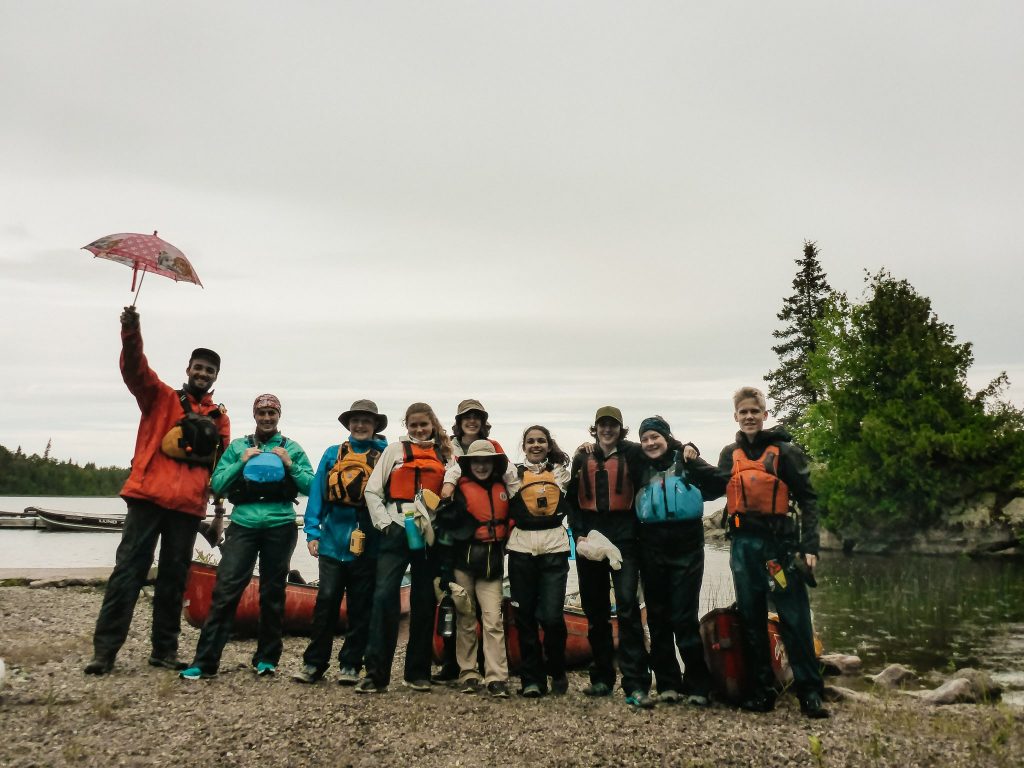
What to Have in the Canoe With You
Clear 10L dry sack : This is more a personal preference, but one of my favourite pieces of gear is a clear 10 L dry sack. Everything I might want during the day gets put in there. It keeps small things easy to access and quick to find, but it’ll also keep everything dry.

In the dry sack I pack (in roughly this order):
Toiletries : I keep my toothbrush, toothpaste and chapstick in here so I don’t lose them in my larger dry sack or barrel. Plus, I’ve usually packed up all of my stuff and loaded the canoes before I’ve eaten breakfast; having them here makes it easy. I don’t need it during the day so it goes at the bottom of the bag.
Fleece Long Sleeve Shirt : This again is more of a personal preference. I like to have a shirt handy if it’s windy or chilly on the water, and fleece dries relatively quickly if it were to get wet. I don’t take it out too often, so it’s near the bottom.
Rain Pants : If you’re going for a short trip, rain pants aren’t necessary but I strongly recommend having them. If it’s raining during the day you’ll stay much warmer if your legs are dry. Even at the site, you’ll stay so dry and be so much happier when you’re setting up your tent or cooking in the rain.
Sunscreen , bug cream , sunglasses , buff (if I’m not already wearing it), sunhat .
Disposable camera (or another type if you’re fancy).
Raincoat : Good quality raincoats need not be expensive. For a weekend in Algonquin, you don’t need a $400 Gore-Tex jacket; I’ve used a basic Patagonia Torrentshell (~$149) for three years now. It’s been used in the Canadian Arctic, on 20+ day river trips and short hiking trips in New Zealand, and still works great! I keep my raincoat at the top of the dry sack for quick access!
Update : I’ve since upgraded a lot of my camping gear, and you can read more about them in my post: My All-Time Favourite Camping Gear .
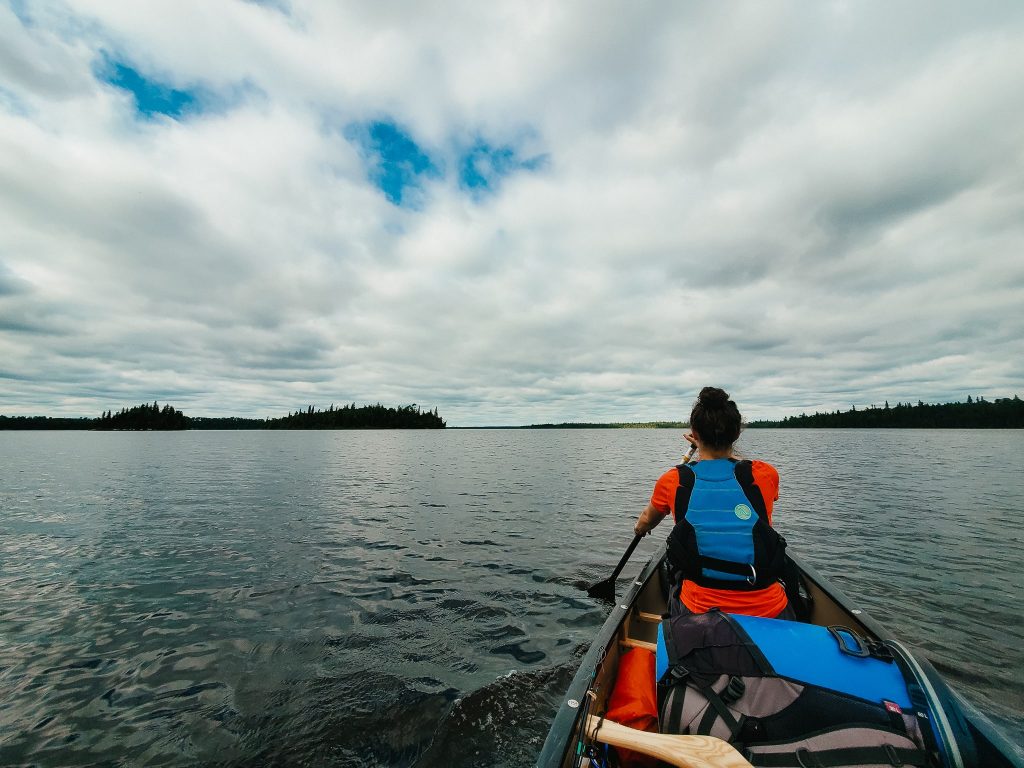
What to Wear At Your Campsite
Once my group has arrived at our campsite we all unload boats, and then some set up tents while others collect firewood. Once camp is in good shape, I change into my site clothing (weather permitting). With each canoe trip, you do you’ll learn more about what you like best. This is typically what I wear:
Dry Shoes : Tevas are popular because they dry quickly if you accidentally get them wet, they’re easy to put on and take off, and you can wear wool socks underneath.
Fleece and (Synthetic) Down : I like fleece because it’s warm and dries quickly, so I bring a pair of fleece pants and a fleece sweater. I got these Patagonia fleece pants on sale and I wear them almost every day now.
And the Patagonia Better Sweater is now in rotation with a youth large North Face long sleeve I got from a lost and found six years ago. I also have an Arc’teryx puffy down jacket I like to wear. However, I typically only wear it at the site because I don’t want it to get wet if I were to fall into the water.
Note : I’ve included links to my favourite gear which isn’t exactly inexpensive. Over the years I’ve slowly acquired a lot of high-quality clothing and equipment. But if you’re just getting started don’t stress about having fancy gear. Shop sales and thrift stores and rent if you need to. Finances should never force you indoors.

Synchilla® Fleece Pants
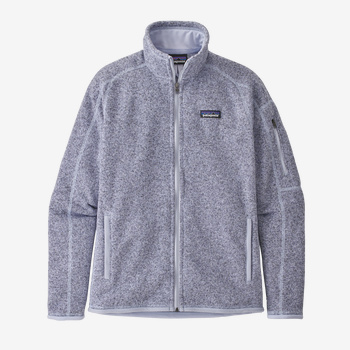
Long Underwear : For short and close trips, a pair of non-cotton tights and a non-cotton long sleeve are a great substitute for expensive long underwear. If you would like something a little more technical, long underwear (both pants and shirts) are either made of merino wool or synthetic material.
Merino wool is warmer and wicks away moisture better, but it’s also more expensive than synthetic. If you’re curious and want to splurge a little, this SmartWool shirt and these SmartWool pants are my favourite base layers I’ve ever owned.
Wool Socks : Warm feet are happy feet! Bring a few pairs. SmartWool is my favourite by far, but whatever brand you choose just please don’t make them cotton! Once they’re wet they’re wet forever.

What Equipment to Pack
Your equipment pack carries all the hard wear you’ll need. This covers fire starting, water purification, cooking, shelter, etc.
Matches and lighters : I bring both. Keep them in a plastic bag to prevent them from getting wet. Pro tip: Keep some in the Equipment Pack, some in the First Aid Kit and some in your personal bag. That way if one bag gets wet, they don’t all get wet.
Cooking equipment : You will need a cooking stove and fuel canister (even if you plan on cooking over a fire). If it rains or there is a fire ban, you will need a stove. If you have room in your equipment pack, you can bring a small grill for over the fire.
Cooking utensils : Bring a pot with lid, frying pan, spatula, spoon, knife and fire glove for cooking. Bring bowls and spoons/forks for eating.
Clean Up : Bring steel wool or a scrubber and biodegradable camp soap to do dishes . Bring garbage bags to put any garbage in. Do not burn garbage. Pack it in, pack it out.
Poop Kit : Bring toilet paper and hand sanitizer. If you are going somewhere that doesn’t have thunder boxes, then bring a trowel. Read more: How to Poop in the Woods .
Water purification : You can either bring Aquatabs or a Water Pump (with Aquatabs as a backup).
Shelter : Tarp and rope. You could probably get away without these on shorter trips, but having a cooking shelter when it’s raining is a real game-changer.
Bonus : I like to carry some extra carabiners and zips ties because they’re handy.
Cooking & Food Packing
In this guide, I don’t go into detail on backcountry cooking and food prep for canoe trips, because I’ve written an entire cookbook on the topic.
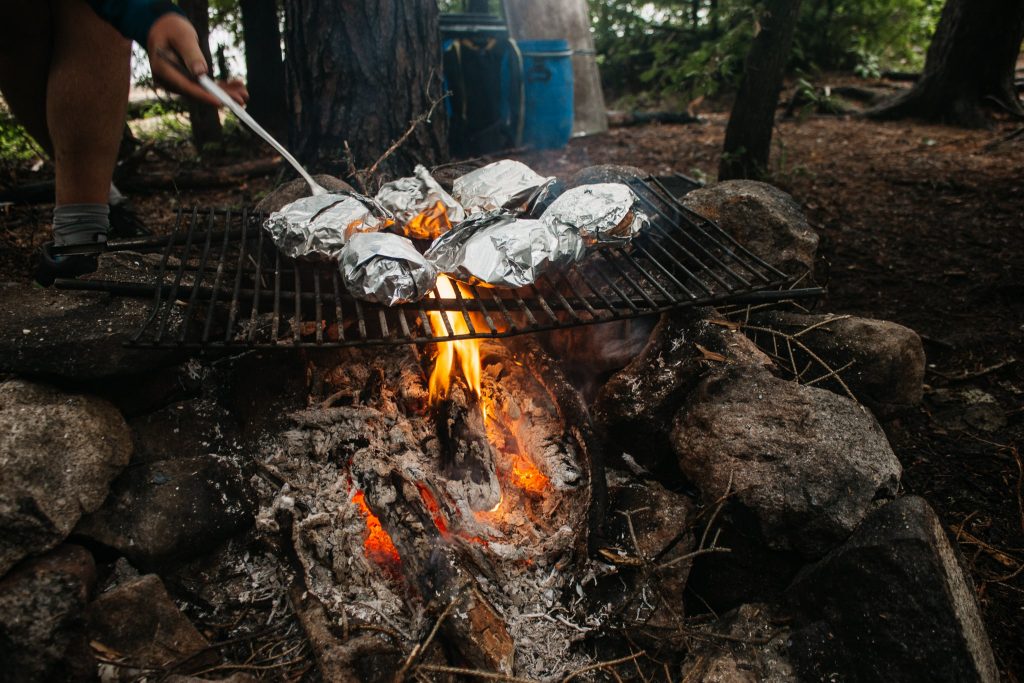
Sleeping Equipment
Tent : Obviously you’ll need a tent. The nice thing about canoeing (especially when you have short portages) is you don’t need to splurge on an ultralight tent. Store it in a dry sack so it stays dry throughout the day.
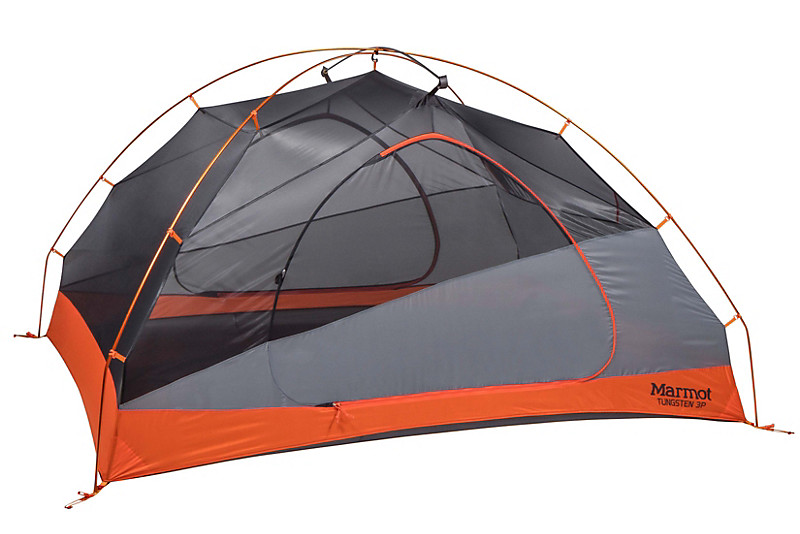
Sleeping pad and sleeping bag : Choose a three-season sleeping bag and sleeping pad. I also like bringing a compressible camping pillow (okay, maybe I’m a bit of a diva). If you’re worried about sleeping comfortably on trip, I have a whole post about strategies I’ve found to make sleeping in a tent better .

Pyjamas : I like to sleep in base layer pants/long sleeve shirt. I used to sleep in cotton pyjamas, but on one trip I found myself sweating a lot in the night. Since cotton takes forever to dry, my pyjamas stayed sweaty for the rest of the trip. Now I sleep in either wool or synthetic clothing.
Other Things to Bring
Here are some other items you can bring on your camping trip.
- Book, journal, pens, cards
- Headlamp and batteries
- Face wipes (I have a lot of tips for staying clean and fresh while camping )
- Compressible or blow-up pillow
- Hat and/or gloves if it’ll be cold
Once you’re packed, you’re just about ready to go! Before you head out the door, always leave a copy of your route and when you’ll be back with someone from home. That way, if something were to go wrong, someone will know where you were supposed to be and it makes finding you much easier.

Getting to Your Canoe Camping Destination
In the majority of cases, you will drive to the destination you are paddling. At least in Canada, there isn’t much of a public transportation network for accessing provincial and national parks, plus you will have a lot of equipment, so I recommend driving yourself.
For a lot of beginner canoe routes, you will be able to park right at the put-in. The “put-in” is canoeist slang for “where you PUT IN the canoe to start the trip.” Since a lot of beginner canoe routes are loops, the put-in will also be the take-out, “where you TAKE OUT canoe at the end of the trip.”
At the put-in, you will be able to load your canoe, get ready with your lifejacket and paddle, and be ready to get on your way!
Taking Your First Canoe Camping Trip
So you’ve done the preparation and packing. You’ve picked up your equipment. But now you’re standing at the shoreline, paddle in one hand, map in the other, and thinking “oh my goodness, what have I gotten myself into?”
But then you remember that you’ve read this post and you know exactly what to expect on your first canoe camping trip.
If you have no idea how to sit in a canoe or hold a paddle, do not fret. You will catch on quickly.
How do you hold a paddle? Please see an awkward photo of me below for reference. That is how you hold a paddle. In the photo, my left hand is gripping the butt of the canoe paddle and my right hand is holding the shaft.
Where do you sit in the canoe? The person in the bow (the front of the boat) is the powerhouse and lookout. Your responsibility is to look out for potential obstacles (a shallow rock or submerged log) and communicate that to the person in the back. That, and paddle. In the front, you only need to know the forward paddling stroke (though it doesn’t hurt to know how to draw – I’ll touch on this soon).
The person in the stern (back of the boat) is responsible for steering. You have three important paddling strokes to know. The forward stroke, the C-stroke and the J-stroke (though this one is kind of tricky so I’ll tell you a hack to avoid it).
In all honesty, reading a blog post about paddling strokes isn’t going to be particularly helpful. I recommend checking out YouTube videos on each of the strokes. (Wait, should I make paddling videos myself? Please comment below if you would watch me teach you how to paddle.)
Secret for the J-stroke : If you aren’t confident in your ability to do the J-stroke, what you can do instead is a pry stroke. After you do a forward stroke and the paddle is still in the water but pointed at the back of the canoe, push the water away from the back of the boat. This is called a pry and acts like a rutter (as on a sailboat or sea kayak). Check out this YouTube video on pry strokes .
This is the hardest thing about canoe camping, in my opinion. Especially in a park like Algonquin or Killarney where you have a ton of lakes and a ton of trees and it all looks, dare I say, identical?
First, you absolutely need to have recent and decent maps. You can purchase these at MEC or REI or at the outfitter directly. Store the bag in a waterproof map case or a ziplock bag to keep it dry.
Should you bring a compass ? Yes, you should. I know it sounds annoying and what if you don’t know how to read a compass? Well, I’m sure there’s a YouTube video on compass reading and they aren’t too expensive. Now, do I always carry a compass with me? No, I do not and I’m sure a lot of my friends don’t either. If you prefer not to carry one that is your choice, but my official recommendation is that you should bring one.
Ah, portaging. My least favourite part of canoe tripping. If you aren’t familiar, portaging takes place when you need to go from one lake to another or go around an obstacle in a river (like a waterfall). It involves hiking your gear from one side to another. Many people portage without having ever been taught how to do it – you pick it up quickly. Here are a few tips to make it easier for you (and some tips on portage etiquette):
- Easy portaging starts long before you hit the portage trail. When you back your boat, try to minimize the number of small, loose things you have to carry (i.e. tie water bottles and rain jackets to a backpack).
- Once you get to the portage, pull all your gear out of the water and out of the way. This will allow other people to use the portage too.
- Carry the canoe first because they are worse to carry.
- Carry the backpacks and barrels on the second trip. Load them directly into the canoes at the end of the portage.
If you want to learn more, I’ve written an entire post about how to portage (and a bunch of tips to make it easier).
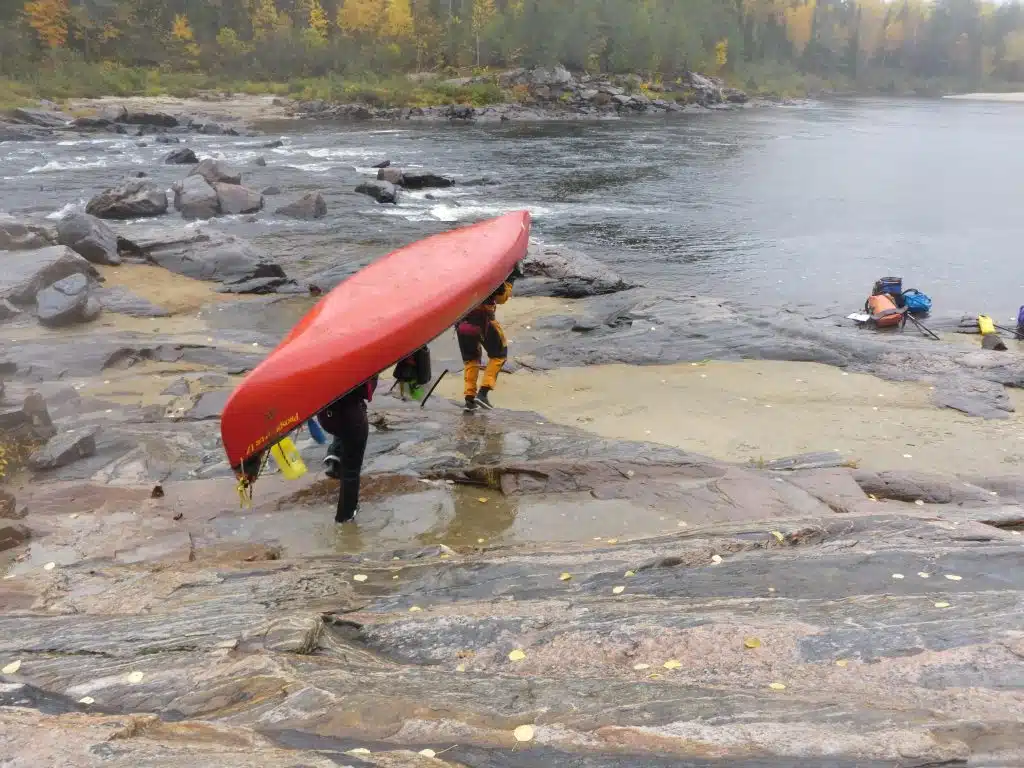
I hope this guide has inspired you to get out canoe camping, and given you the resources to do so safely. Any outstanding questions? Leave a comment below.
More Resources
- A Beginner’s Guide to Scouting Rapids
- How to Get Started in Whitewater Canoeing
- 10 Tips to Help You Sleep Better on a Camping Trip
- The Ultimate Canadian Canoeing Bucket List
Mikaela | Voyageur Tripper
Mikaela has been canoeing, hiking and camping for over ten years. She previously worked as a canoeing guide in Canada, and spent a season guiding hiking and kayaking tours in the high Arctic. Mikaela is a Wilderness First Responder and Whitewater Rescue Technician.
MY FAVOURITE GEAR
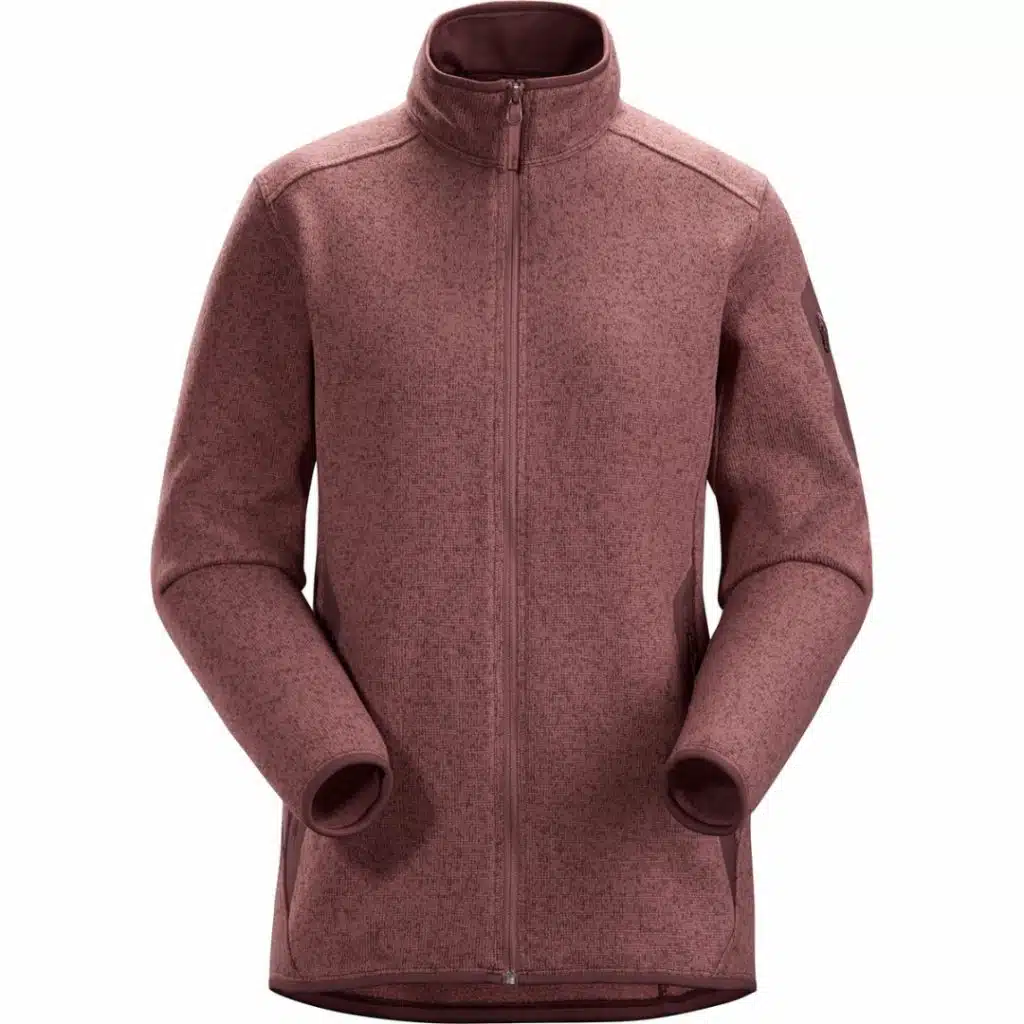
Fleece Sweater
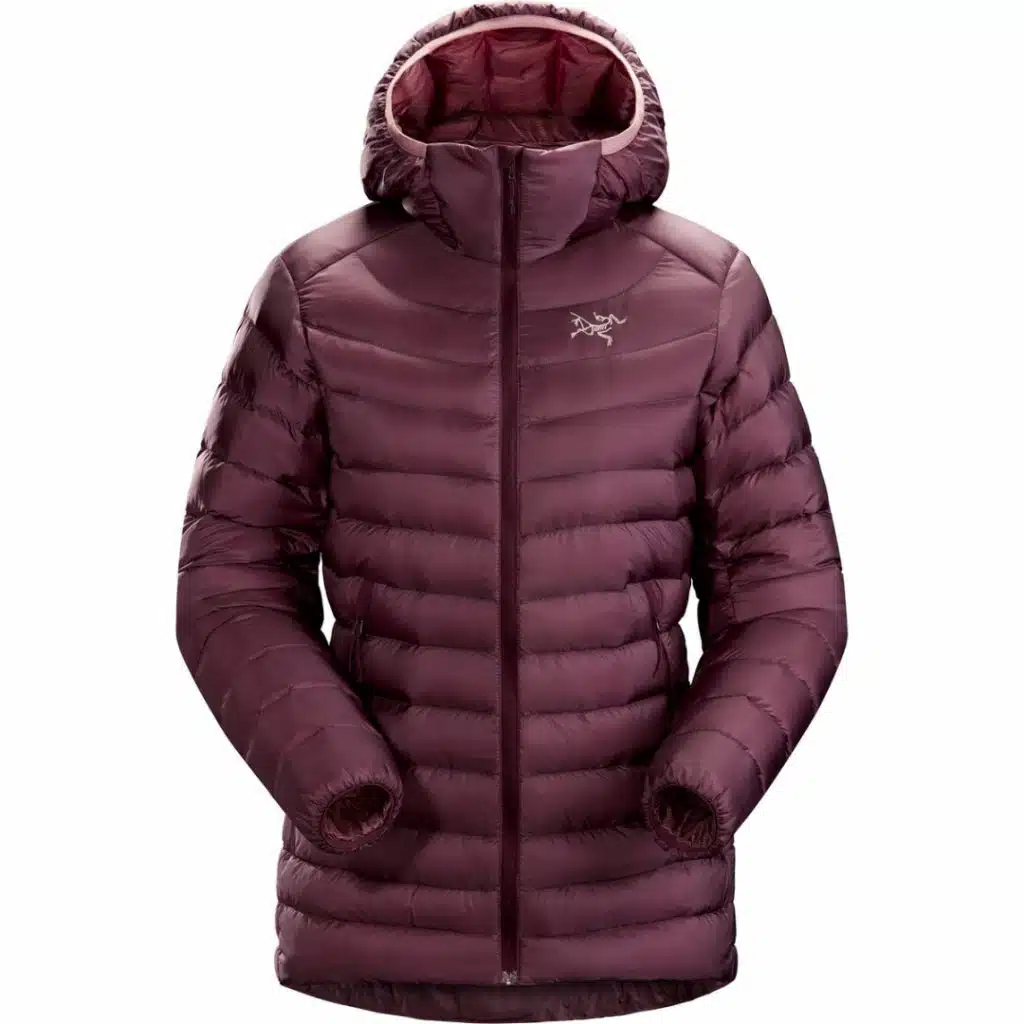
Down Jacket
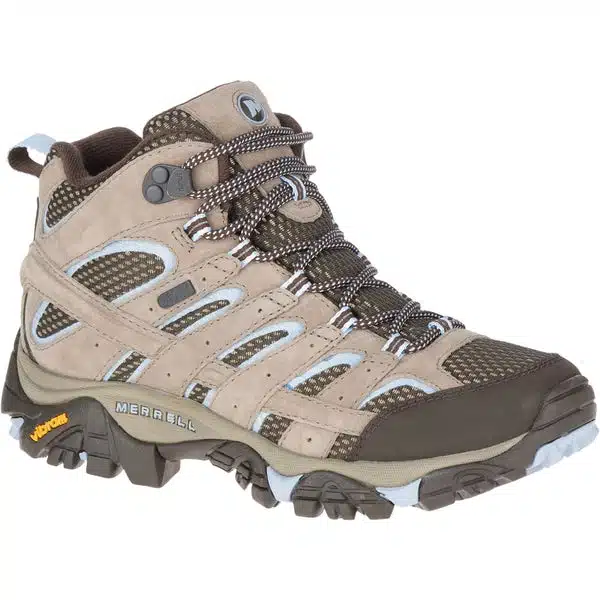
Hiking Boots
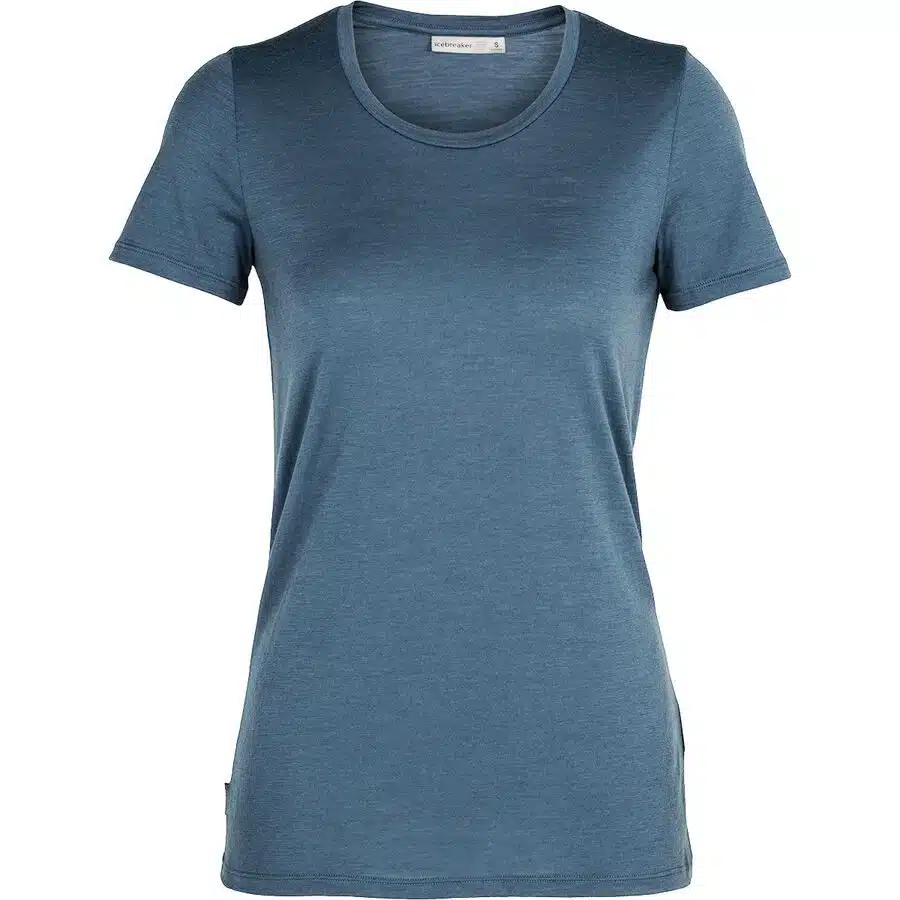
Hiking Shirt
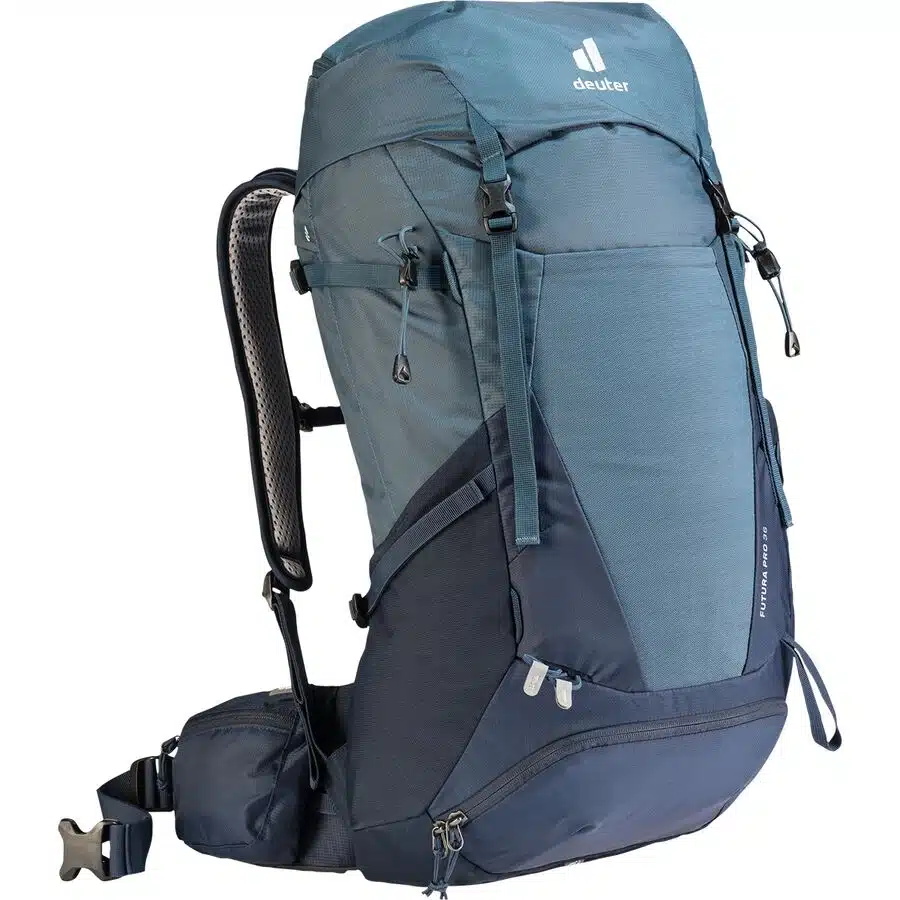
Hiking Pants
2 thoughts on “ The ULTIMATE Guide to Canoe Camping ”
Stay in touch.
Join our community of outdoor adventurers - you'll find trip inspiration, gear discussions, route recommendations, new friends and more!
Barrels are waterproof but they are definitely not bearproof. You should hang your food.
Been meaning to update that line! Thanks for the reminder. That said, I still don’t advise people to hang barrels. 1) Barrels tend to be very heavy and I’ve heard of a few people getting themselves injured by attempting to hang a heavy barrel. 2) Most people don’t know how to properly hang food (nor are there sufficient trees for hanging food) so it’s ineffective. I advise people to use the barrel harness to secure the barrel to a tree so the bear can’t wander off with it. That said, unless you’re in an area with a lot of bear activity and habituation (Algonquin), you’re very unlikely to encounter a bear trying to mess around with your barrel.
Leave a Reply Cancel reply
Your email address will not be published. Required fields are marked *
Save my name, email, and website in this browser for the next time I comment.
- Facebook Group

IMAGES
VIDEO
COMMENTS
Find out how to make breakfast sandwiches, cinnamon buns, oatmeal, burritos, hummus bowls and more on your next canoe trip. These recipes are easy, delicious and backcountry-adapted for your outdoor adventure.
Suggestions for Non-Perishable Canoe Food. Here are some of the best canoe trip meals and snacks that are quick to prepare and and lightweight to carry. Peanut butter and jam/jelly wraps. Instant oatmeal packets - good canoe trip breakfast option. Packaged pasta kits (e.g. just add water mac & cheese) Instant noodles.
For light sweaters, 0.5-1 liter of water per hour is a good estimate, whereas heavy sweaters can lose up to 2 liters of water per hour. You also need to eat foods with salt to stay hydrated. You can lose 100-4000 mg of sodium (salt) per hour, depending on how much you are sweating and how salty your sweat is.
Learn how to make delicious and nutritious meals for your canoe camping trip with these easy and tasty recipes. From date maple nut oatmeal to campfire spaghetti, you'll find options for every taste and occasion.
Main Menu. Home; Camping Tents; Rooftop Tents; Food; Tips; Guides; Canoe Camping Meals: Guide to Easy and Nutritious Options for Paddlers
Oil for frying. Rehydrate the beef, veggies and pineapple by putting in a pot with just enough water to cover - bring to boil, remove from heat, and let sit for about an hour while you set up your tent. Drain the water into a bowl. Make the sauce by adding soy sauce, and brown sugar to taste.
Meal Plan for Canoe Camping Day 3. Canoe camping tip: dehydrated meals are supposed to be for 2 people, but if you are working hard, go with one per person. Breakfast: Instant oatmeal w/ dried fruit (raisins, blueberries, banana chips, etc.) Lunch: Salami and cheese tortilla wraps (meat and cheese also wrapped in vinegar-soaked cheesecloth ...
Make a column for each day of your trip and allocate room for three meals, one dessert and two official snacks on each day, along with an indication of daily water supply required (and where it will come from). Make space for other beverage allocations (juice, coffee, tea and alcohol if you fancy) too. Make a note under each daily column of the ...
Canoe Camping Eats: 10 Easy Canoe Trip Recipes Posted on Month 24, 2022 July 24, 2022 by Mikaela | Voyageur Excursion After a extended day of paddling and portaging, there are few matters better than starting a fire and cooking up a nice warm meal.
Canoe Camping Meal Ideas After a long day of paddling and portaging, there are few things better than starting a fire and cooking up a nice warm meal. Backcountry cooking is one of my favourite parts of a canoe trip, so I love any opportunity to experience backcountry-adapted gourmet canoe trip meals.
Get in touch with our friendly Customer Service team today: 715-755-3405 • [email protected]. More for you…. 8-minute read By Sharon Brodin A multi-day canoe trip is a unique wilderness experience that, like backpacking, means you pack your food wherever you go.
Cajun Fire Fish Burritos. Cajun Lake Trout. Knife Lake Pete's Cornmeal Fish Fry. Lemon Garlic Walleye. Lemon Pepper Lake Trout. Poor Man's Lobster (Poached Fish) Soggy ShoreLunch. Sweet and Sour Walleye. Trout with the Trimmings.
Also, you will find some practical tried and true camp meal ideas that are straightforward and well balanced for whatever your adventure may be. In this post I'll share an example canoe trip meal plan as well as a few tips on the process of planning and preparing food for a multi day trip. So let's get to the point. Tips 1.
1 cup (125 mL) water. 1/2 cup butter, margarine, shortening or other animal fat (Bacon grease will suffice) Vegetable oil, for frying. Preparation: In a pot or bowl, mix all the powdered ingredients together. Add the fat last (it's easier if you can melt it). Pour in water and mix with fork, don't knead.
Last summer, our 'freezer' cooler lasted 8 days on our NE Mistissibi Canoe Trip in Quebec and that was 2 days with temperatures reaching into the middle 80s! MEAL IDEAS FOR CANOE TRIPS. Dinners consist of locally raised rib-eye steaks, wild caught salmon, pork loin, spaghetti with homemade sauce, taco soup, chicken, rice, vegetables ...
Wraps, summer sausage (or pepperoni) and cheese. To prepare: Pull a burrito wrap out of the package, slice summer sausage and cheese. Wrap it up and eat. To pack: To preserve the wraps in your food bag, wrap them around the outside of bag so that the wraps follow the contours. Options: On a cold, wind day consider cooking the wrap in the fire.
He starts by packing a few staples: salt, butter, a little cooking oil, dried fruit and mushrooms, wild rice, a couple spice mixes. And though he brings an emergency supply of dried food, he ...
Show than a tastier way go replenish calories and tracking away hunger, the meals you make with those you travel with are the of the best means to bond. Canoe camp trips need reflective meal planning to ensure it don't carry too more weight for the portages. It's hard to overstate how critical a good meal is to the expert.
Kitchen gear to pack for your canoe trip Food & drinks. There's nothing like a good meal after a long day on the water. Depending on the length of your trip and how much you can bring, pack accordingly. Calories, protein, goodies, oh my. Meals: Create a meal plan for your canoe trip. Search for recipes or buy pre-packaged dehydrated meals.
Canoe Trip Breakfast Ideas 1. Breakfast Sandwiches. Another great choice is breakfast sandwiches. If it's early in the trip, you can bring English muffins. If you want to have this meal later into the trip, you can use wraps, powdered egg and bacon bits or sausage.
Dinner: Pick up food on the road, while driving home . Hopefully this gives you some good ideas for menu and meal planning in the Boundary Waters! Now go have a great trip! Read more: The Boundary Waters Canoe Area Itinerary: A True Wilderness Experience. What to Pack (and Not to Pack) For a Boundary Waters Canoe Trip
Pro tip: Don't plan to be paddling for a full 8 hours each day - that isn't an enjoyable way to get started in canoe camping. Keep the trip easy so you can focus on other skills (cooking, setting up a tent) in addition to paddling. Also, you will likely overestimate your speed, so plan on only paddling 4-5 hours per day.